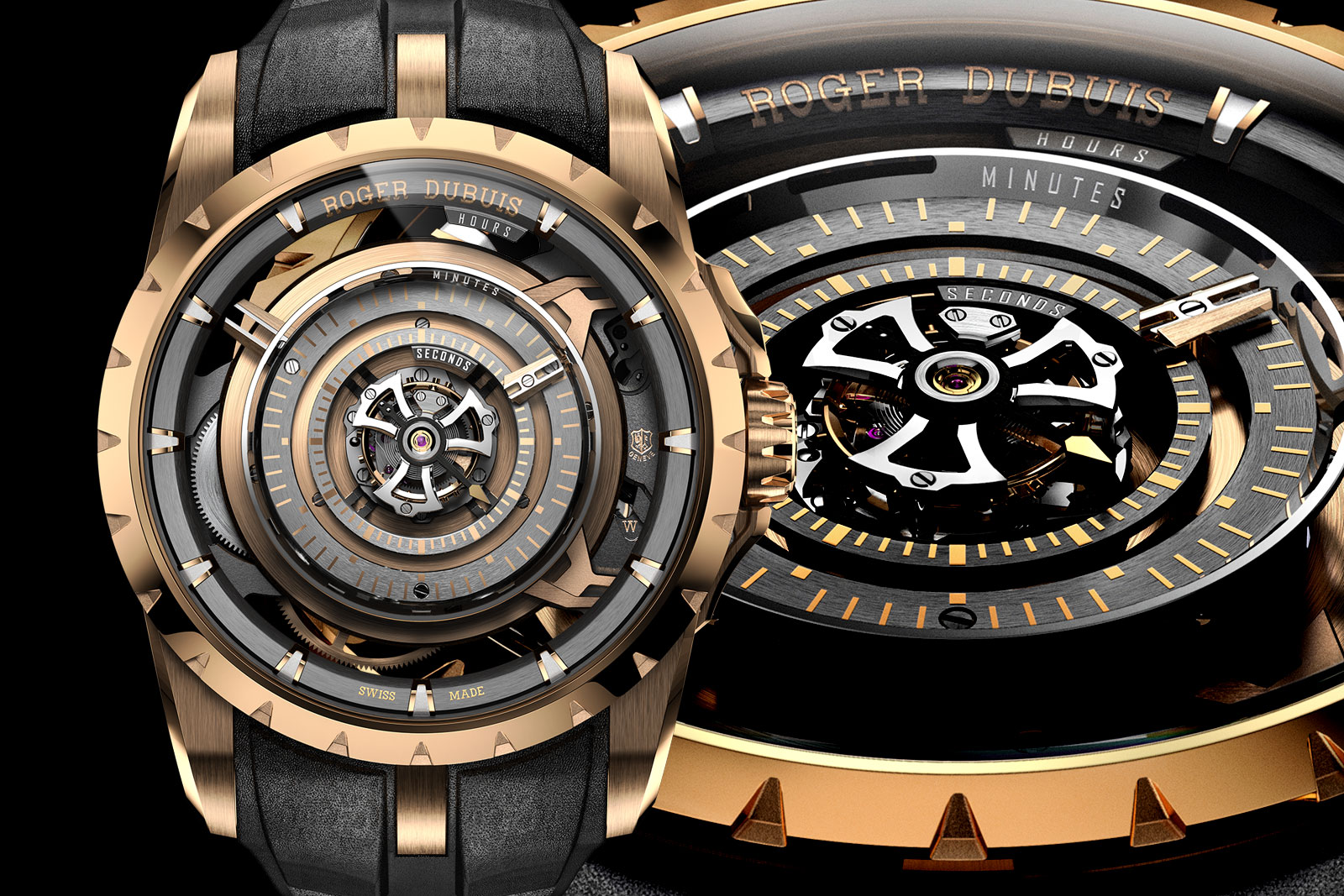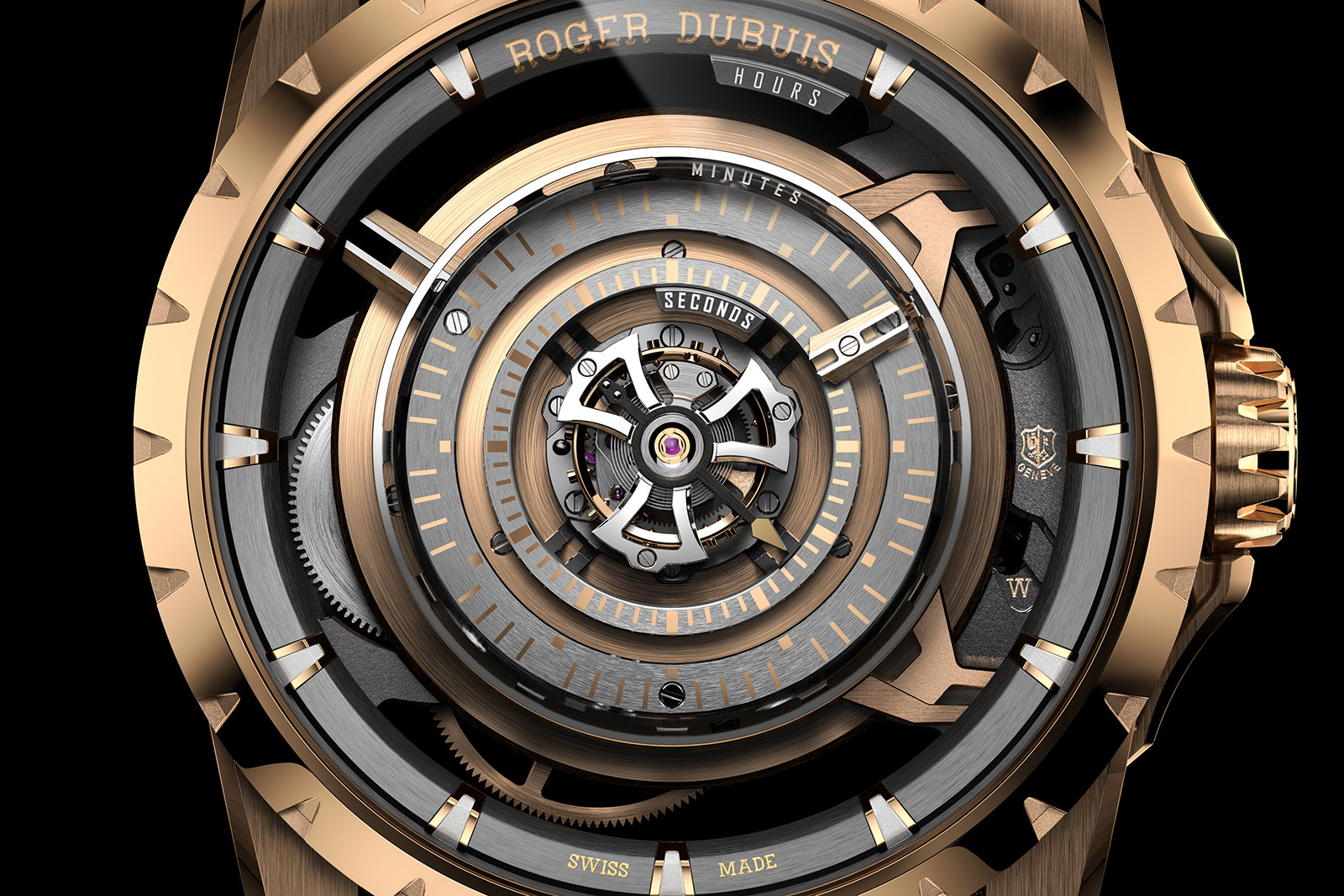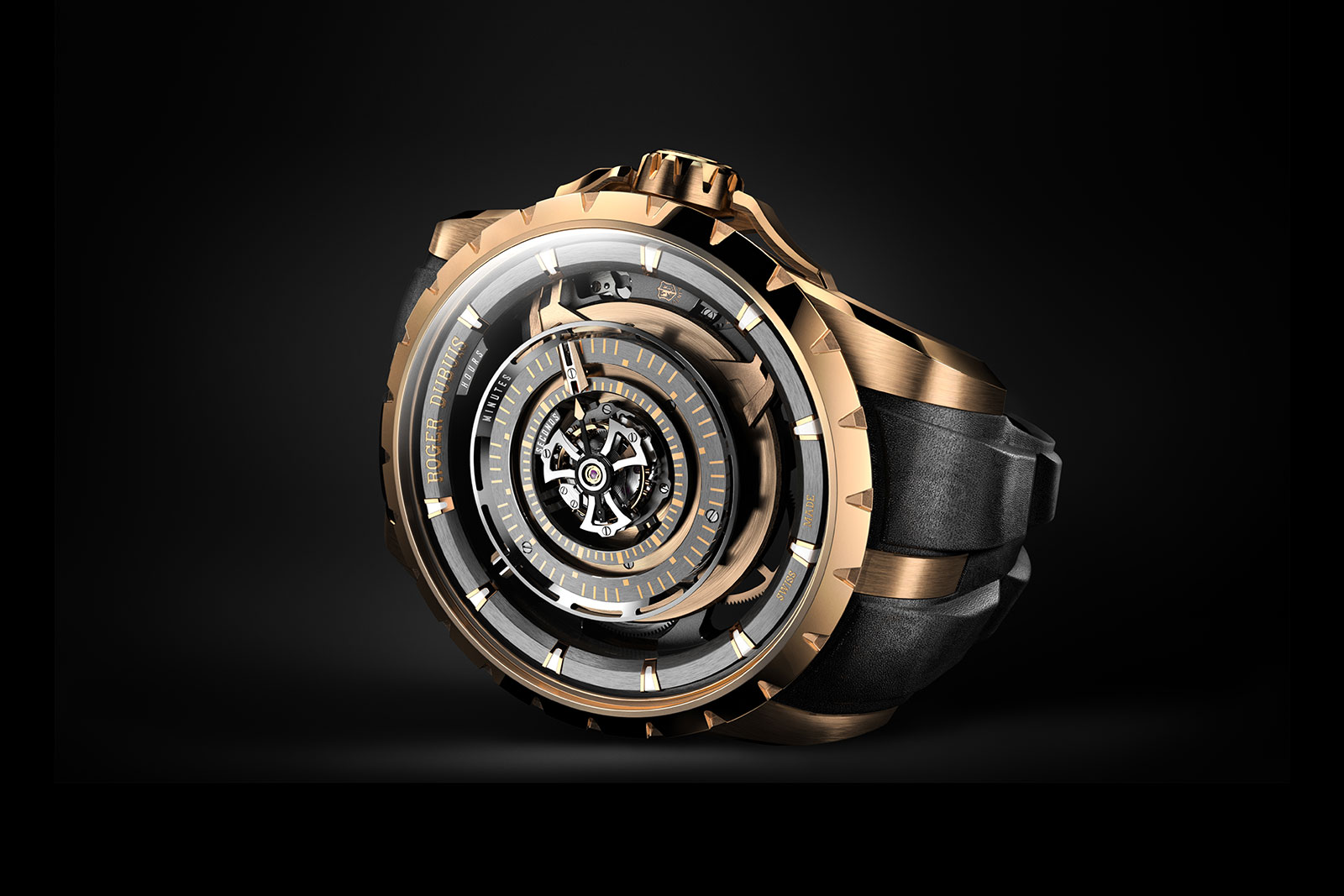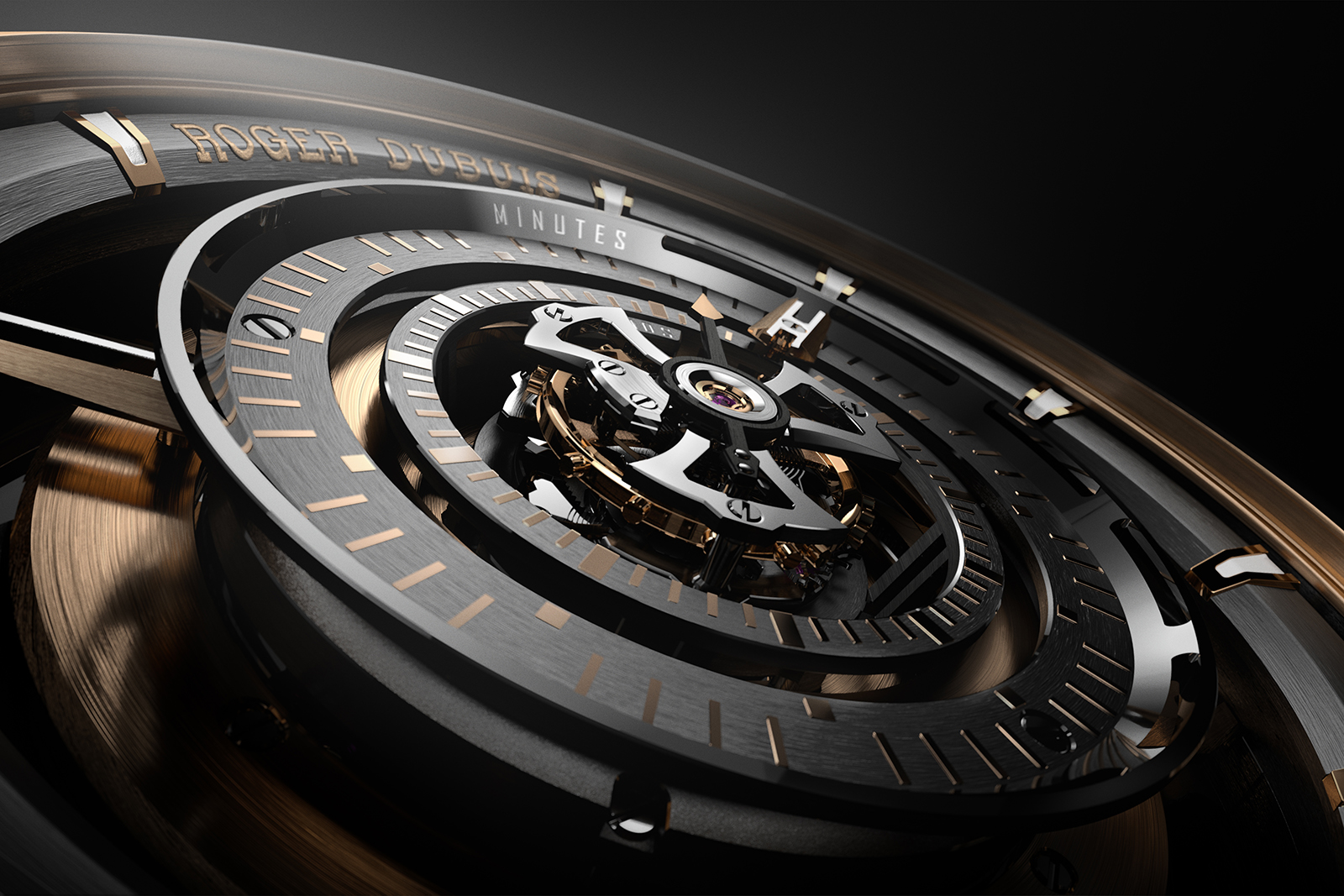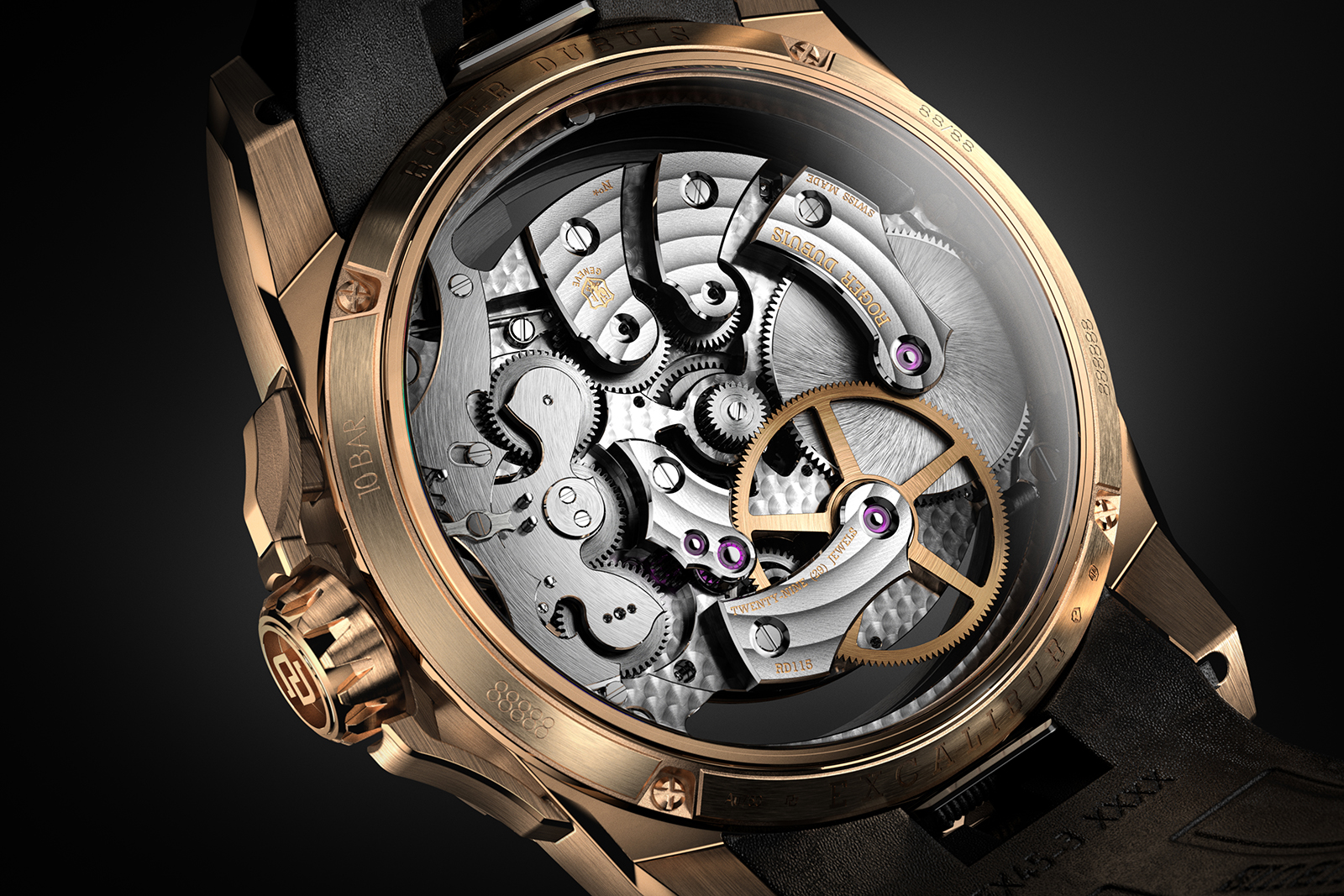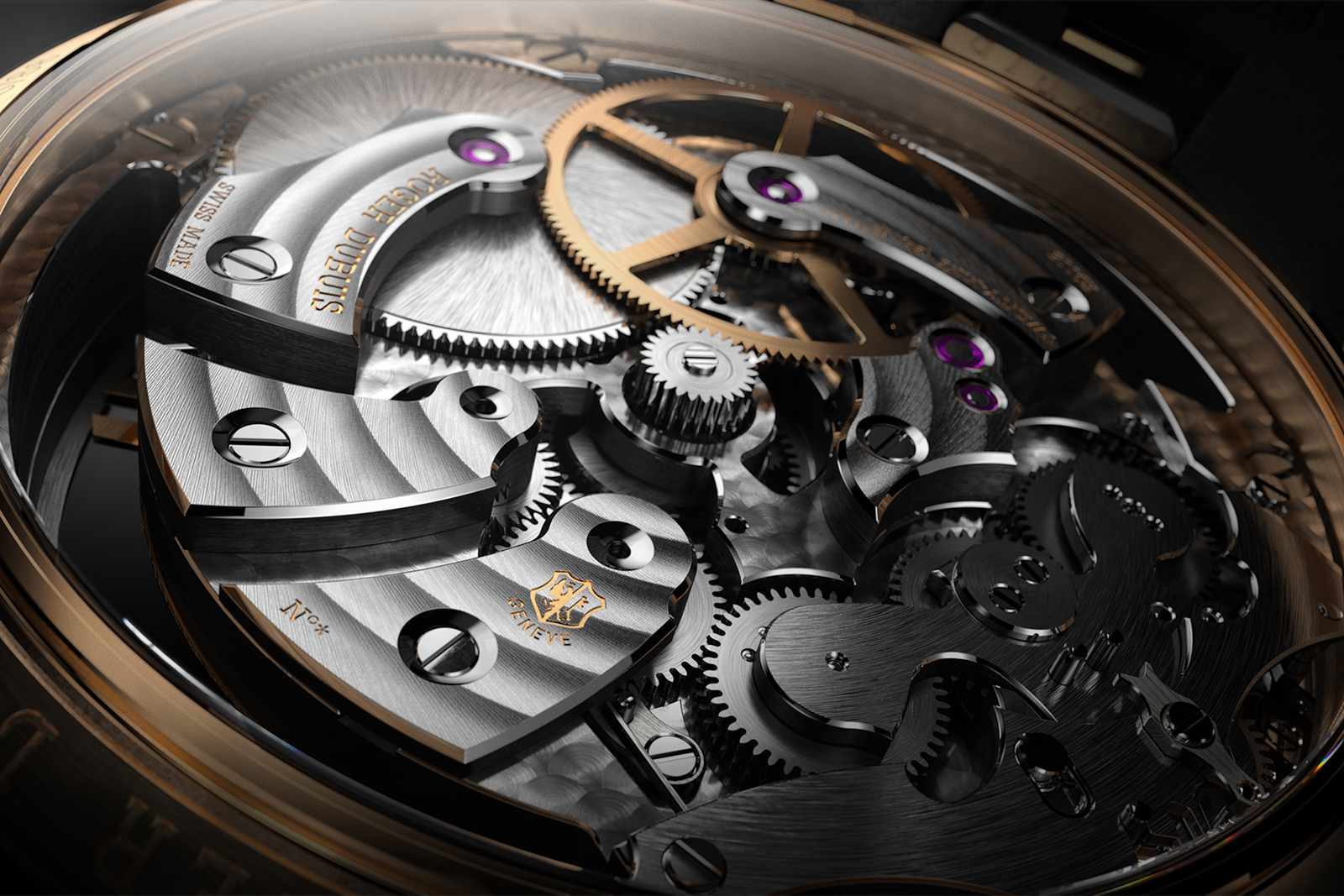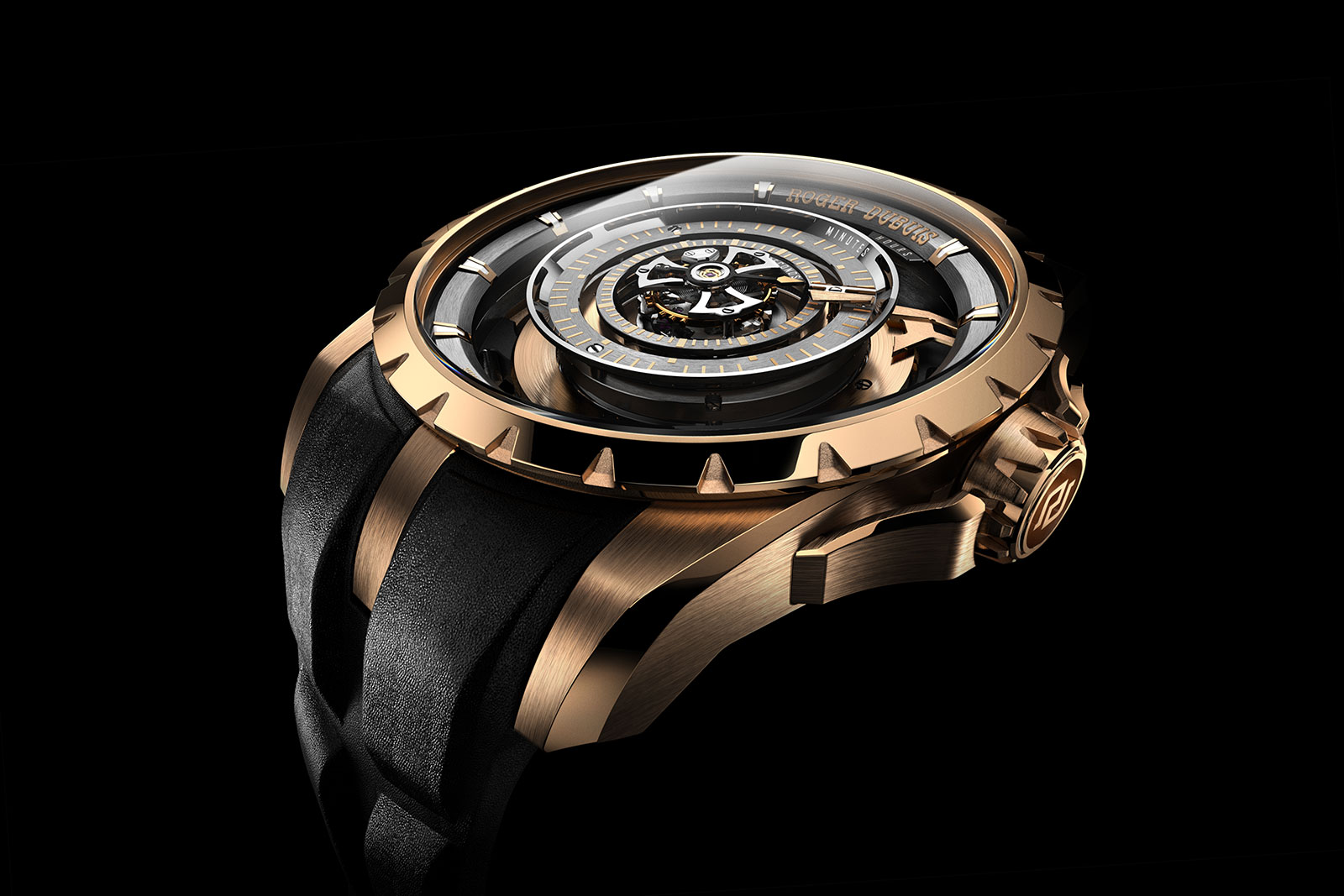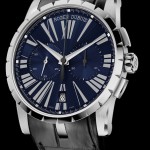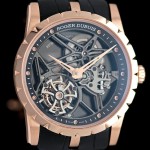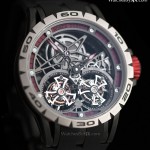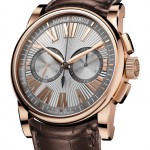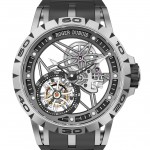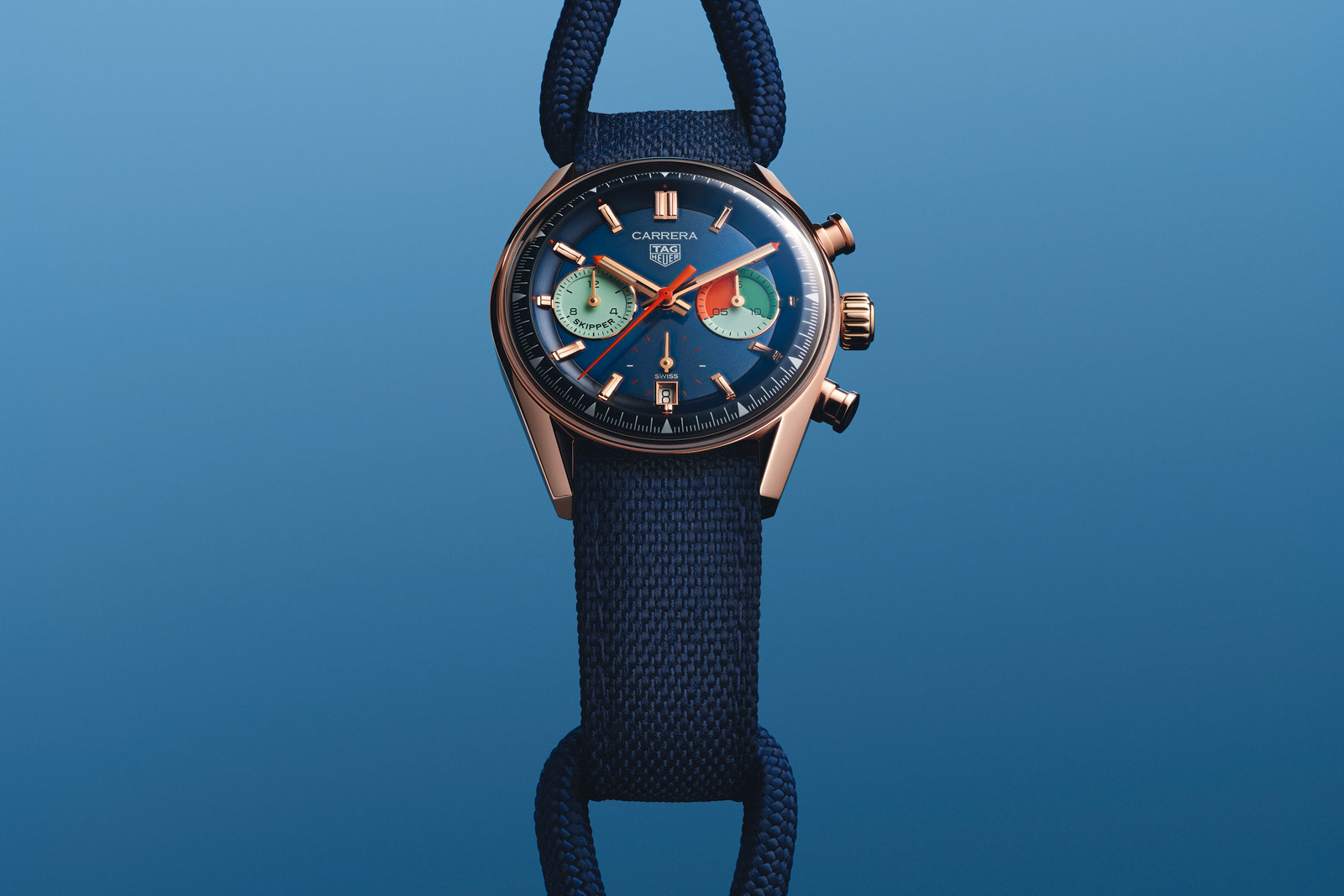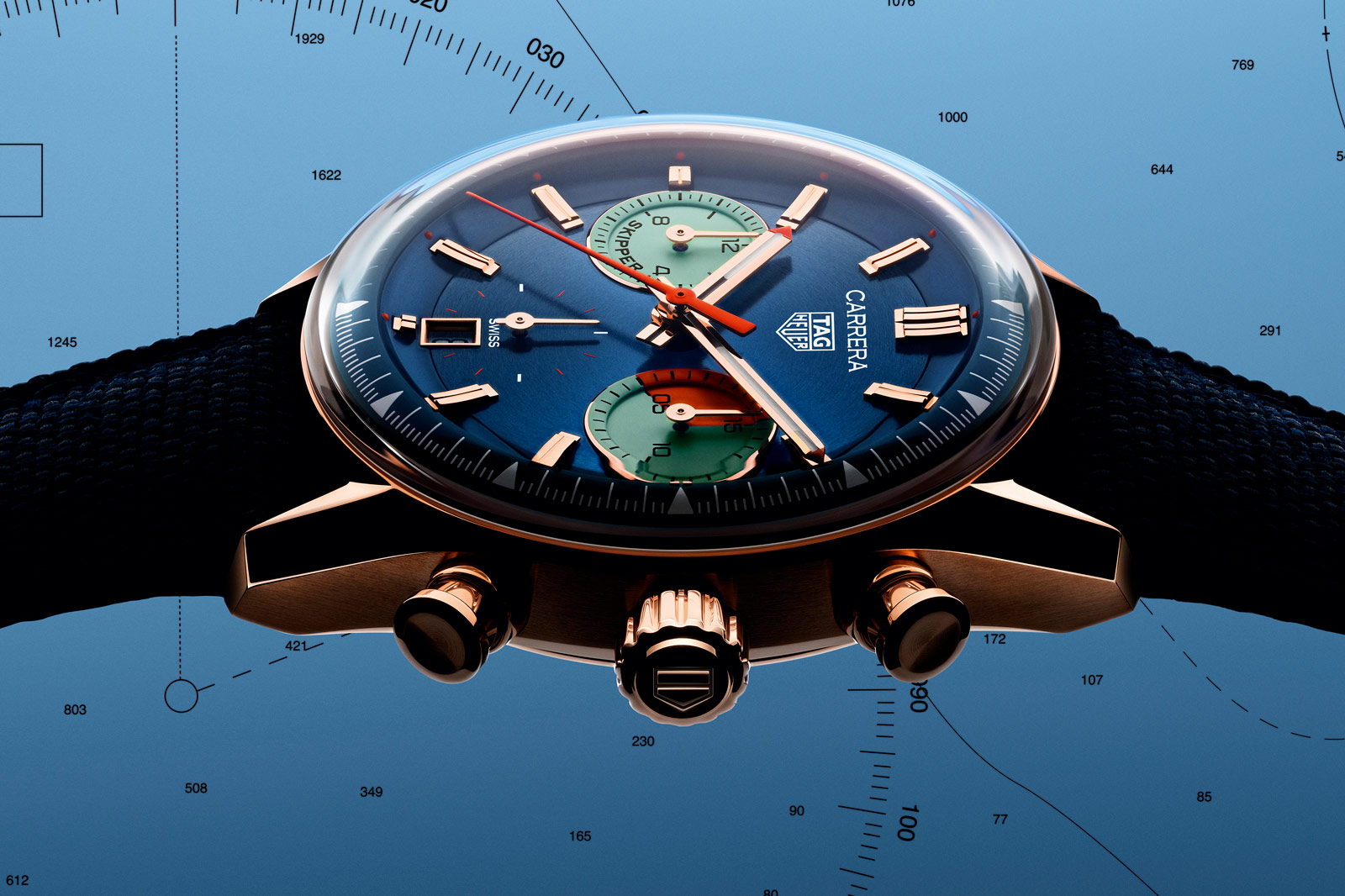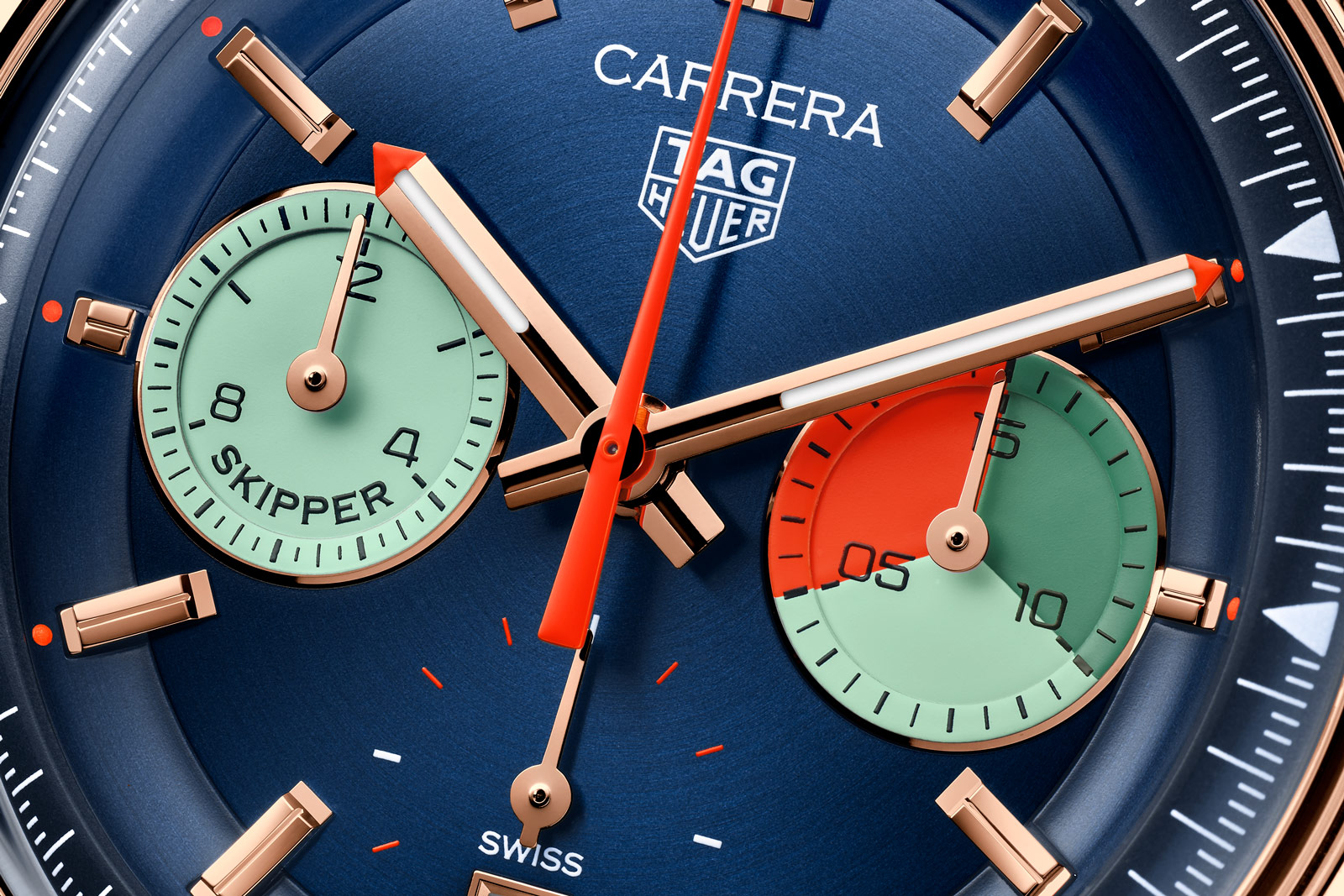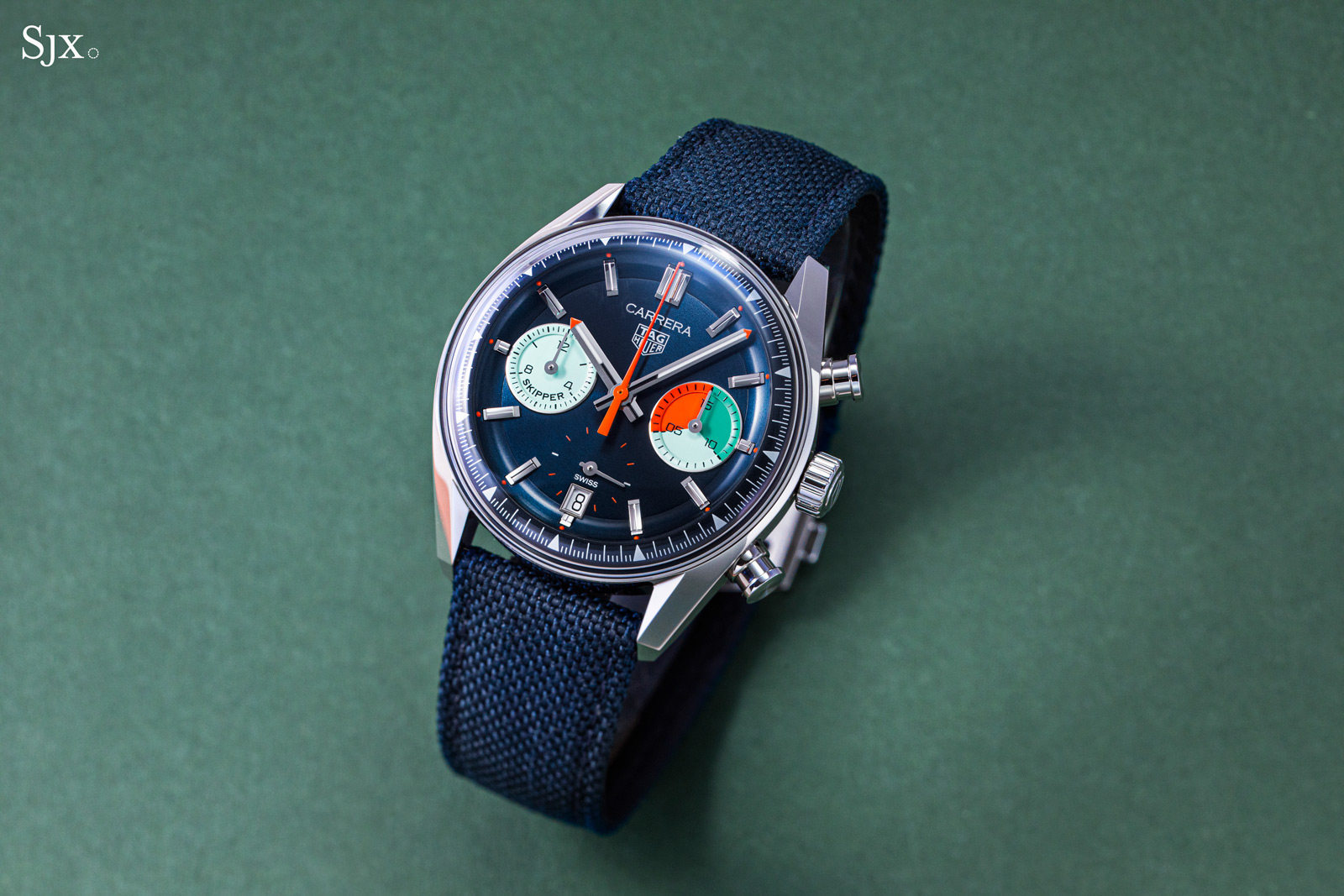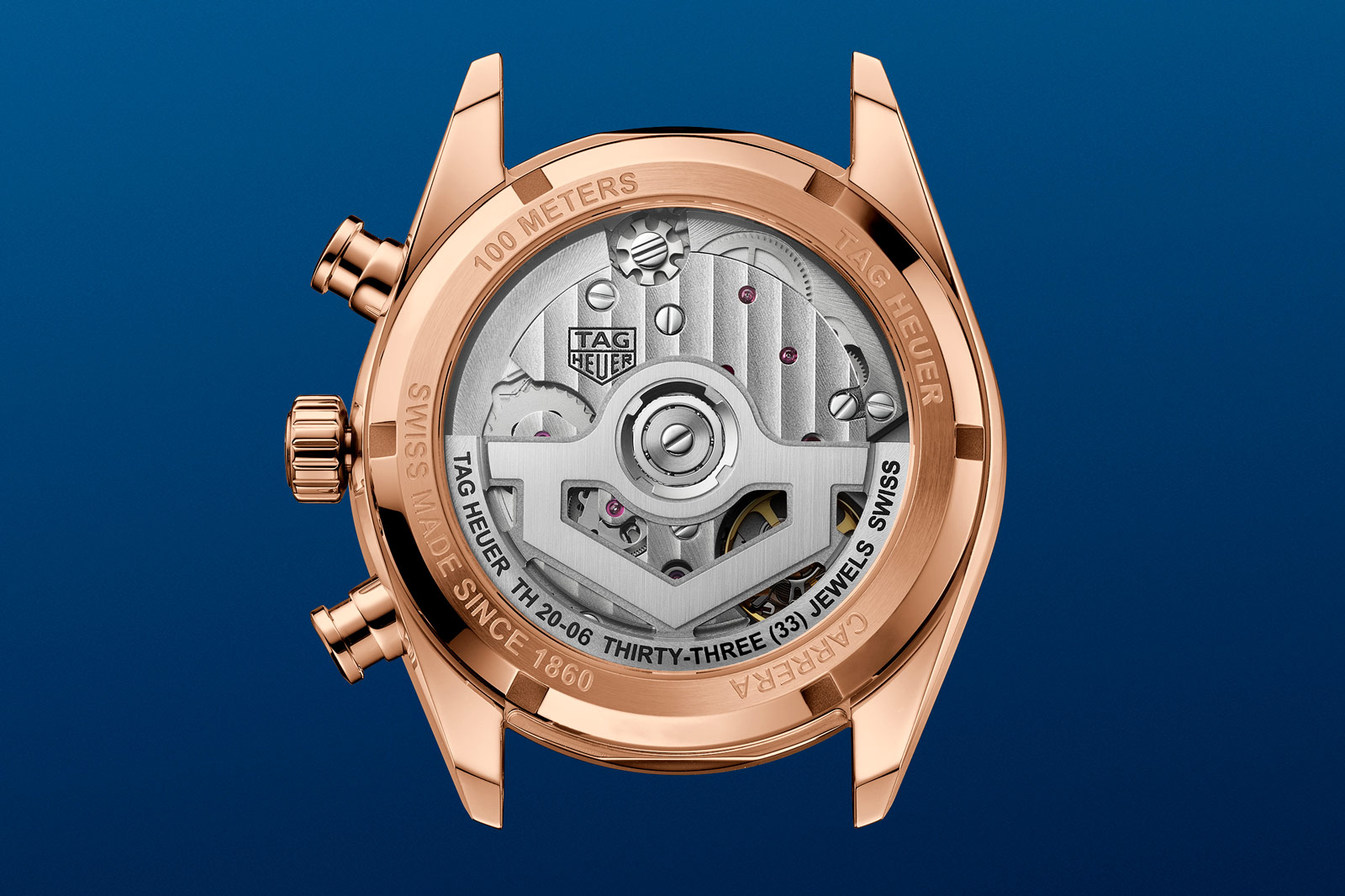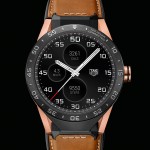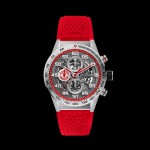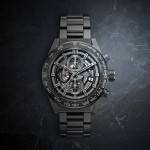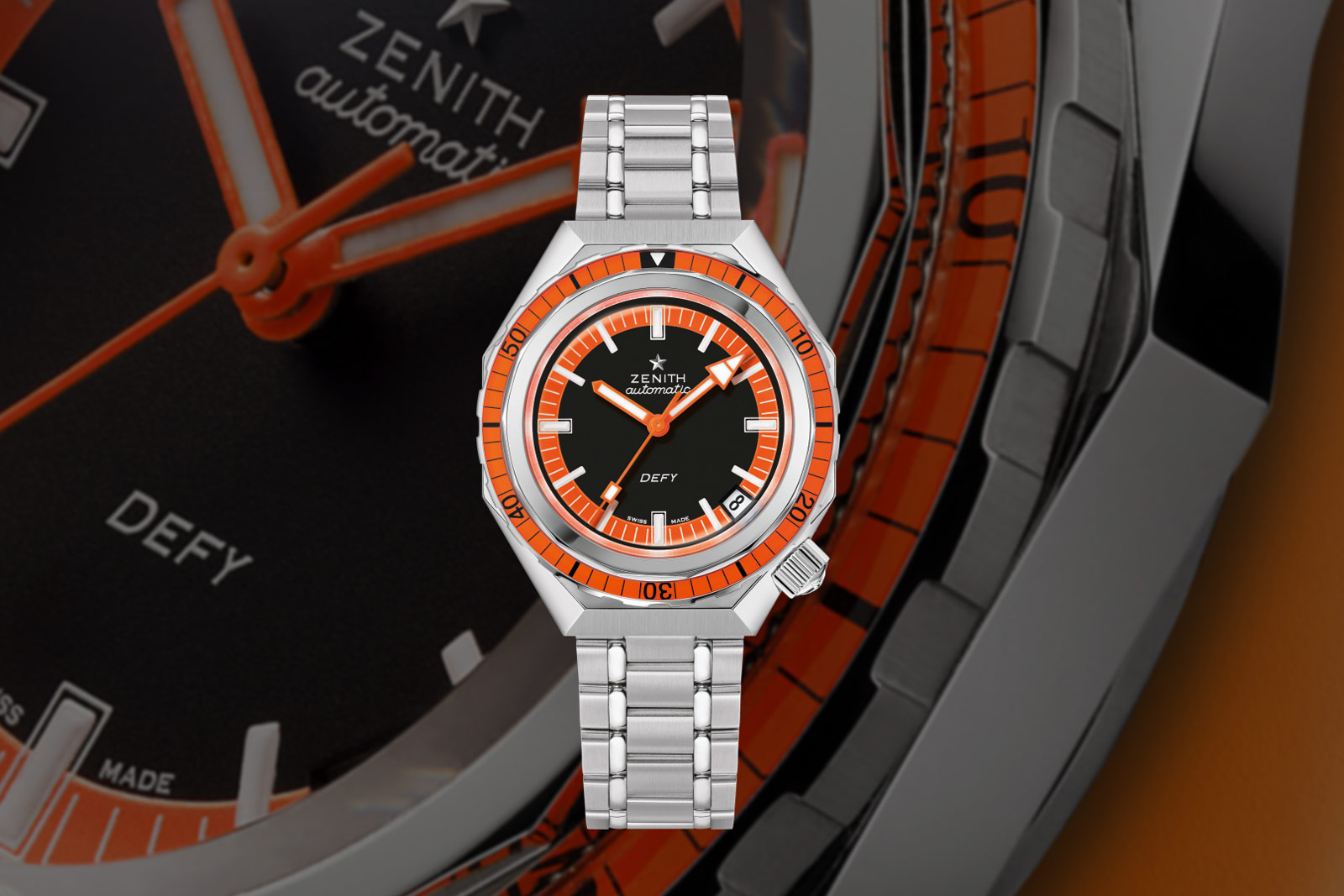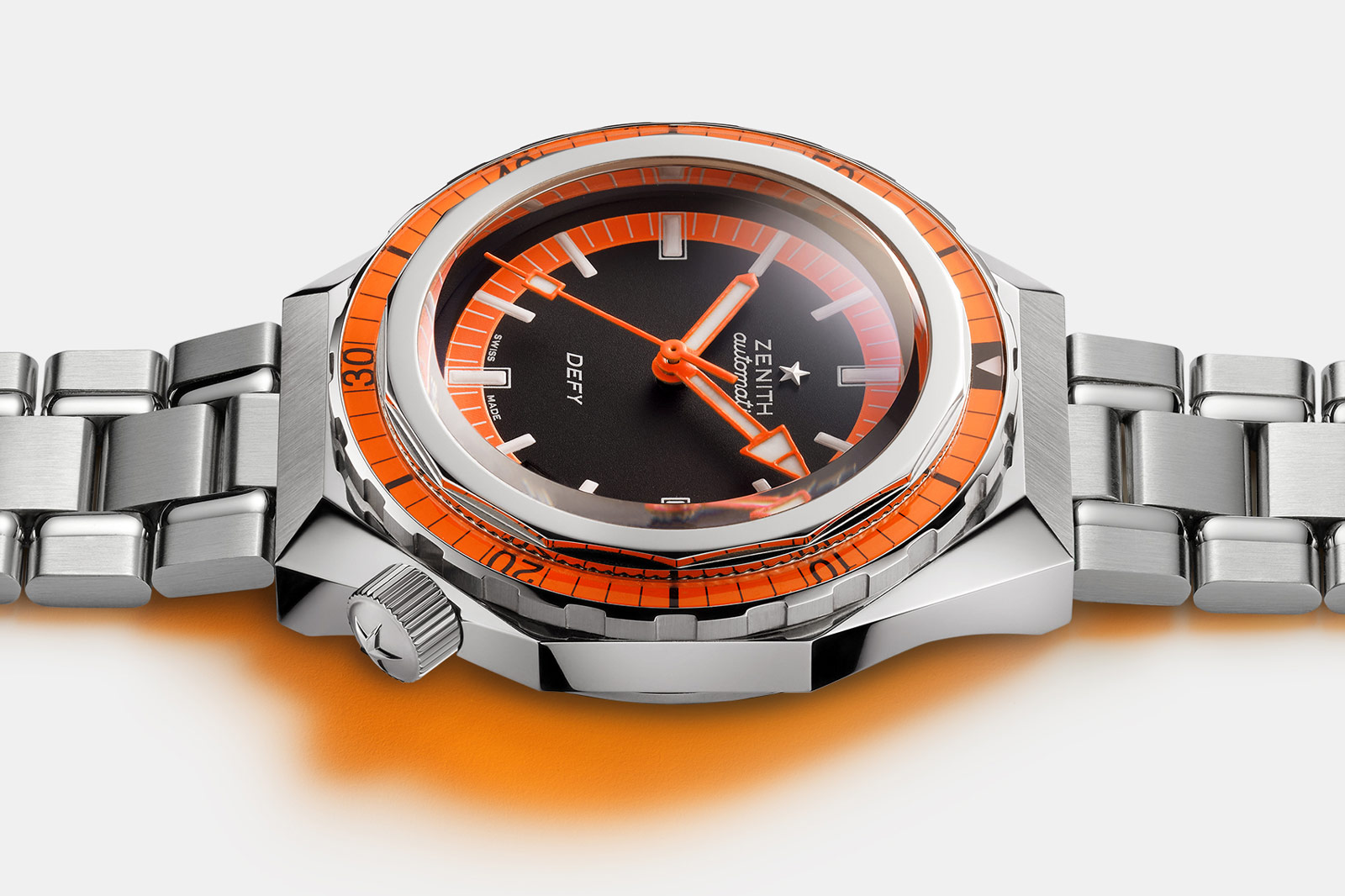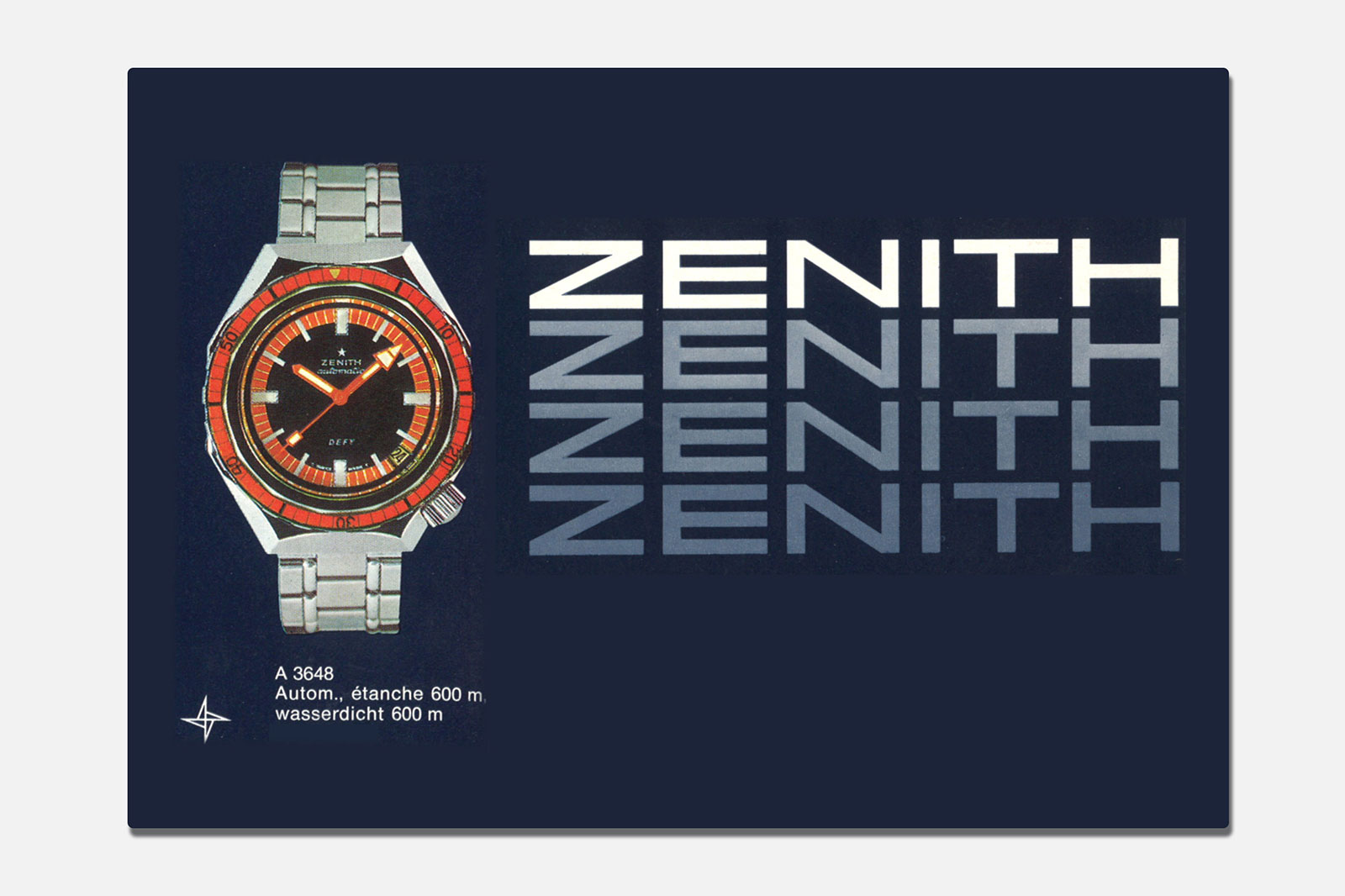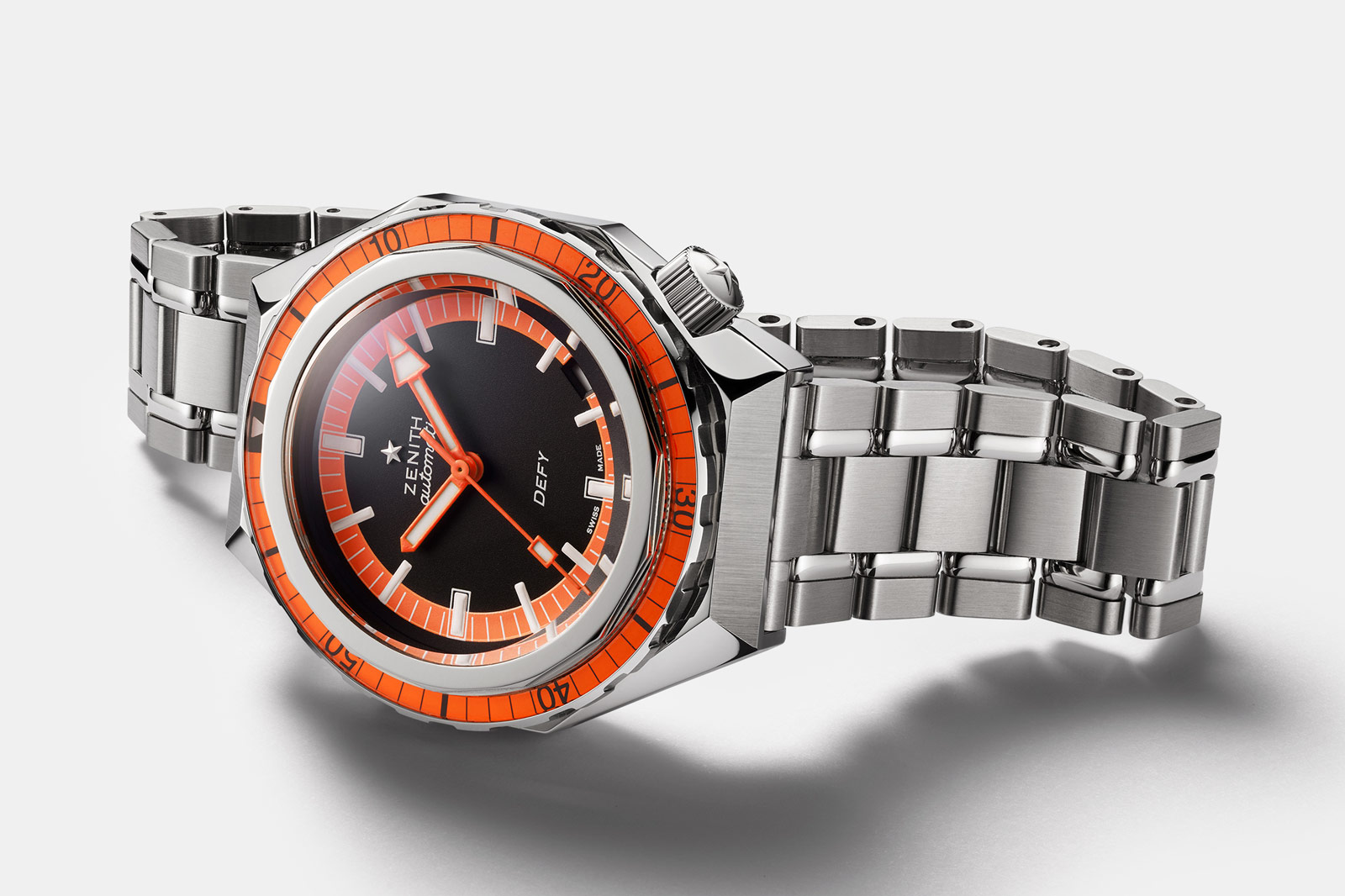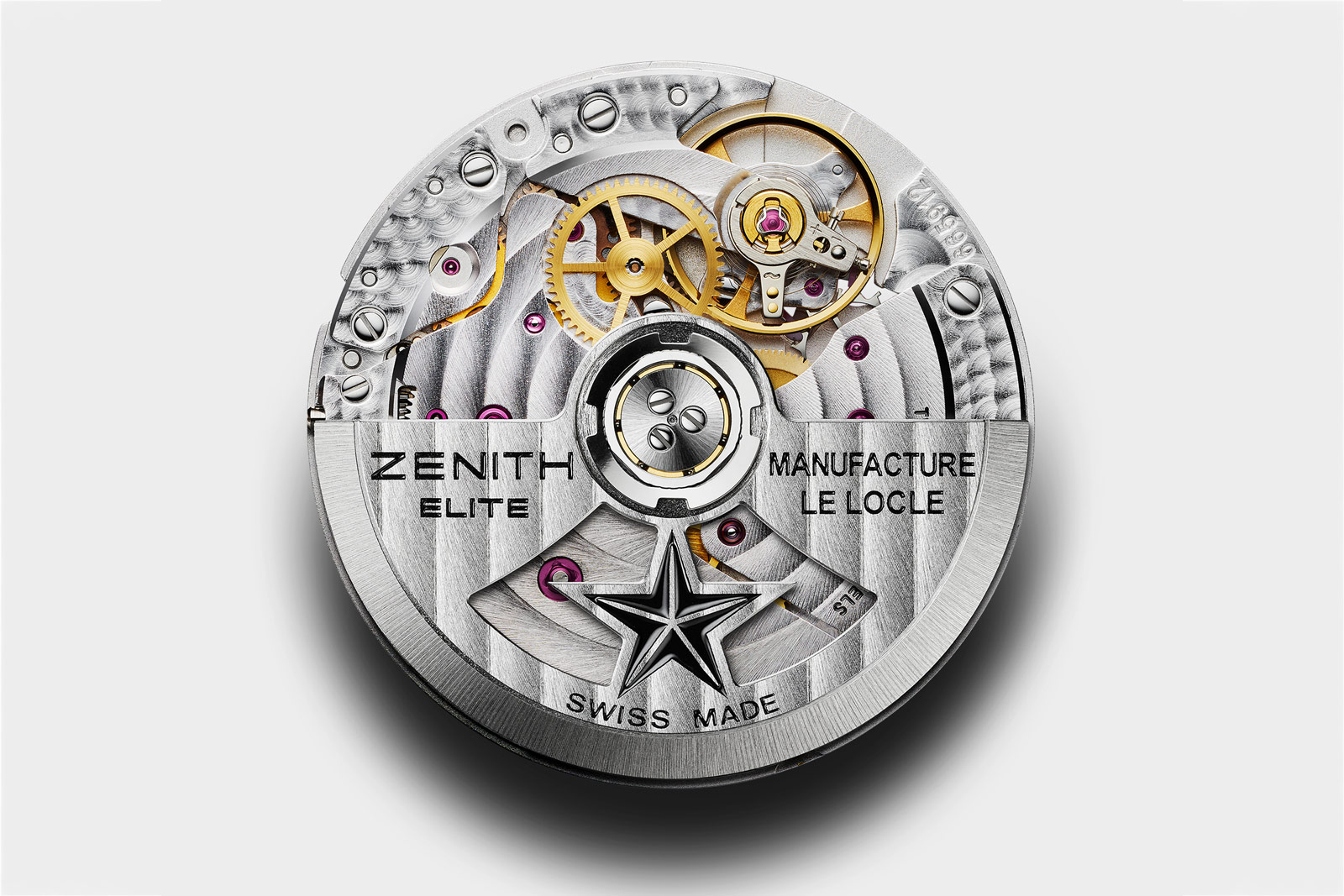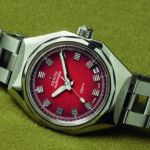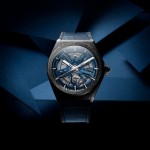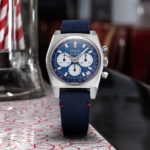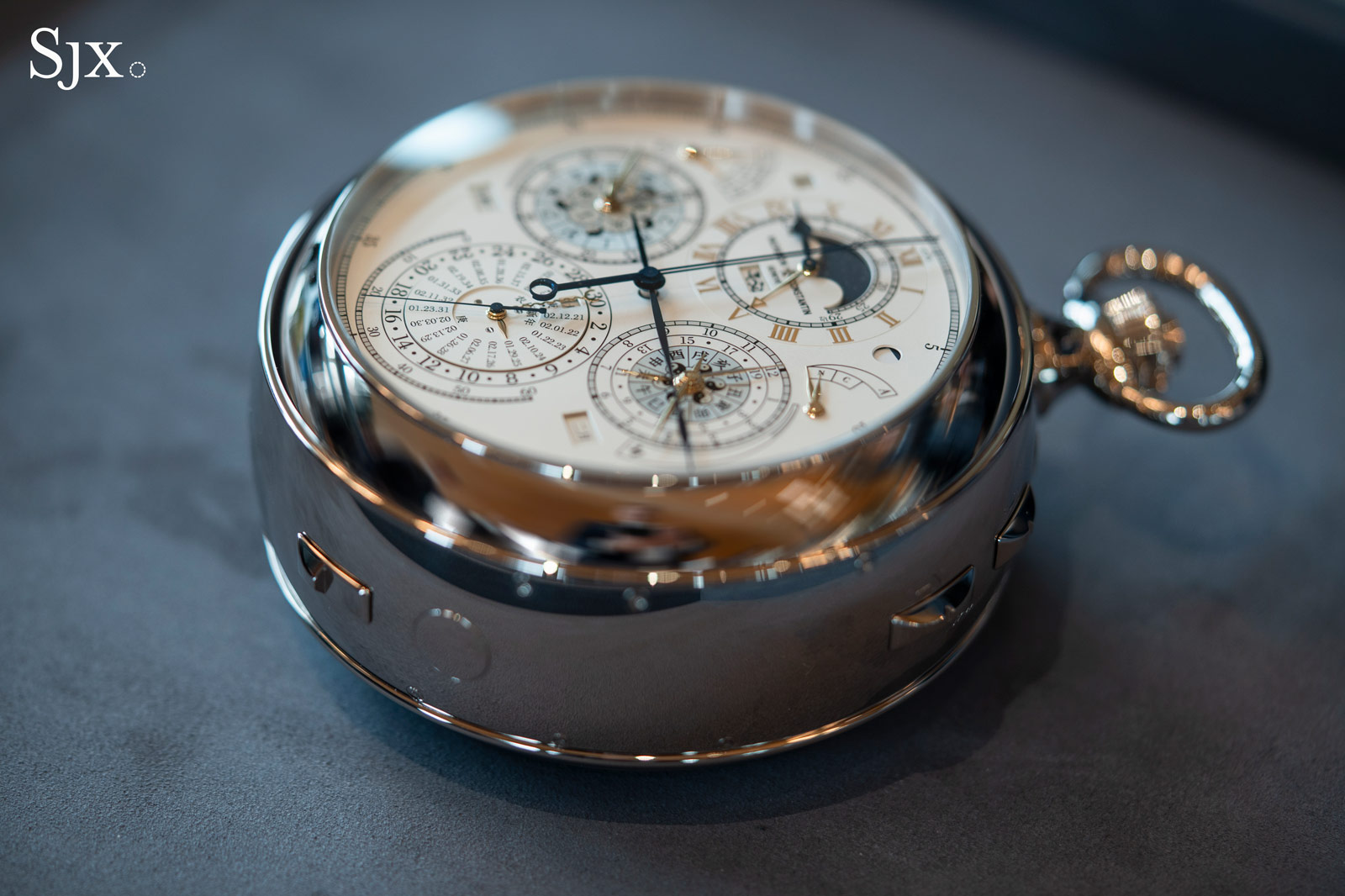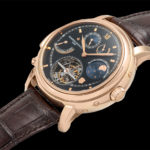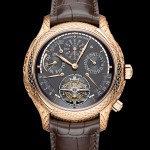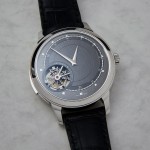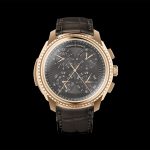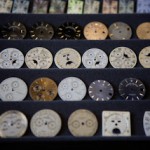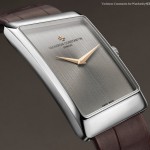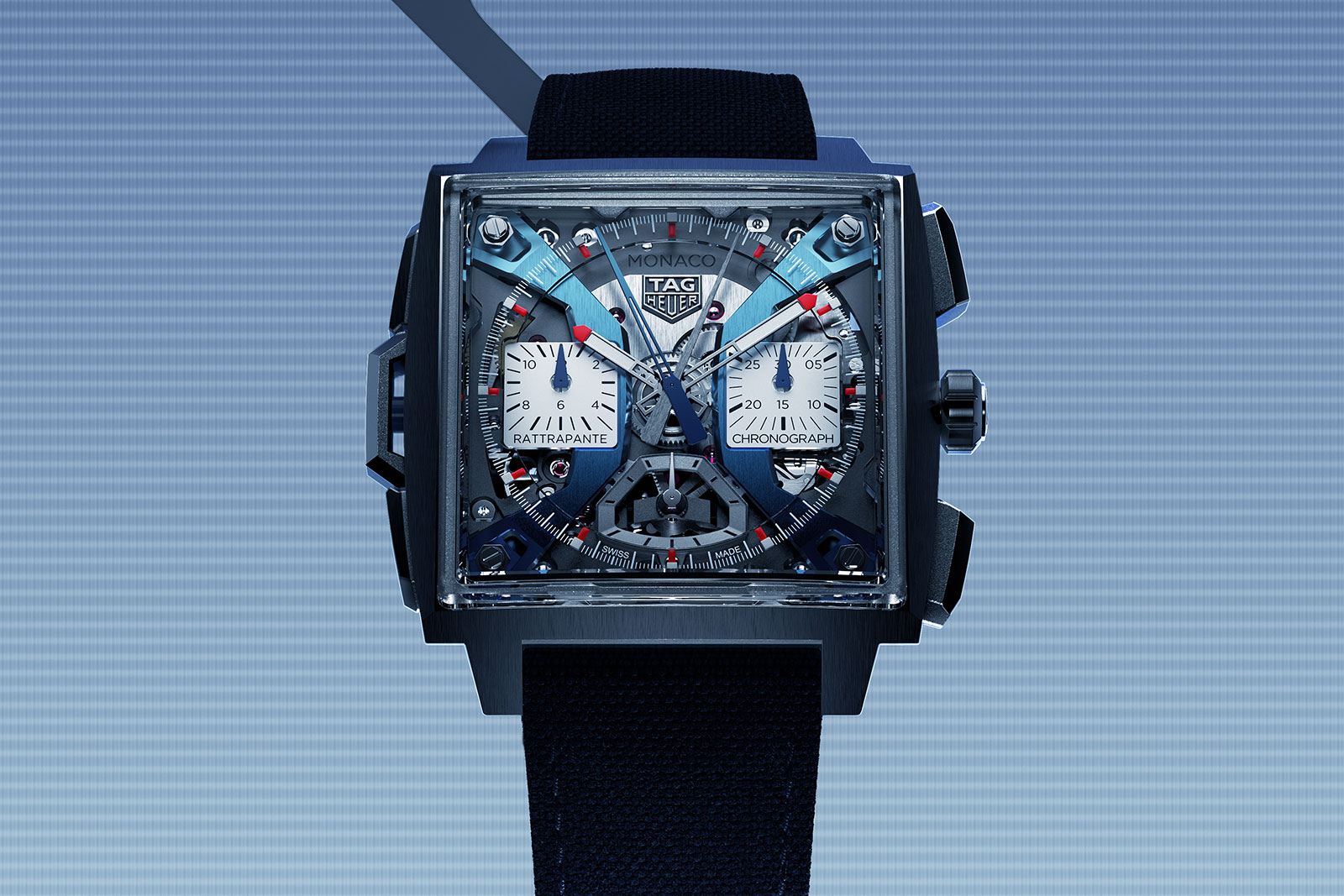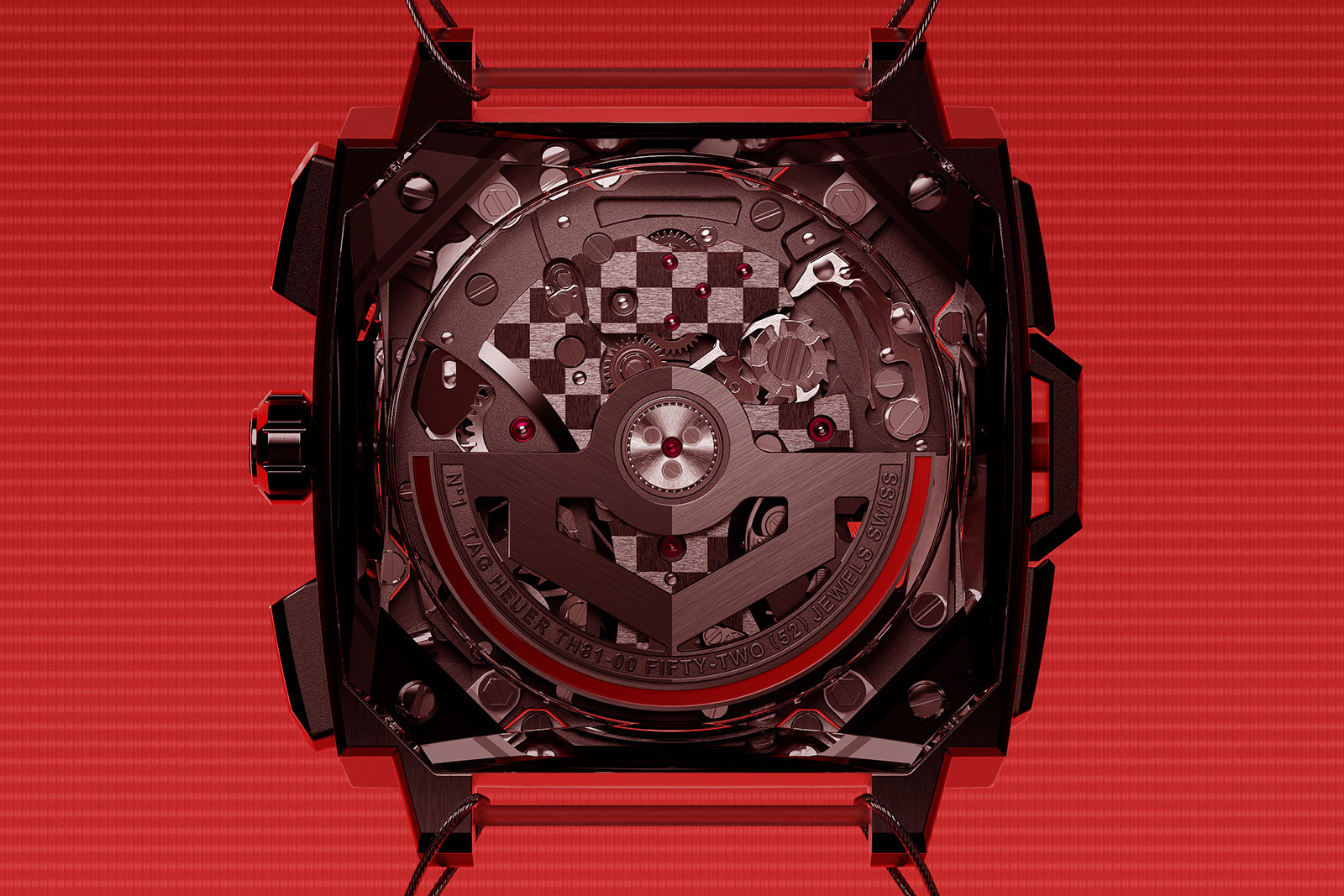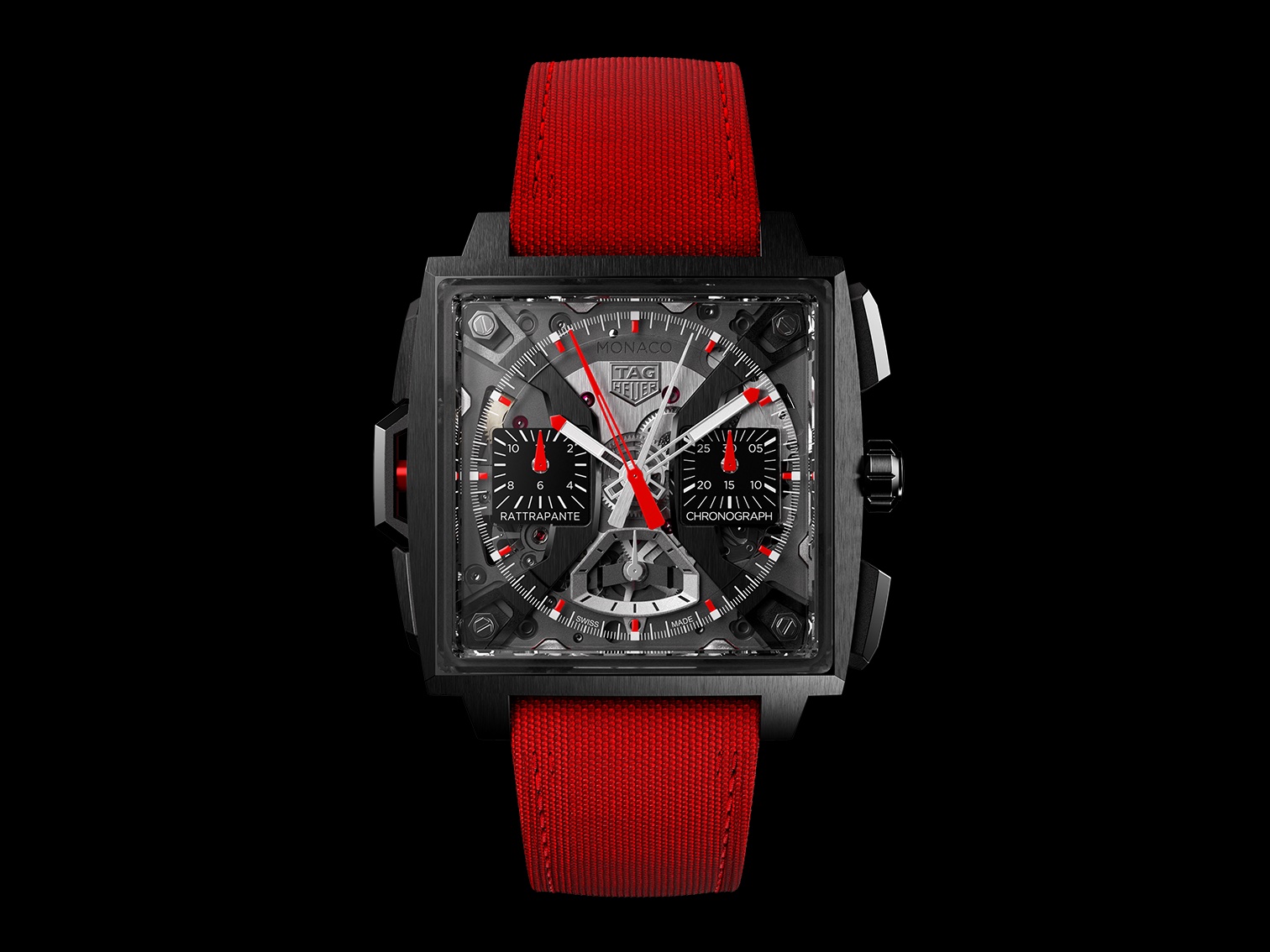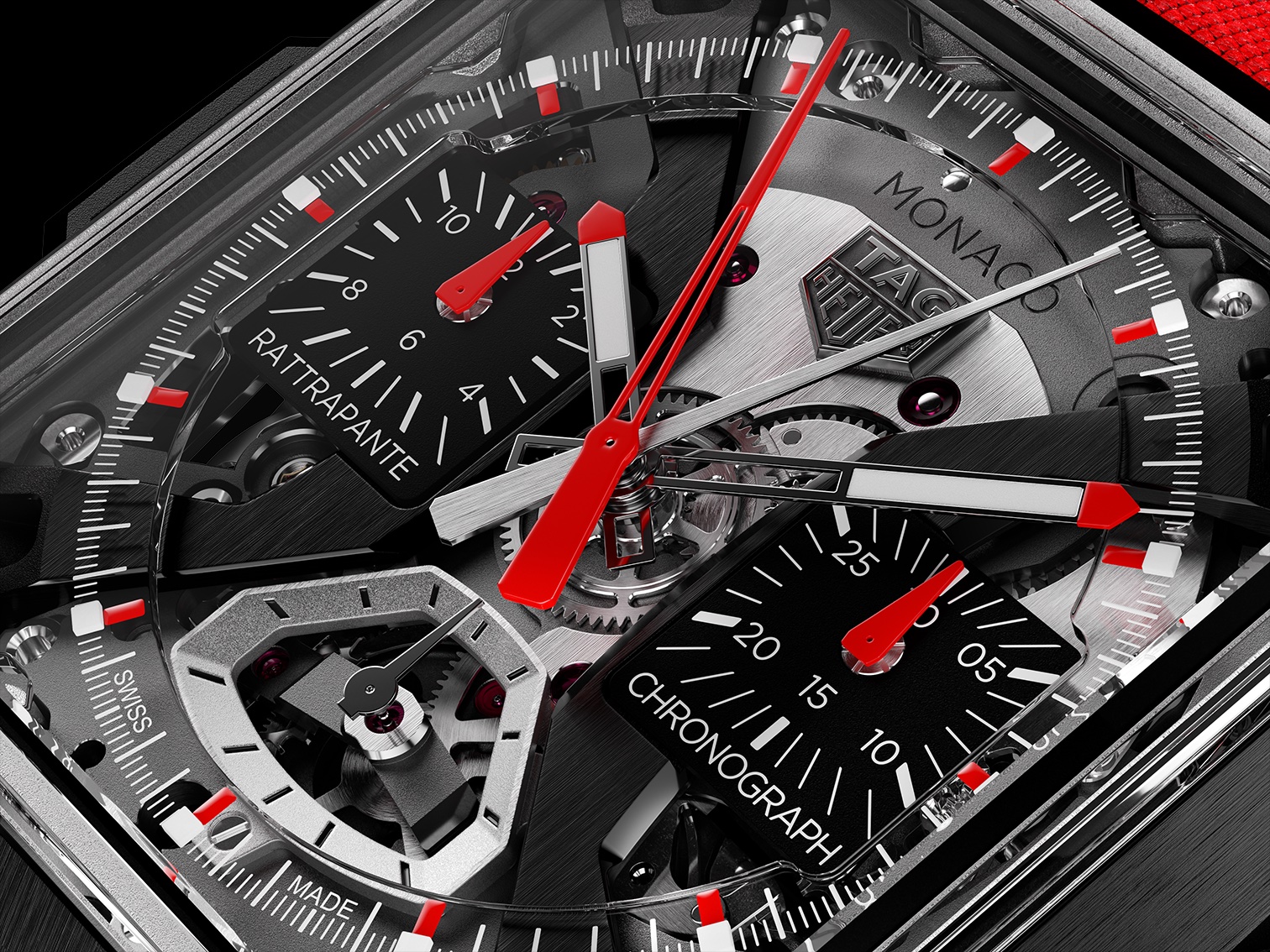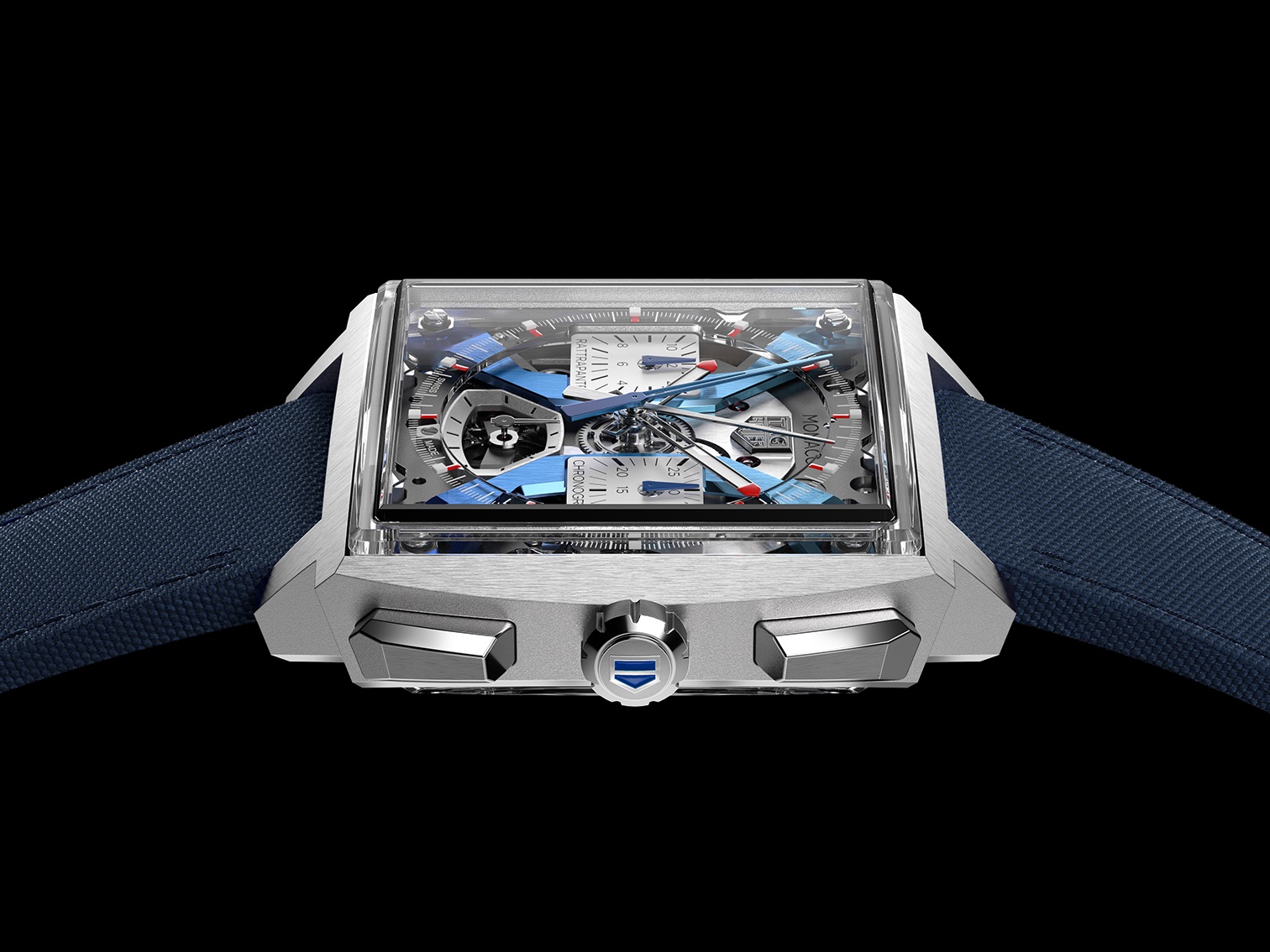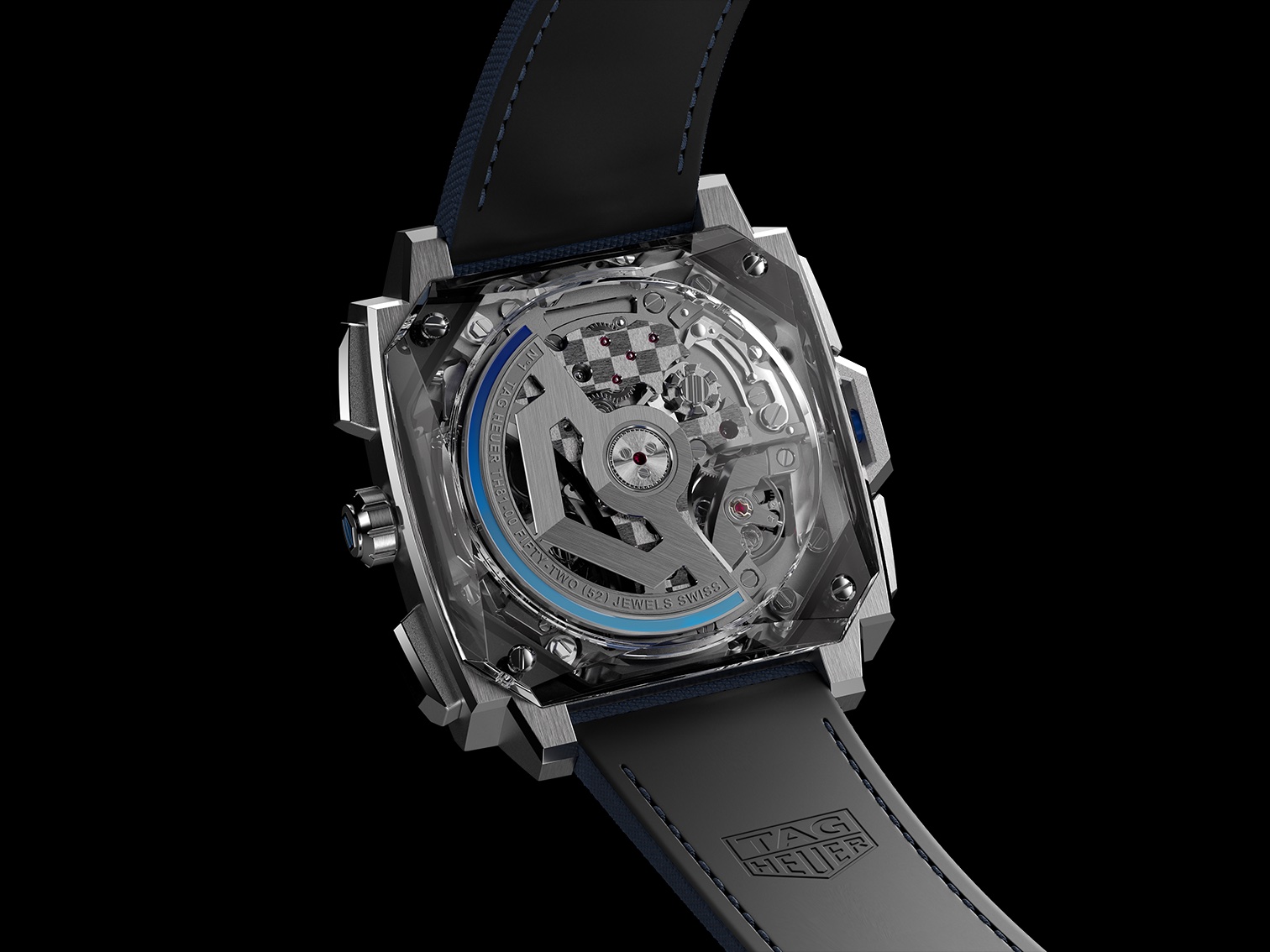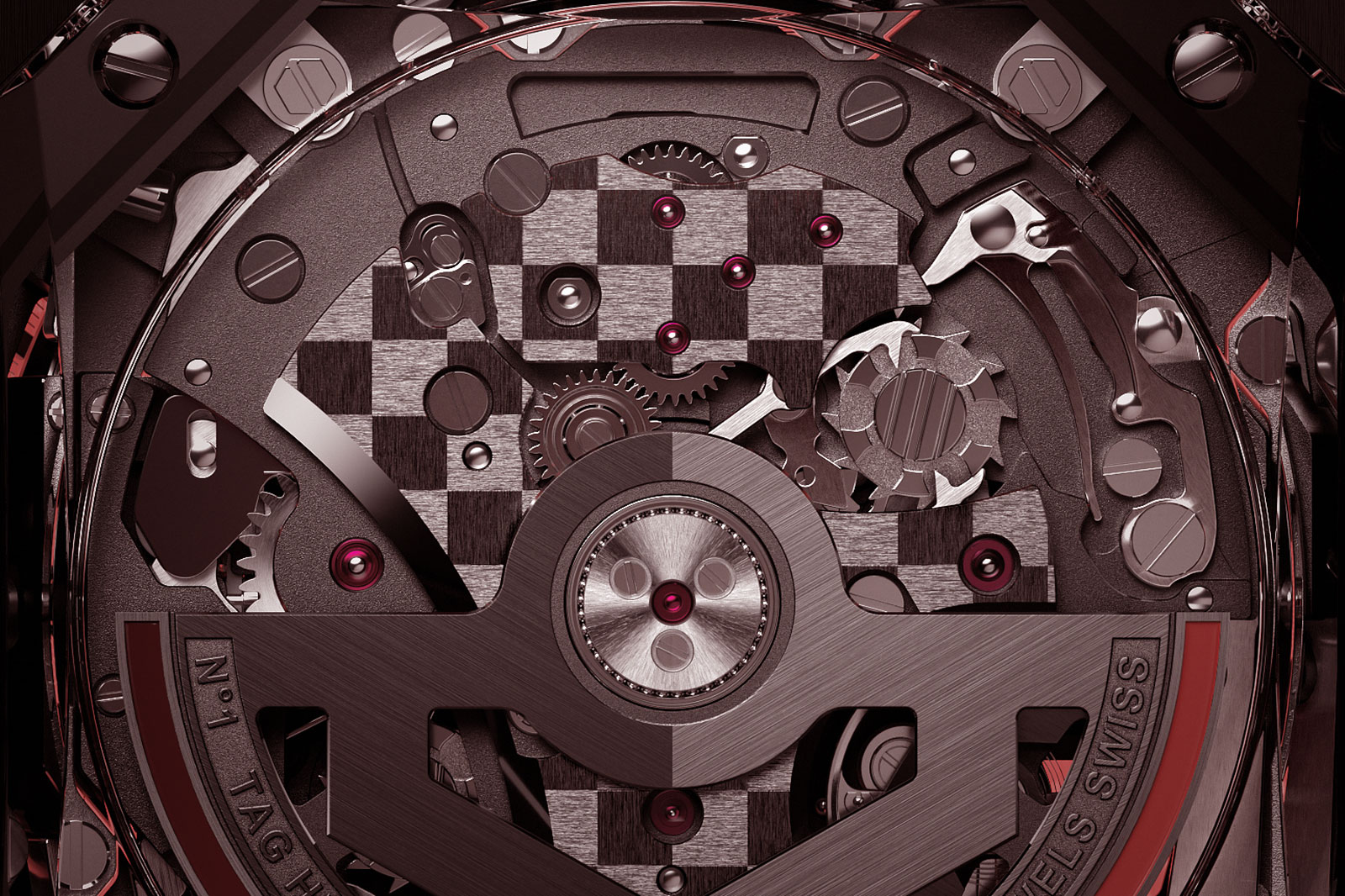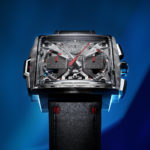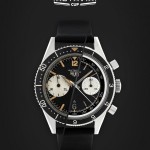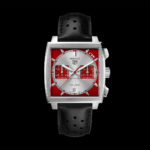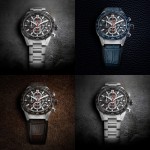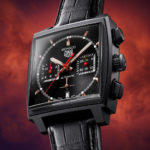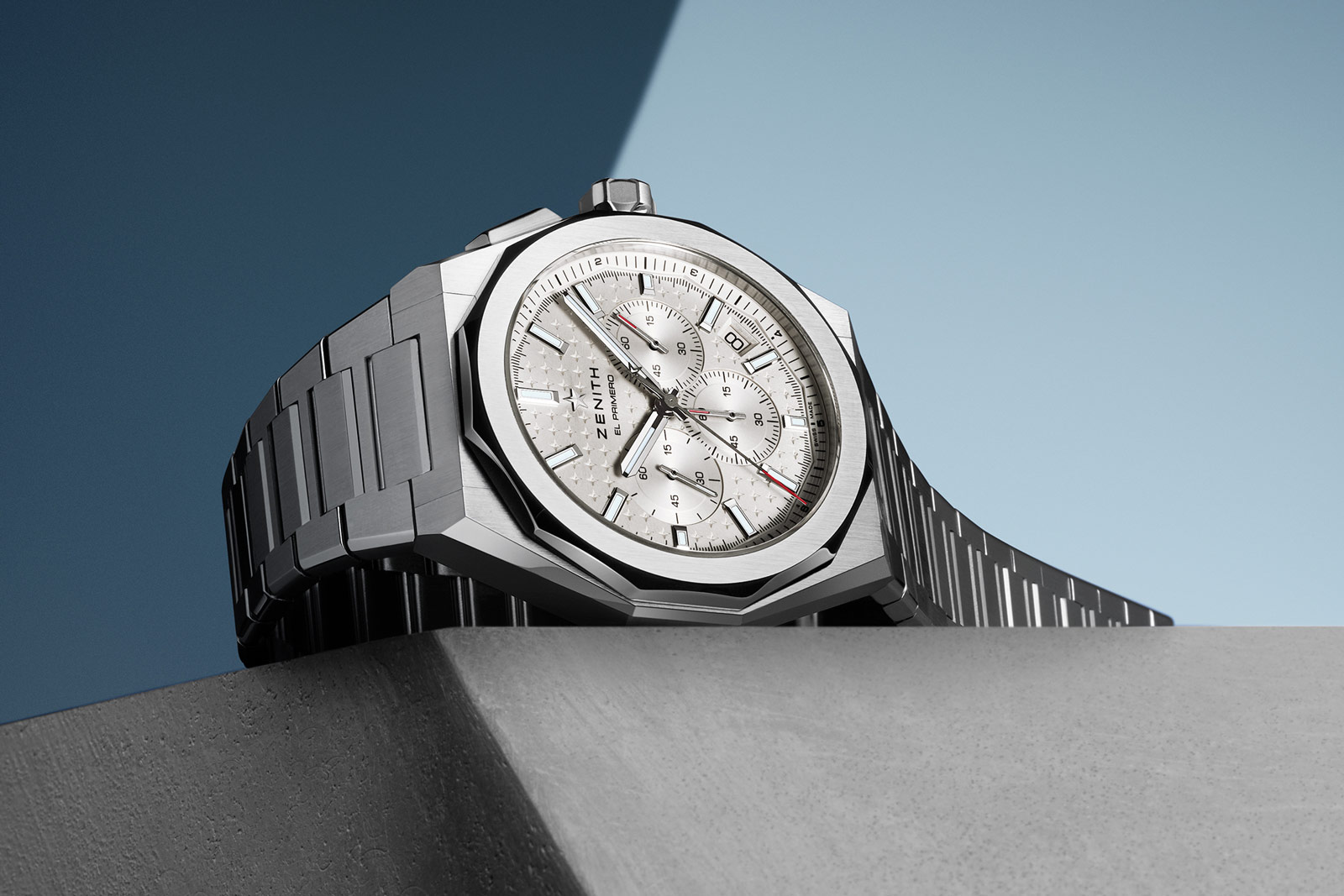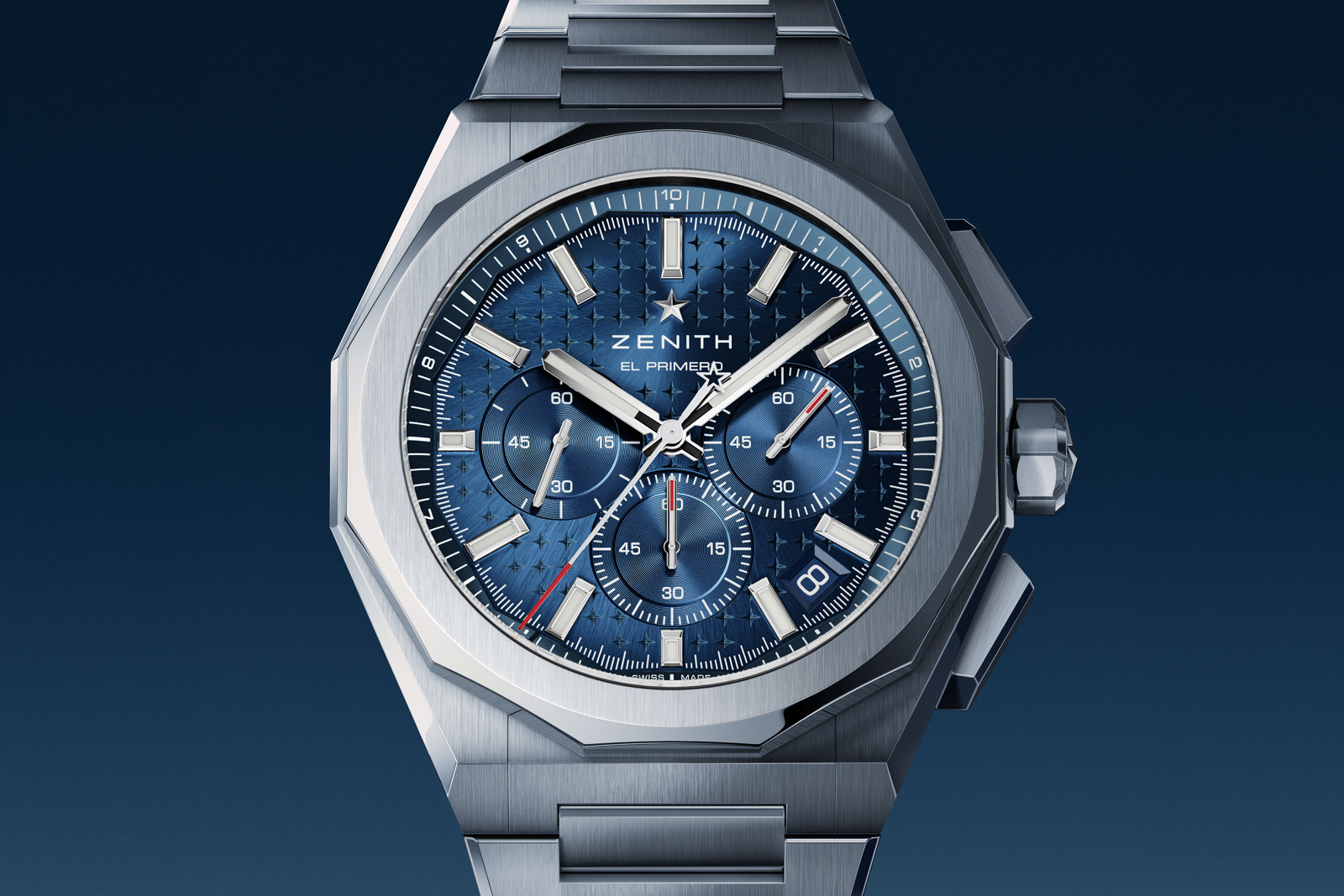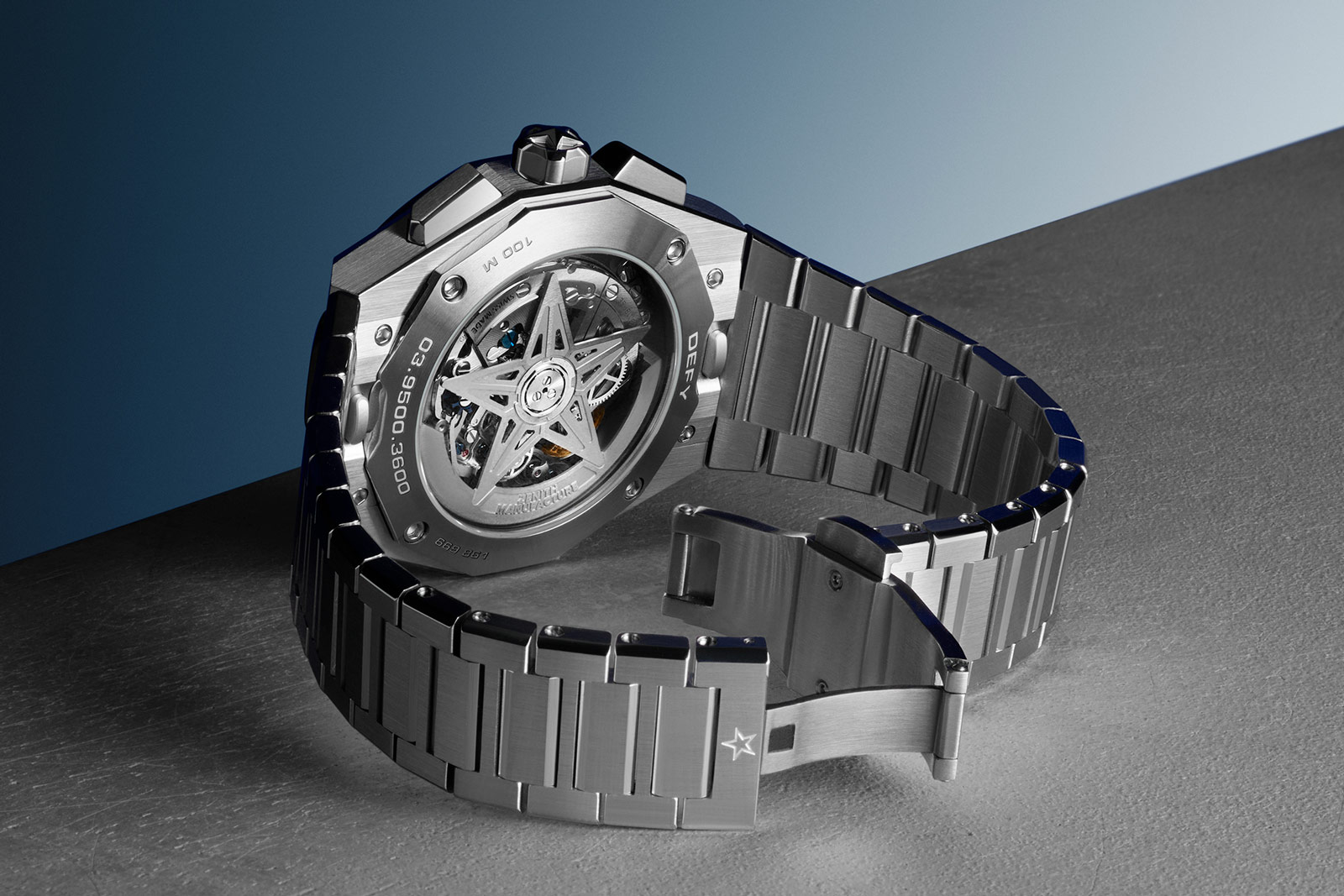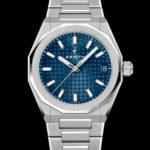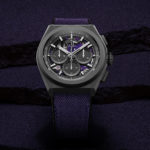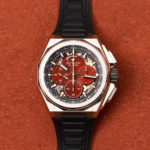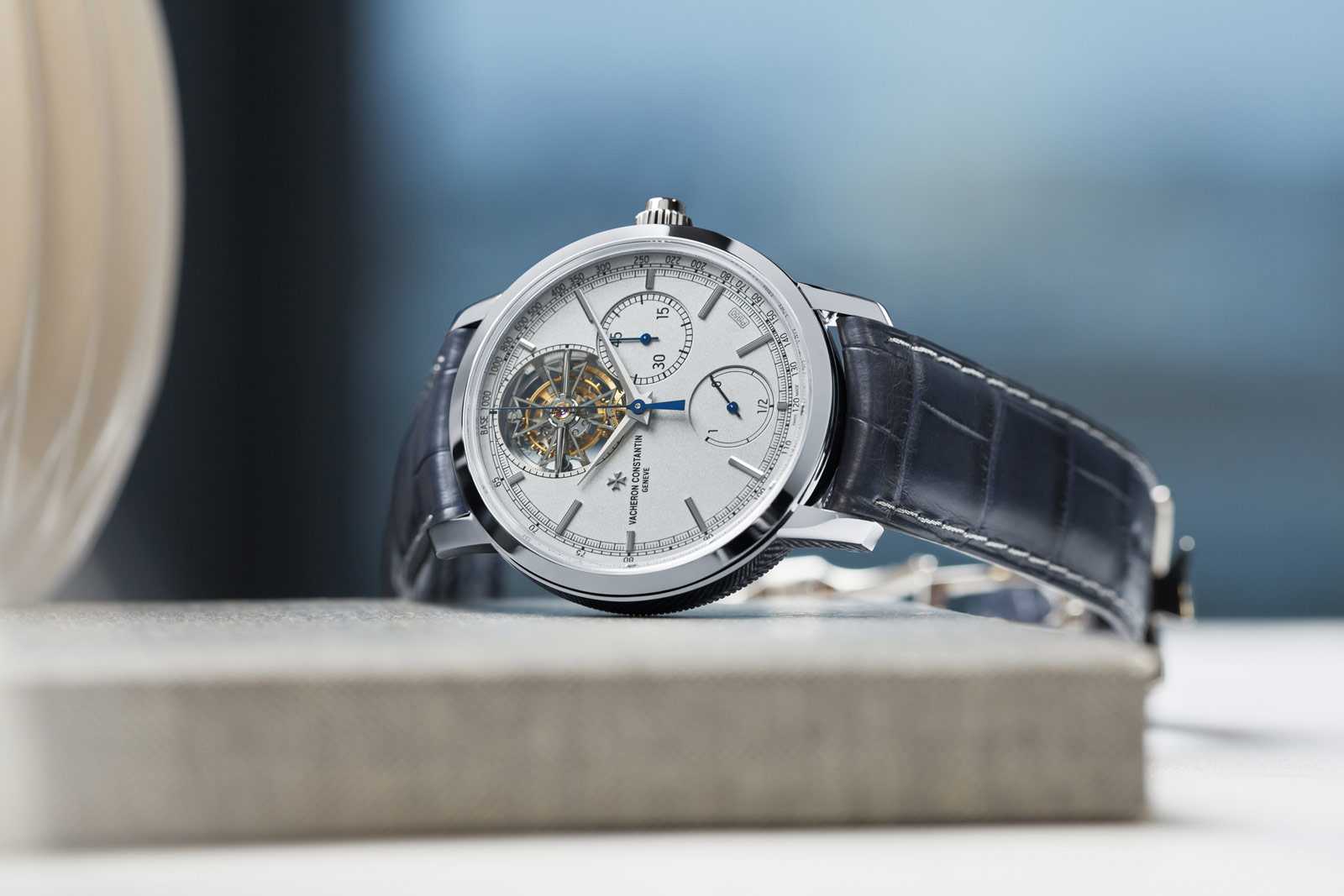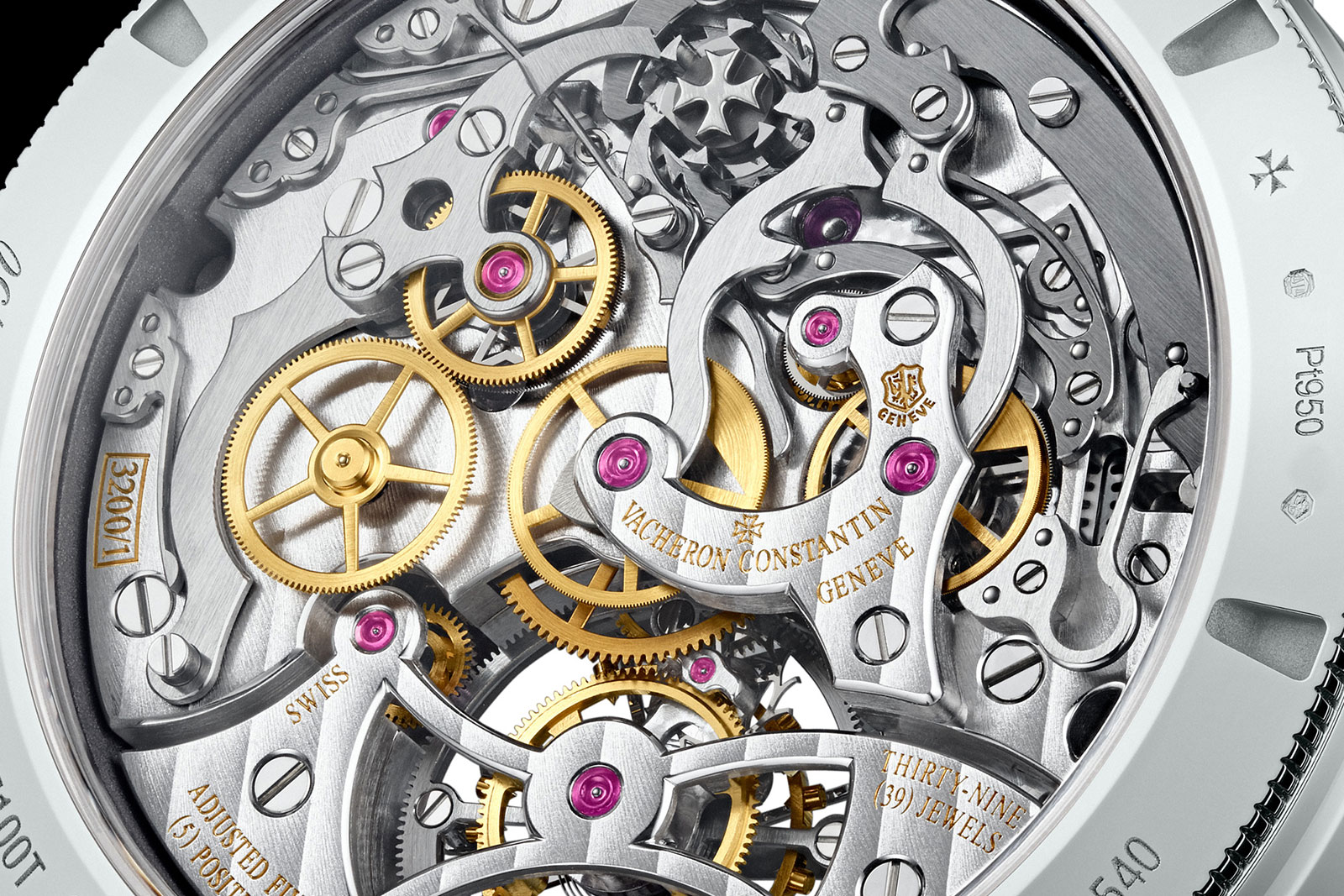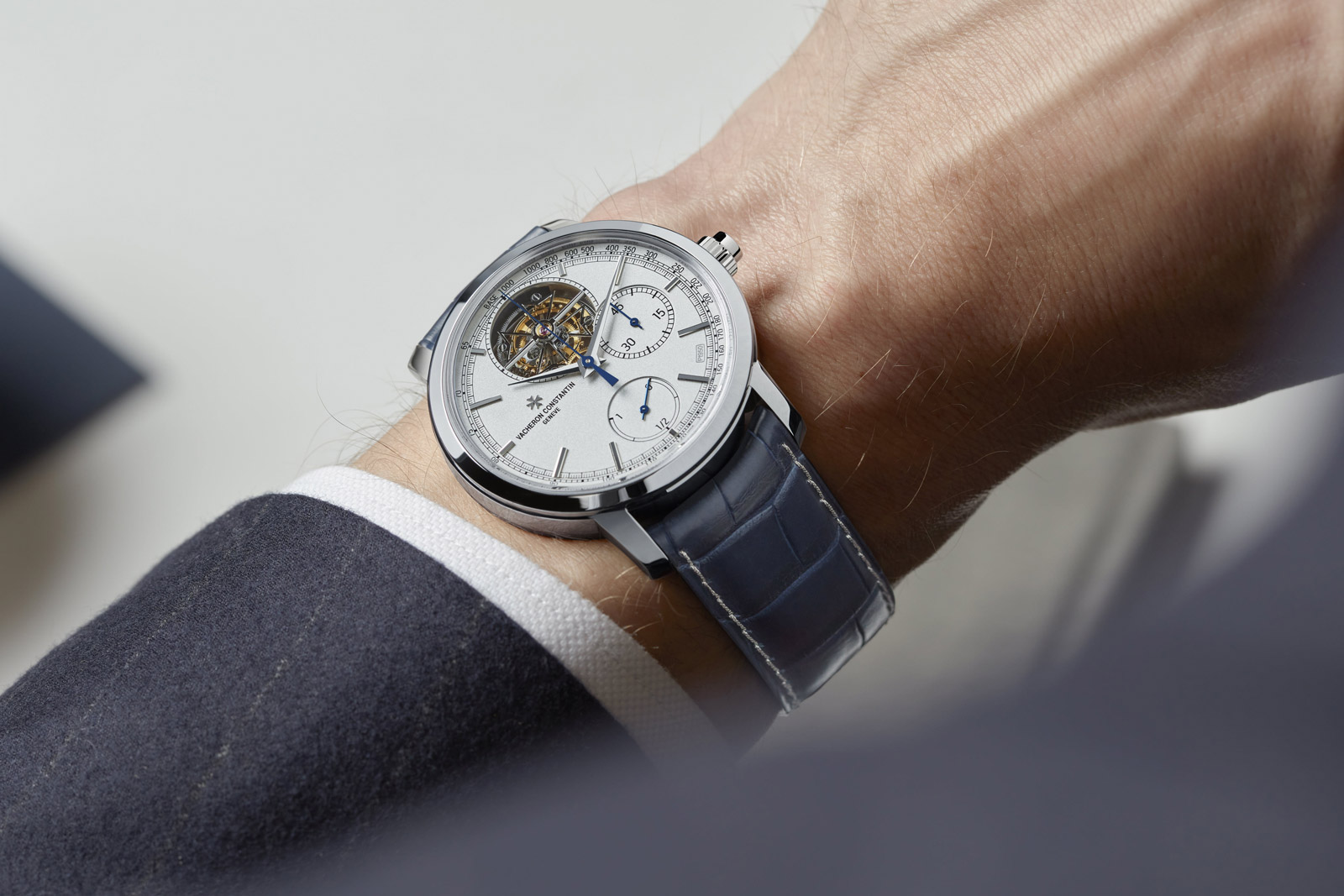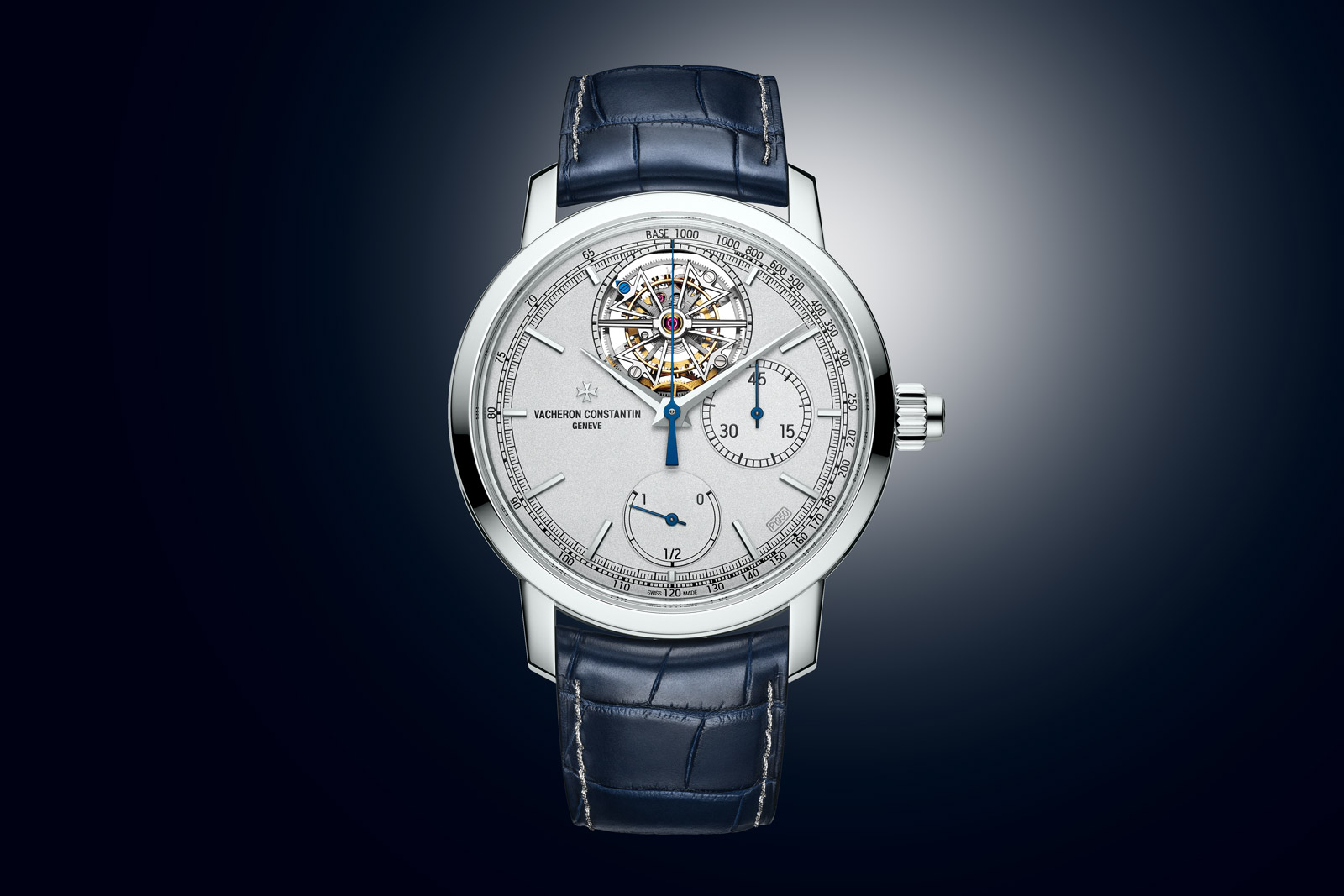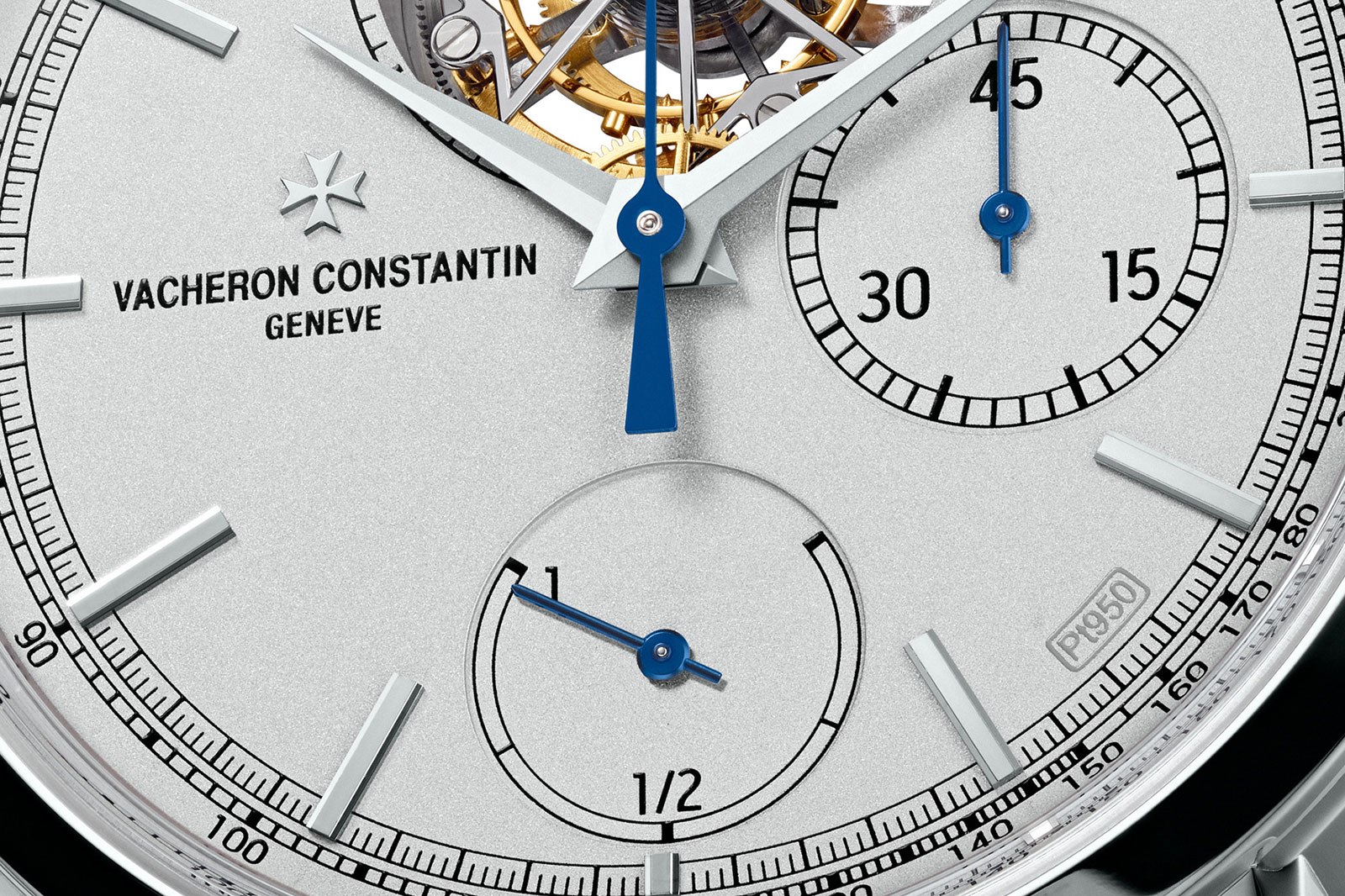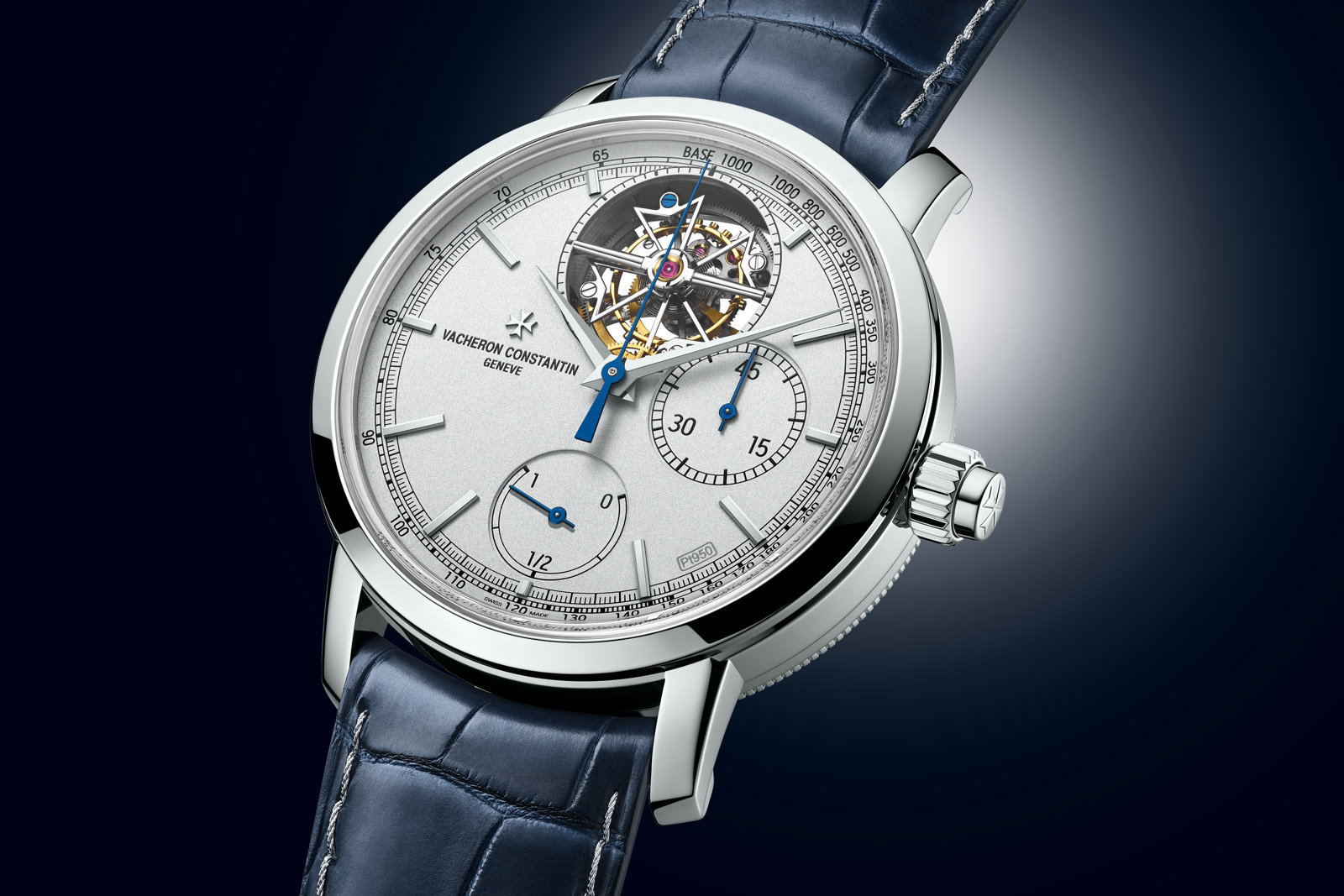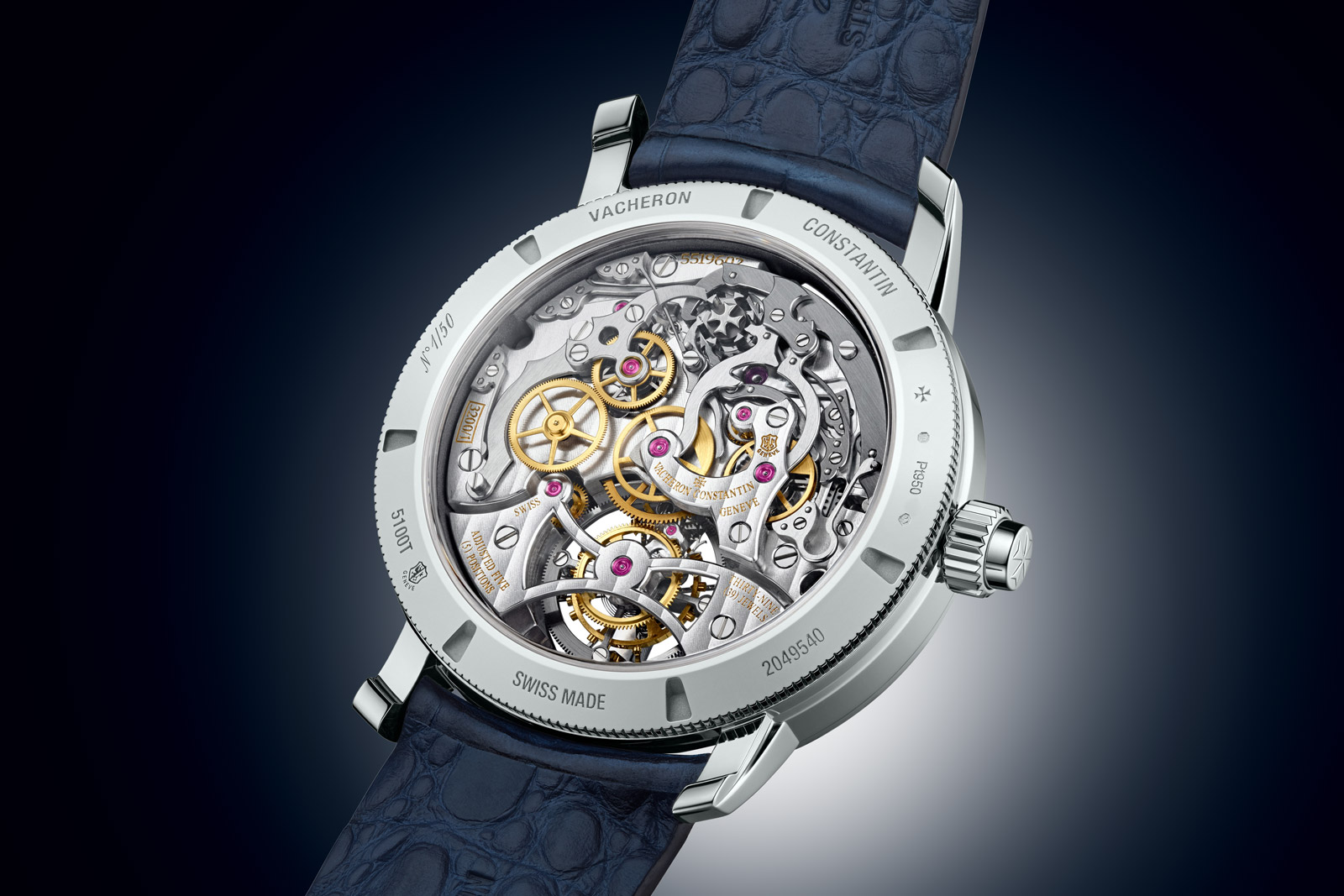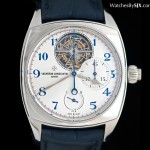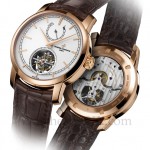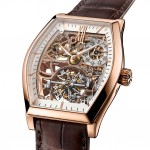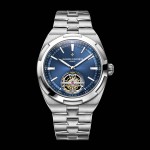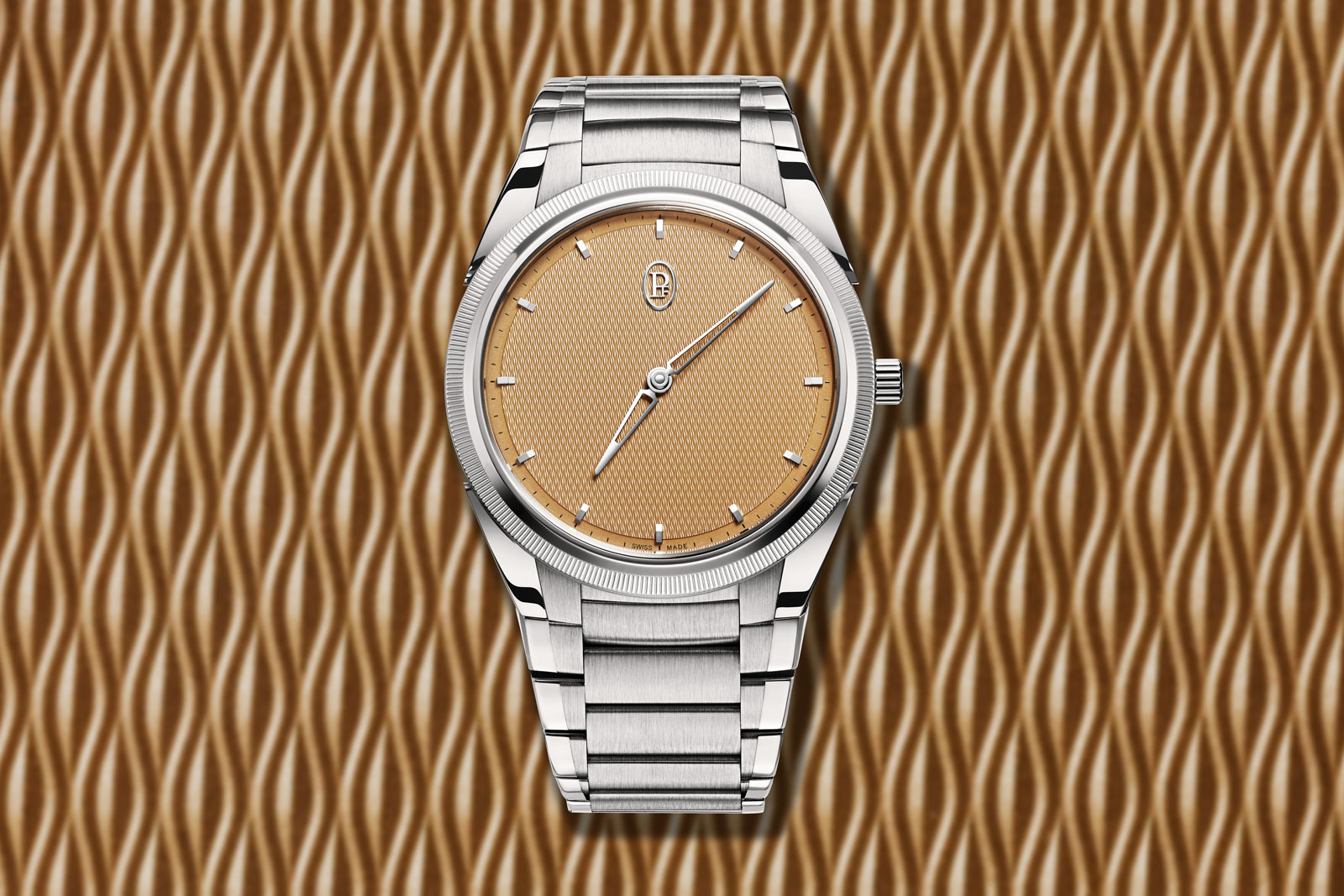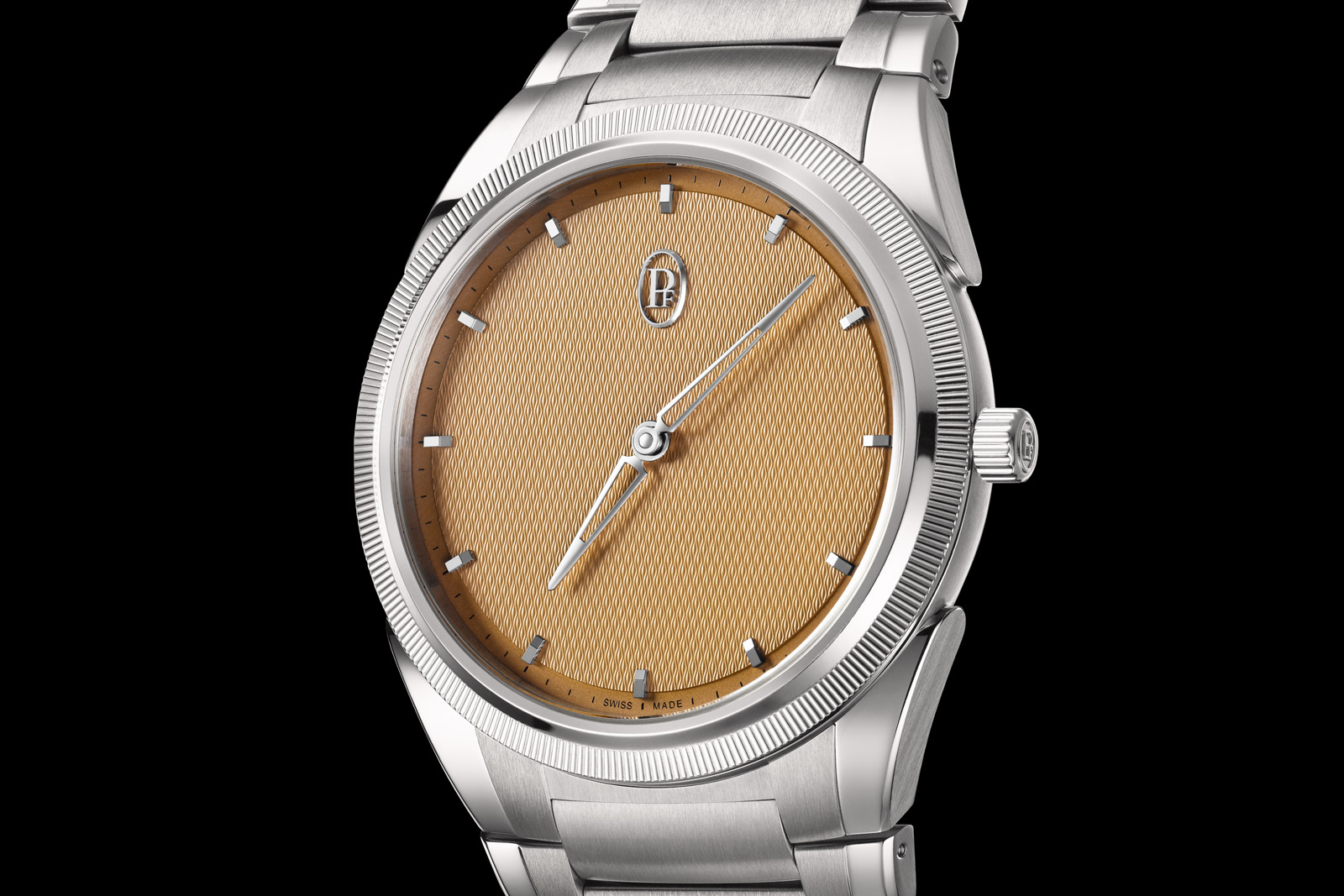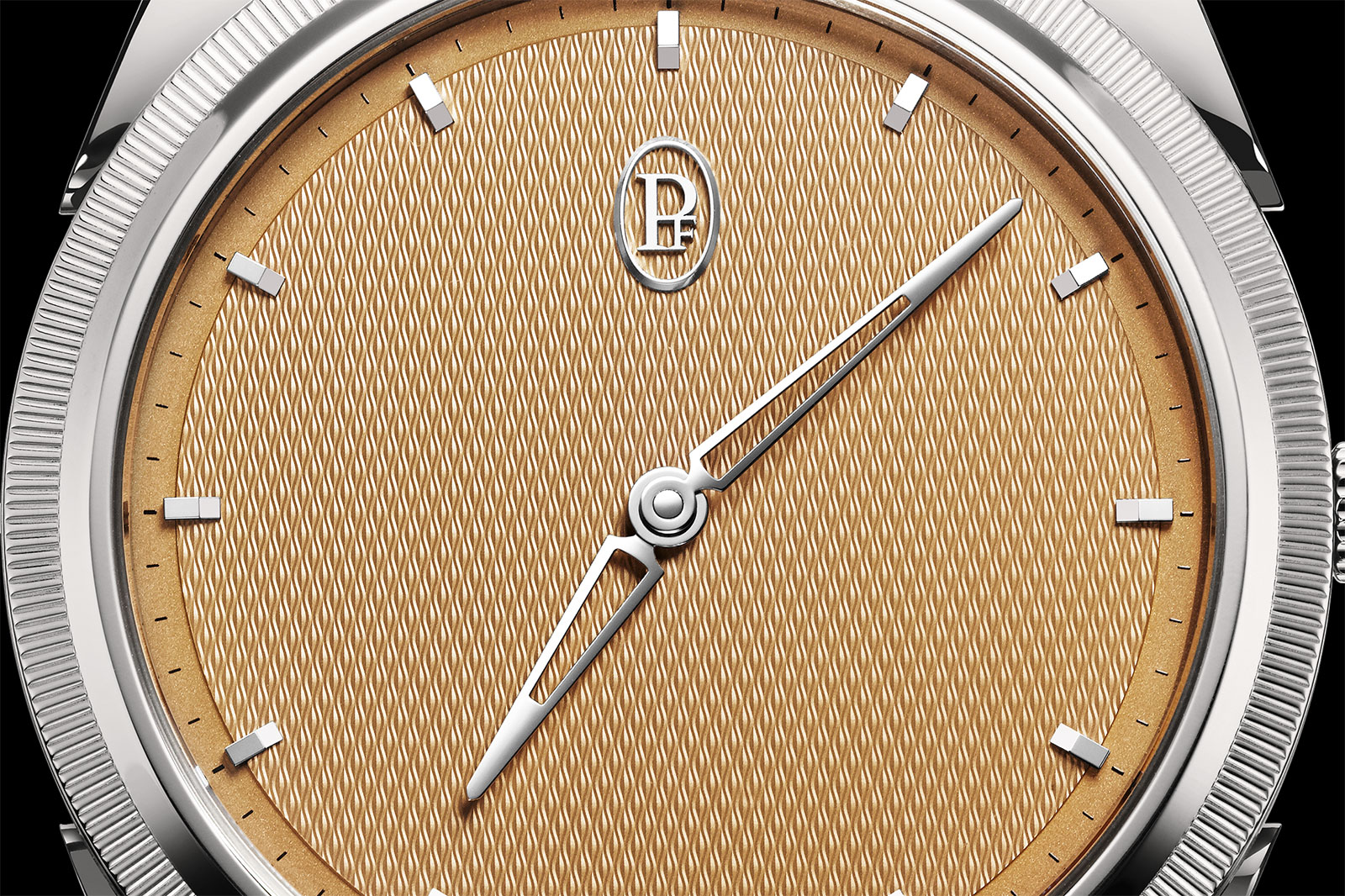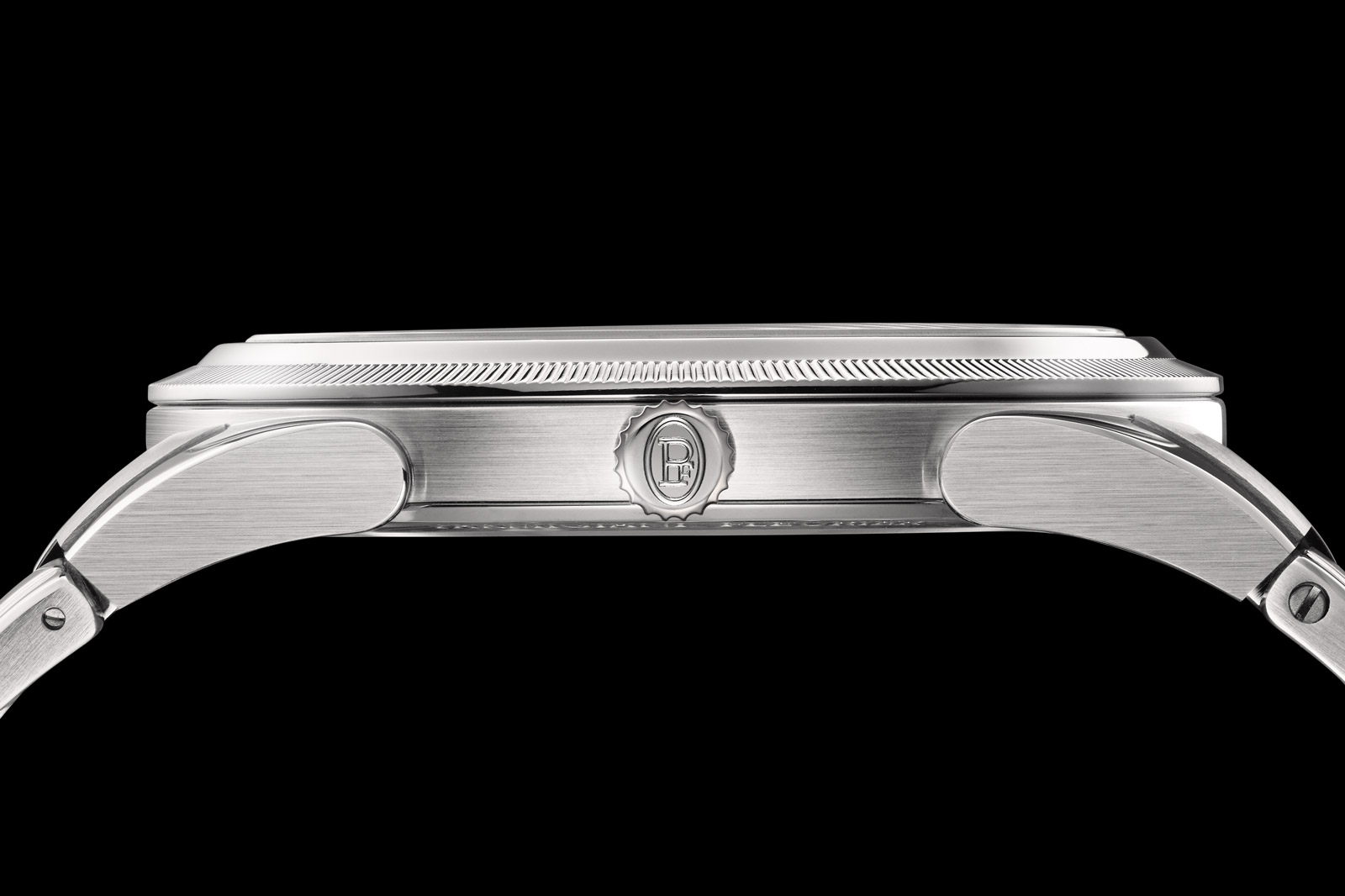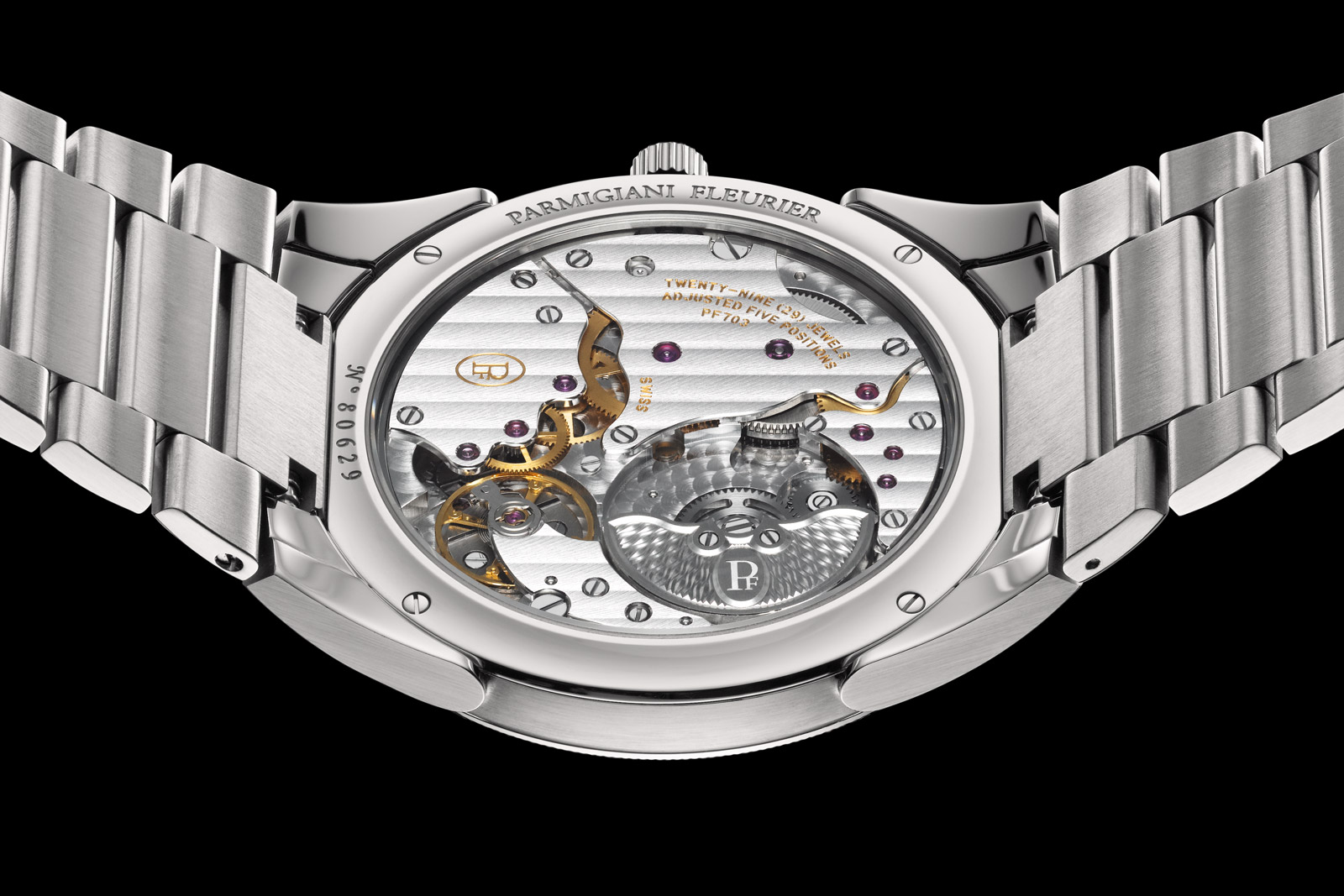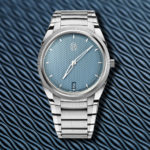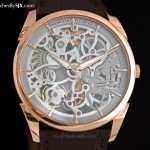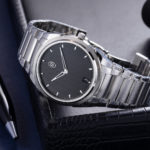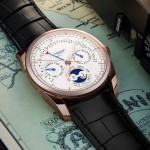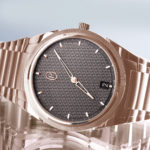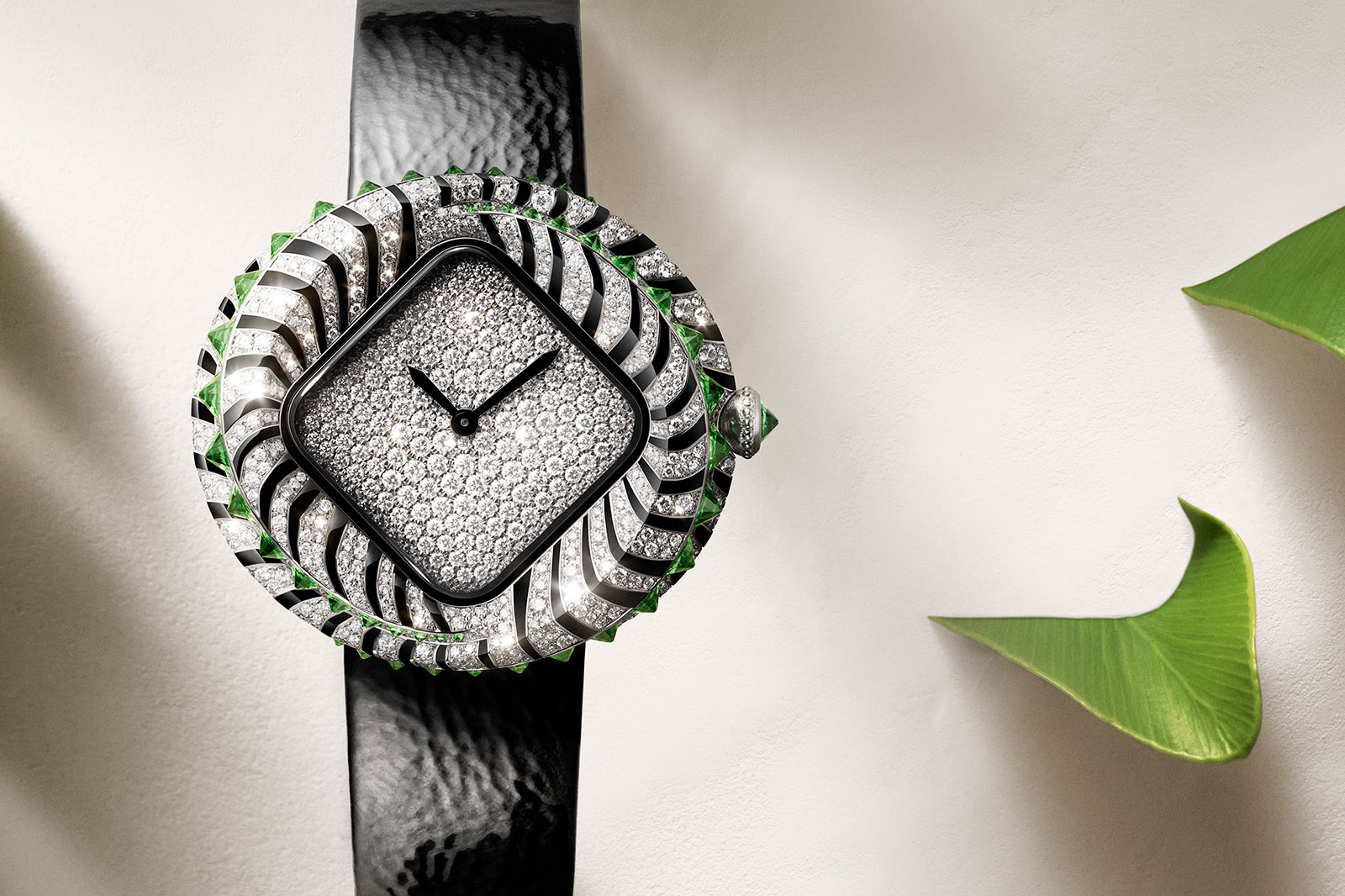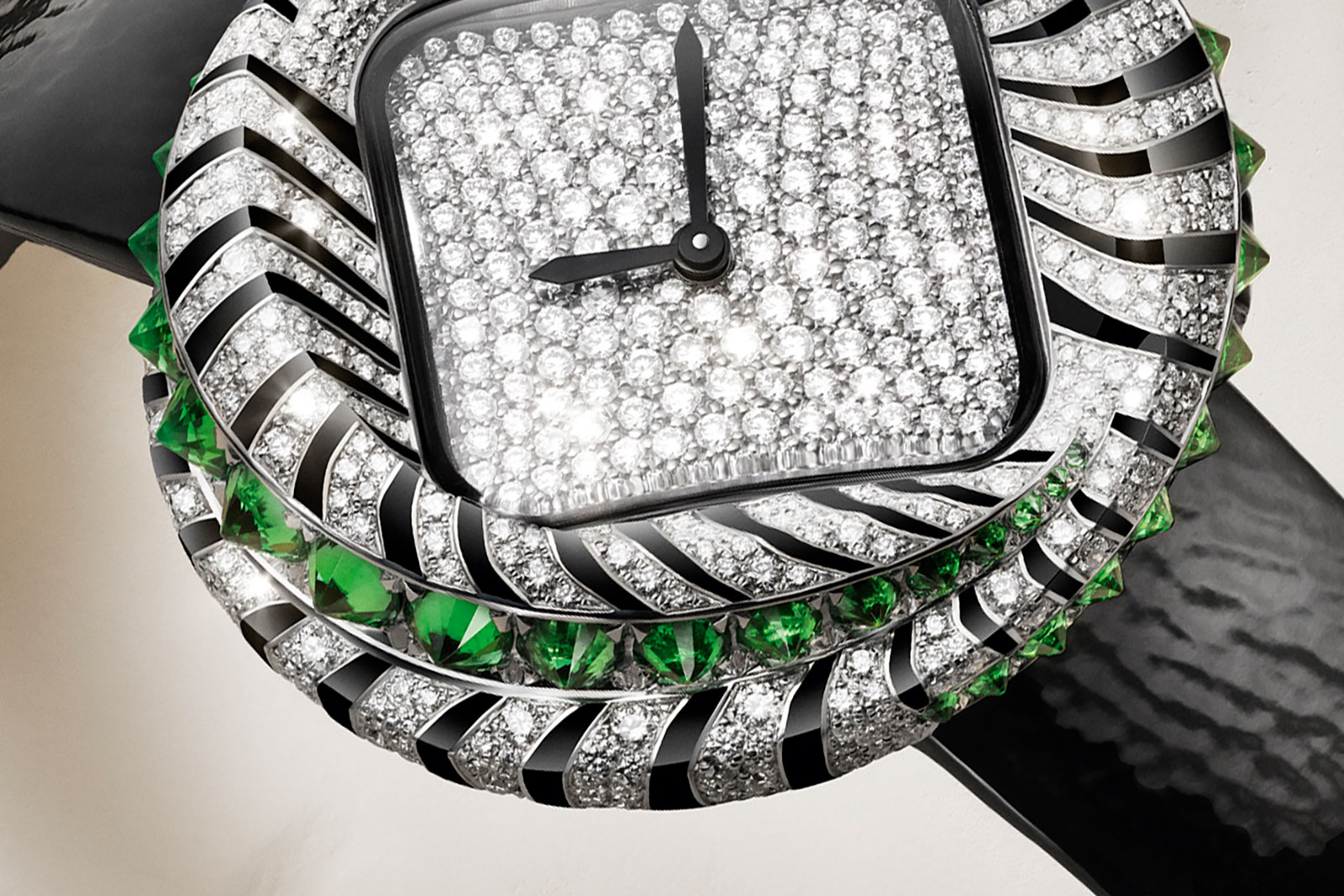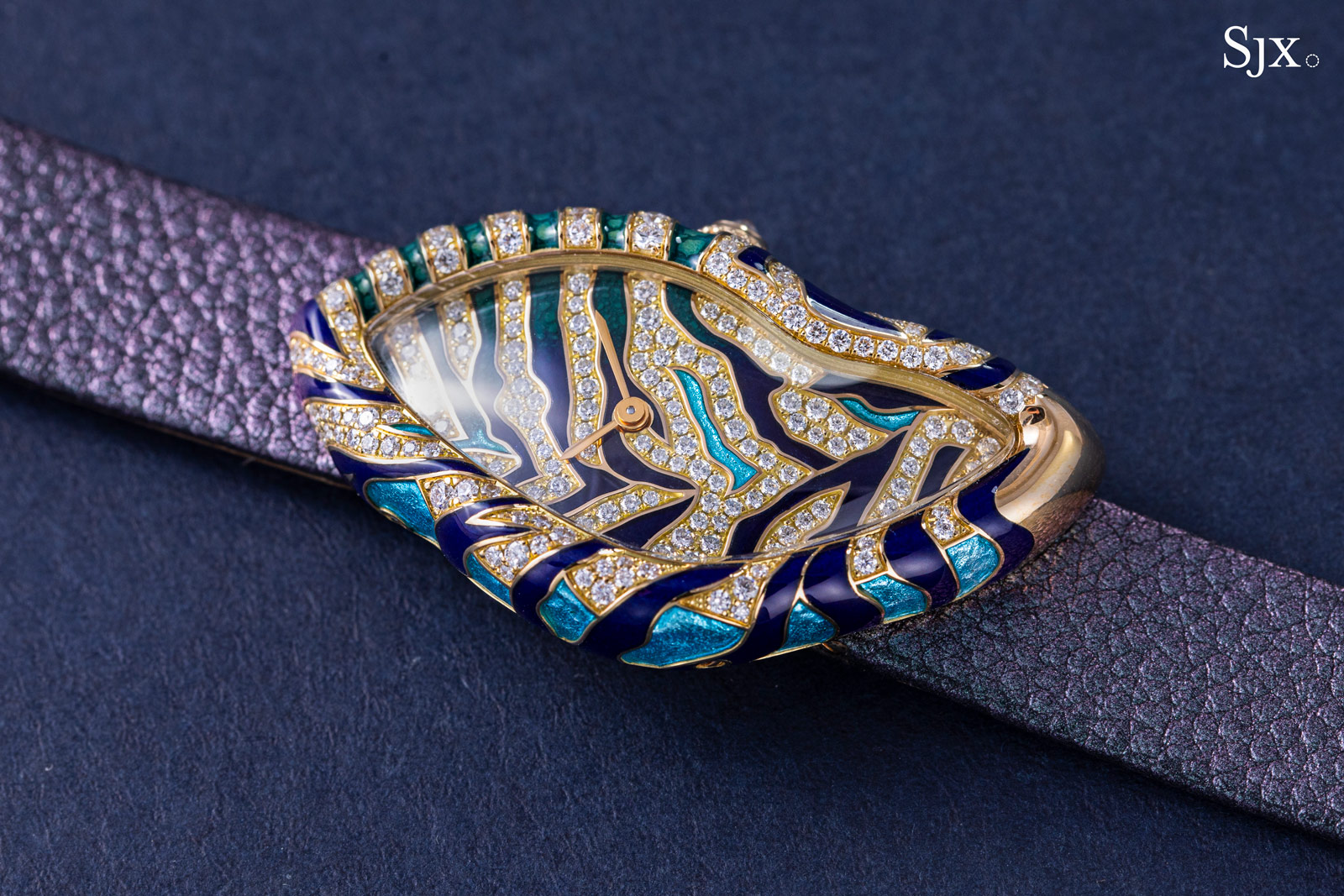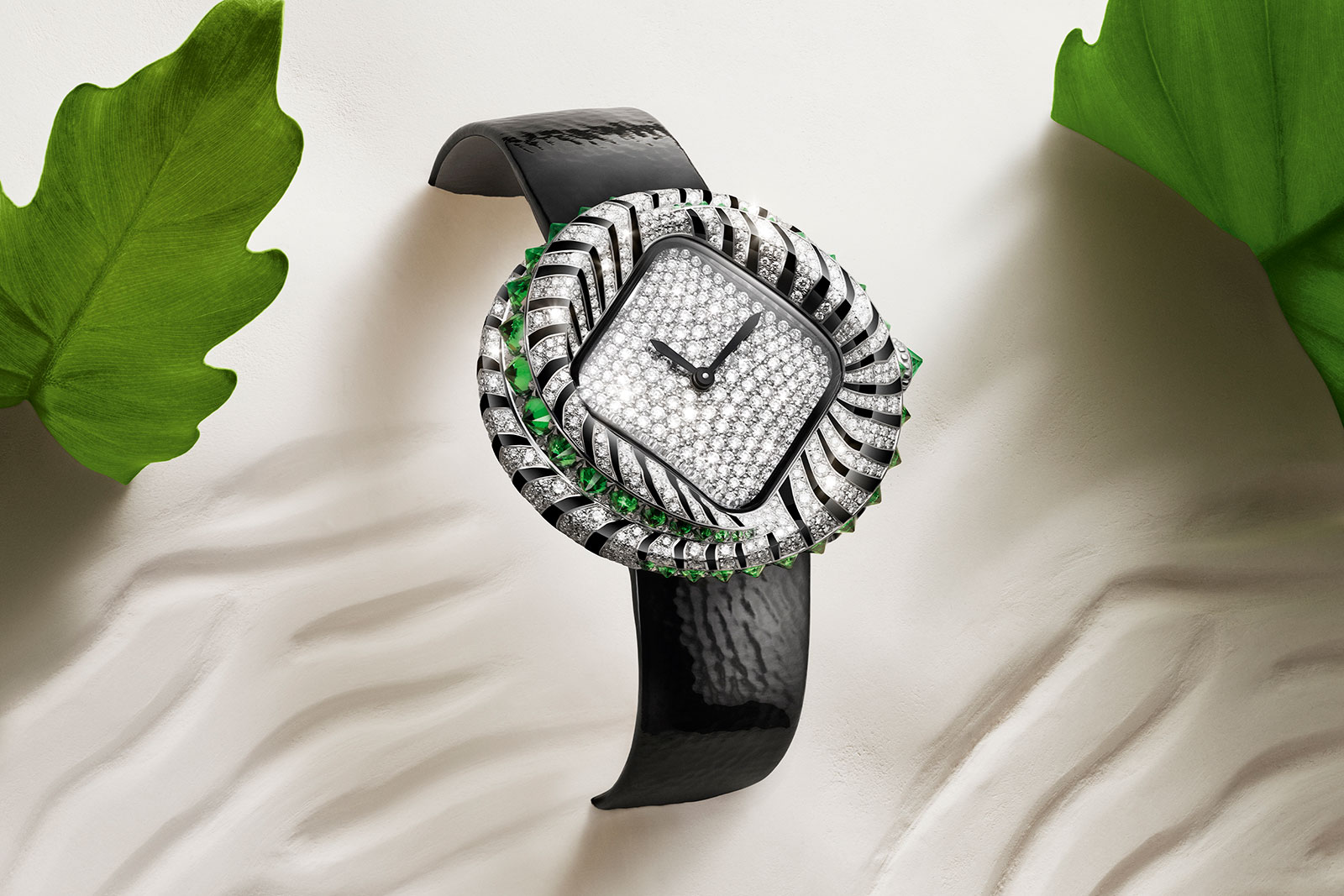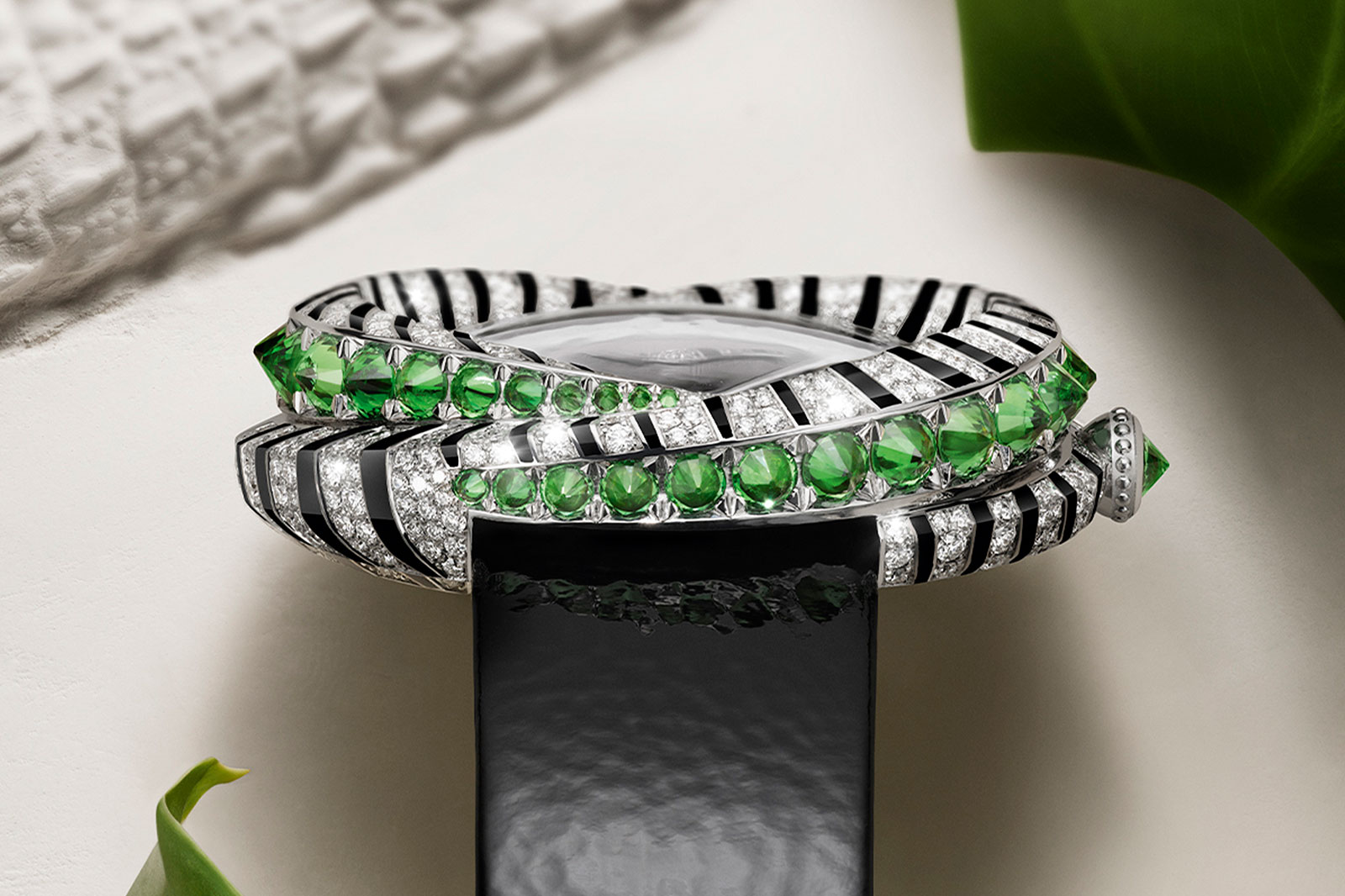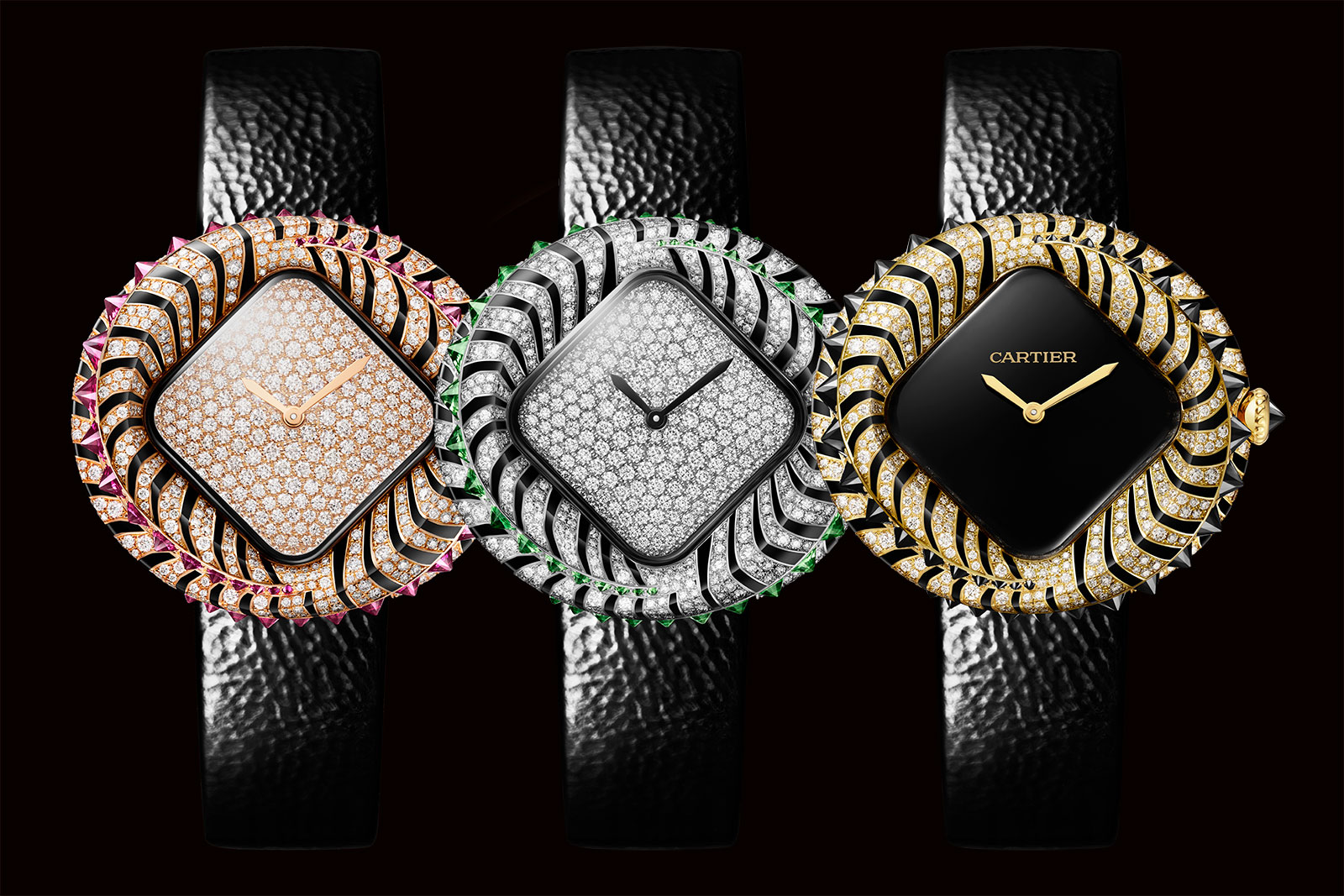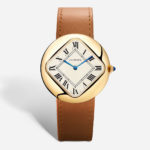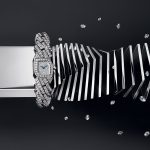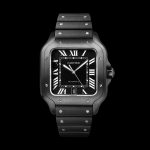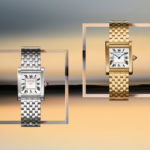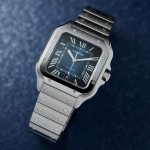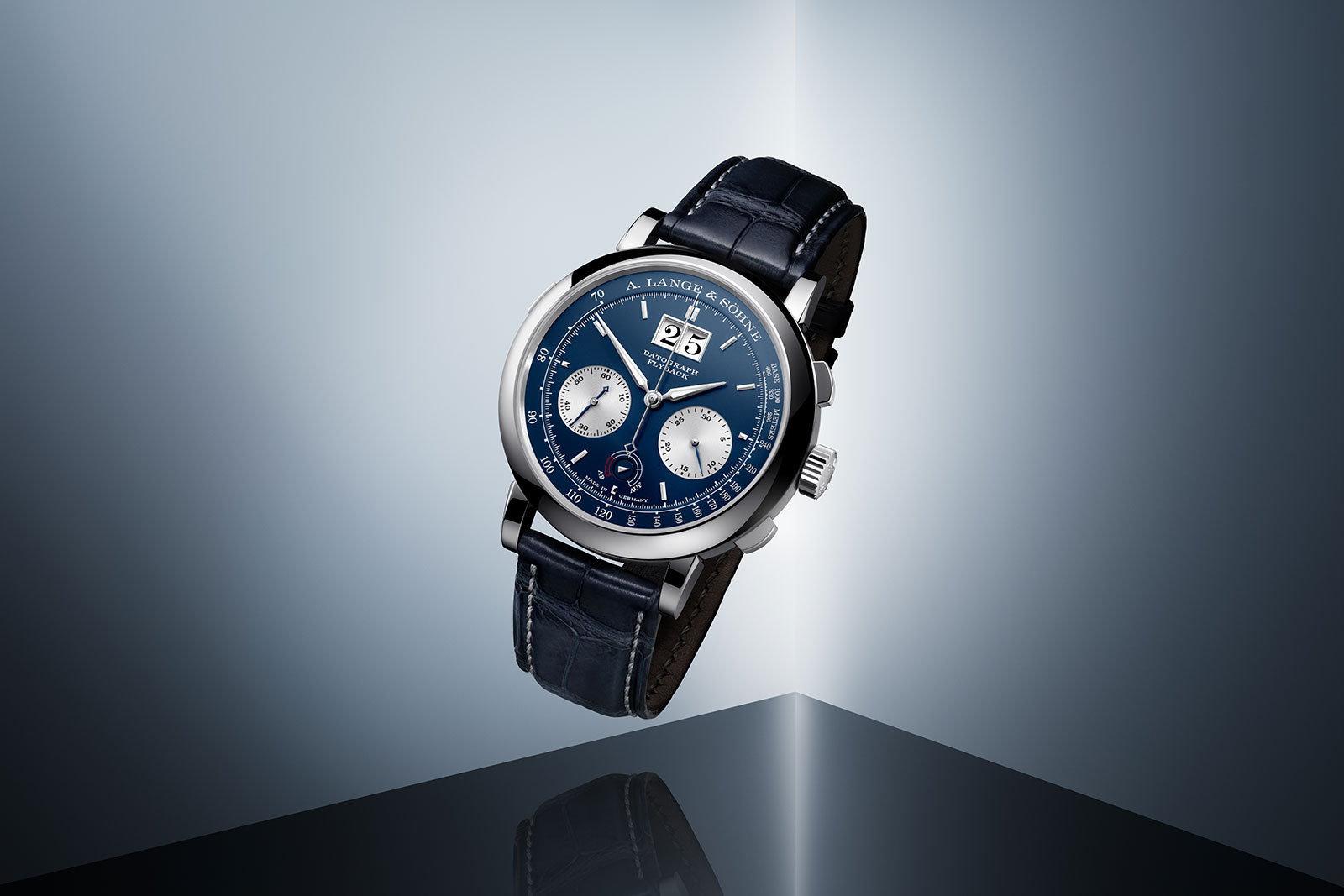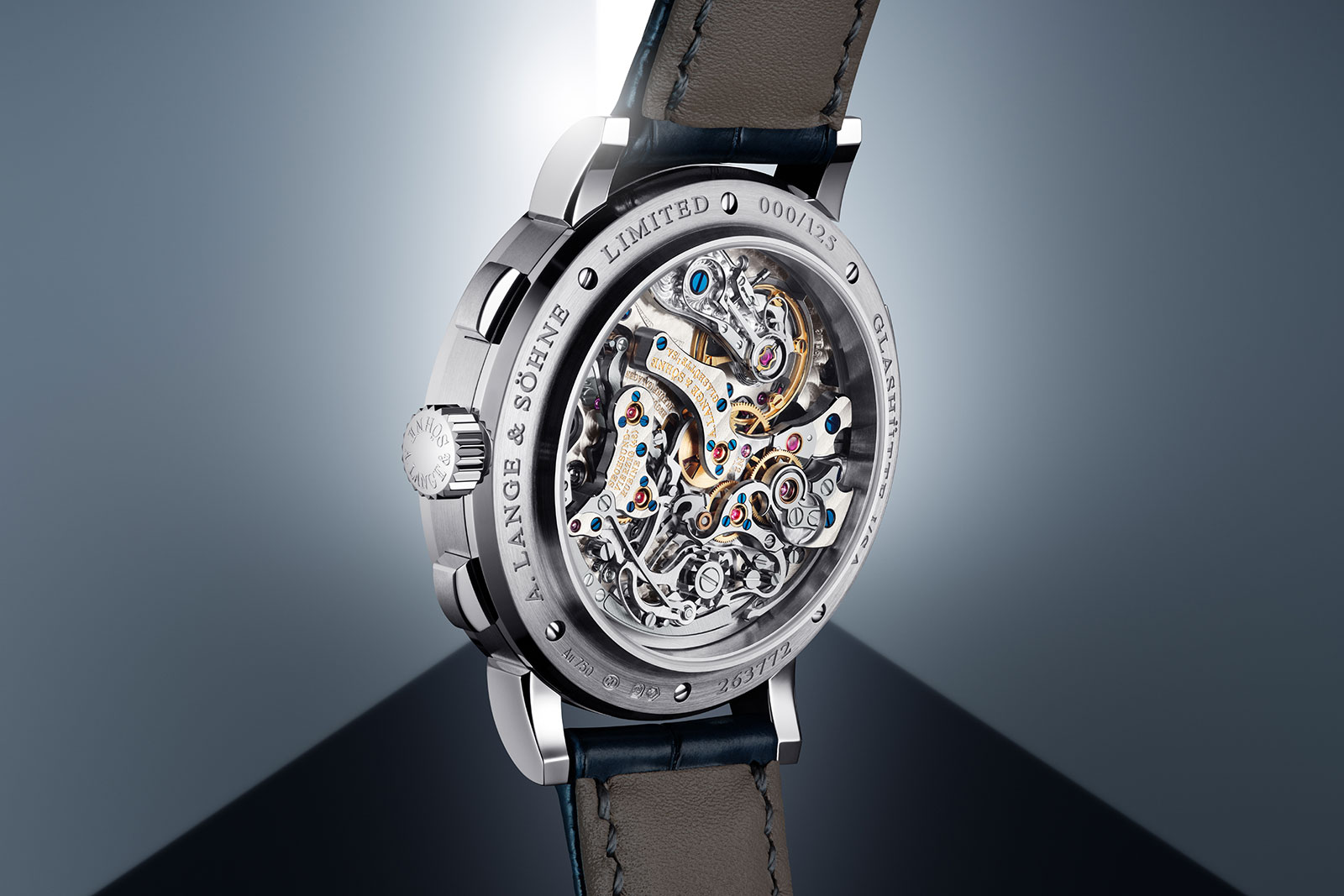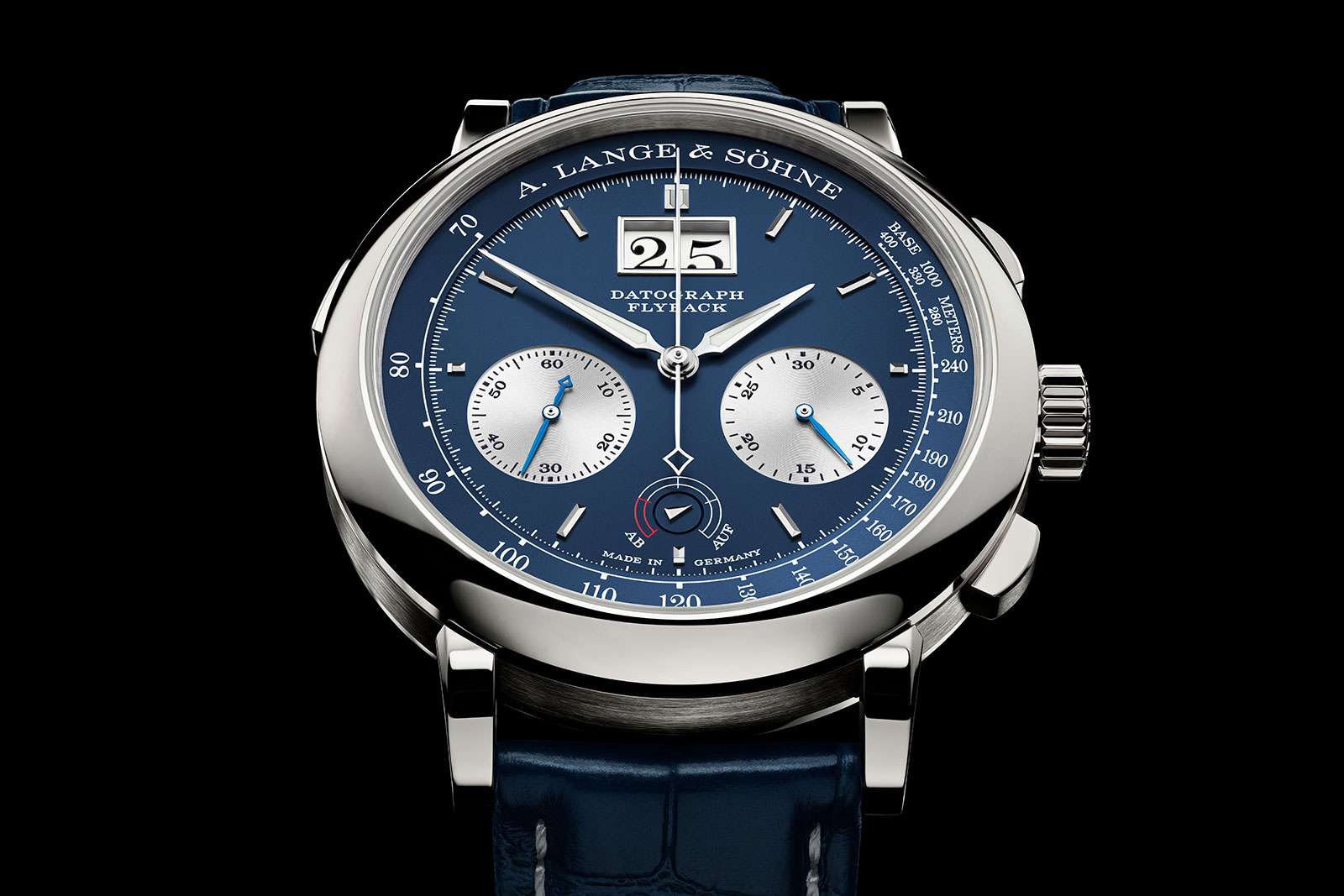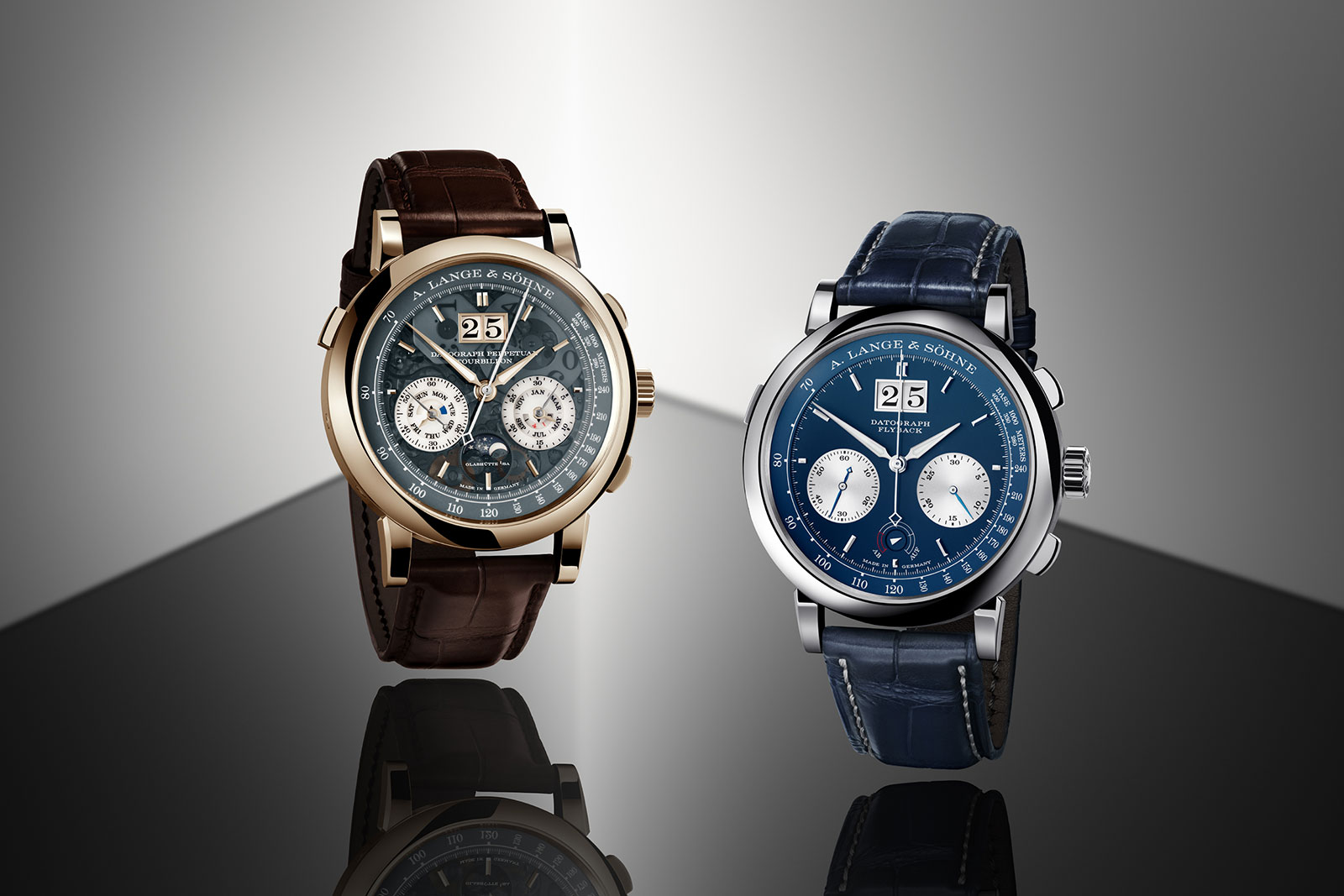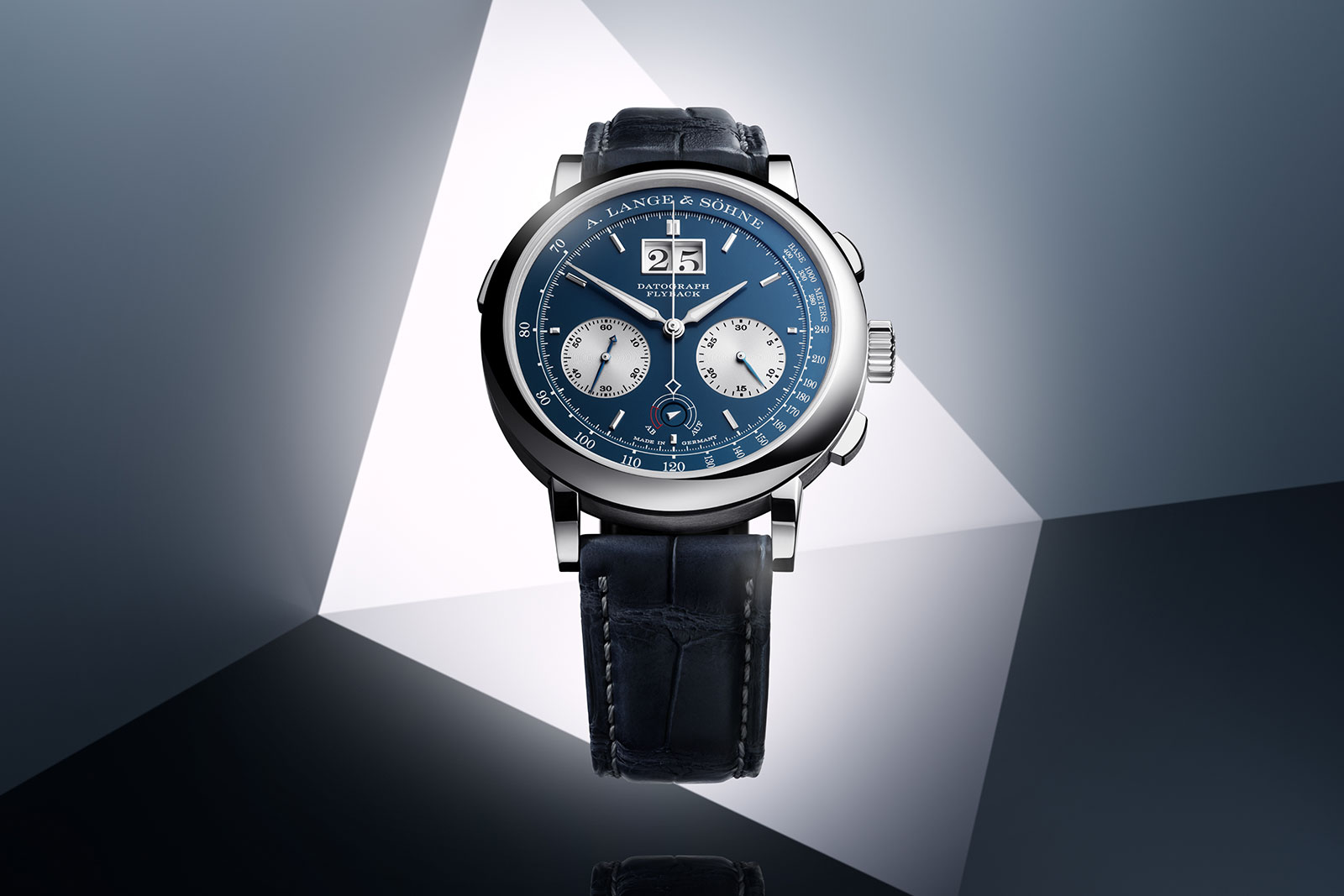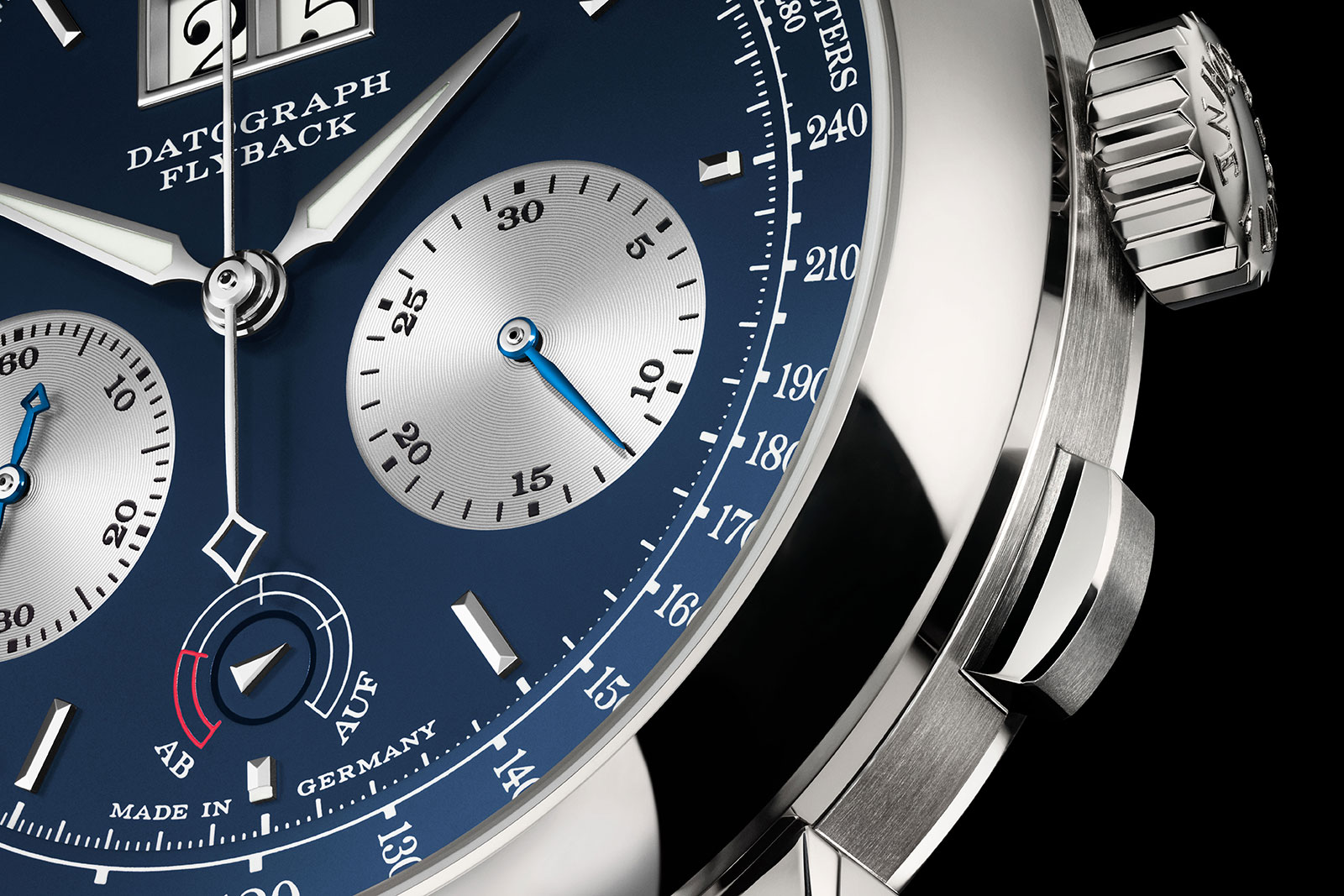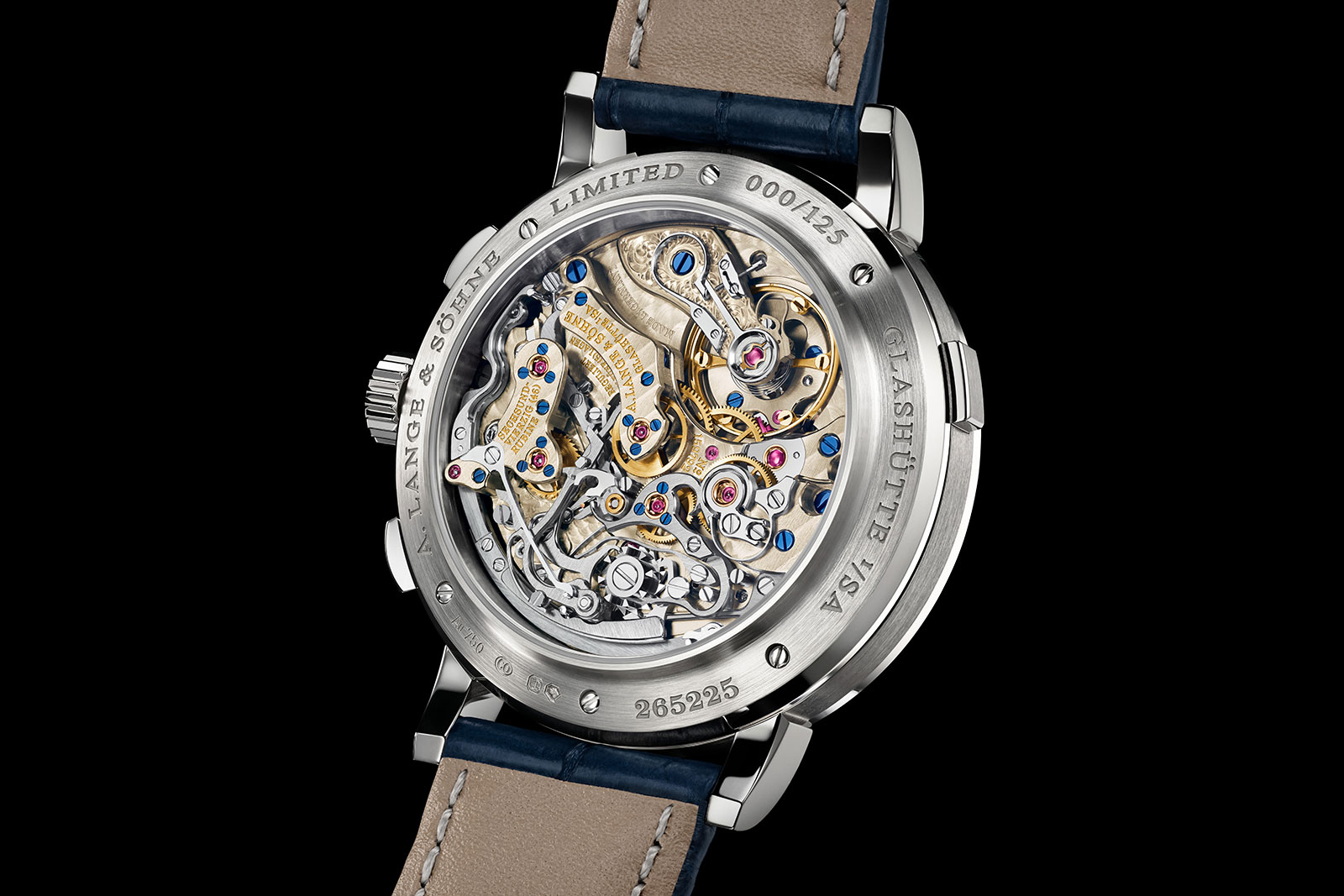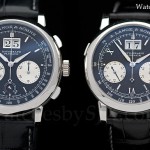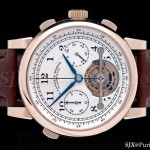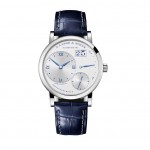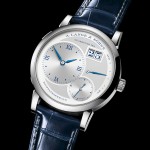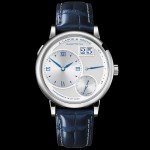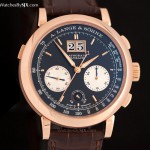Vacheron Constantin presents the world’s most complicated watch once again, surpassing its own record set by the Reference 57260 in 2015. Commissioned by the same American collector who owns the 57260, the Vacheron Constantin Les Cabinotiers “The Berkley” Grand Complication boasts many of the complications found in its predecessor but gains a world first, a perpetual Chinese calendar.
Made by the elite three-man team responsible for the 57260, the Berkley is a unique mechanical achievement with over two faces and over 60 complications.
It joins a major collection of pocket watches that includes not only the 57260 but also the King Farouk I grand complication made by Vacheron Constantin for the Egyptian monarch in the 1930s.
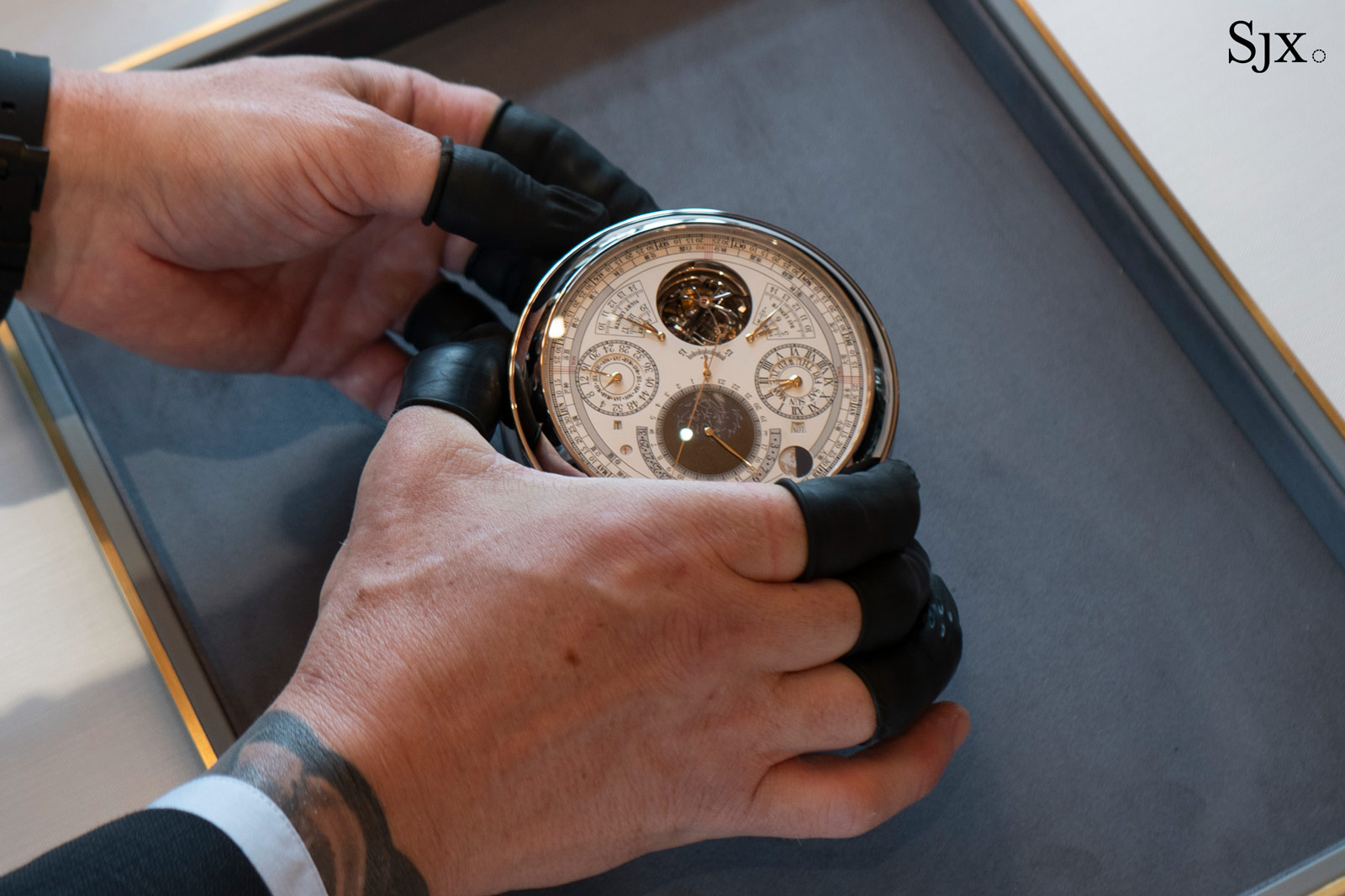
Initial thoughts
Named after its owner, the Berkley cannot be compared to commonplace high horology. Instead it sits among the historical greats – which happen to all be pocket watches – like the the Breguet Marie Antoinette, Leroy 01, and of course the Patek Philippe duo of the the Graves Super Complication and Calibre 89.
But now the Berkley trumps them all, having pushed the boundaries of possibility to sit at the zenith of watchmaking. The owner of the Berkley, insurance tycoon William R. Berkley, evidently has a keen appreciation of mechanical excellence.
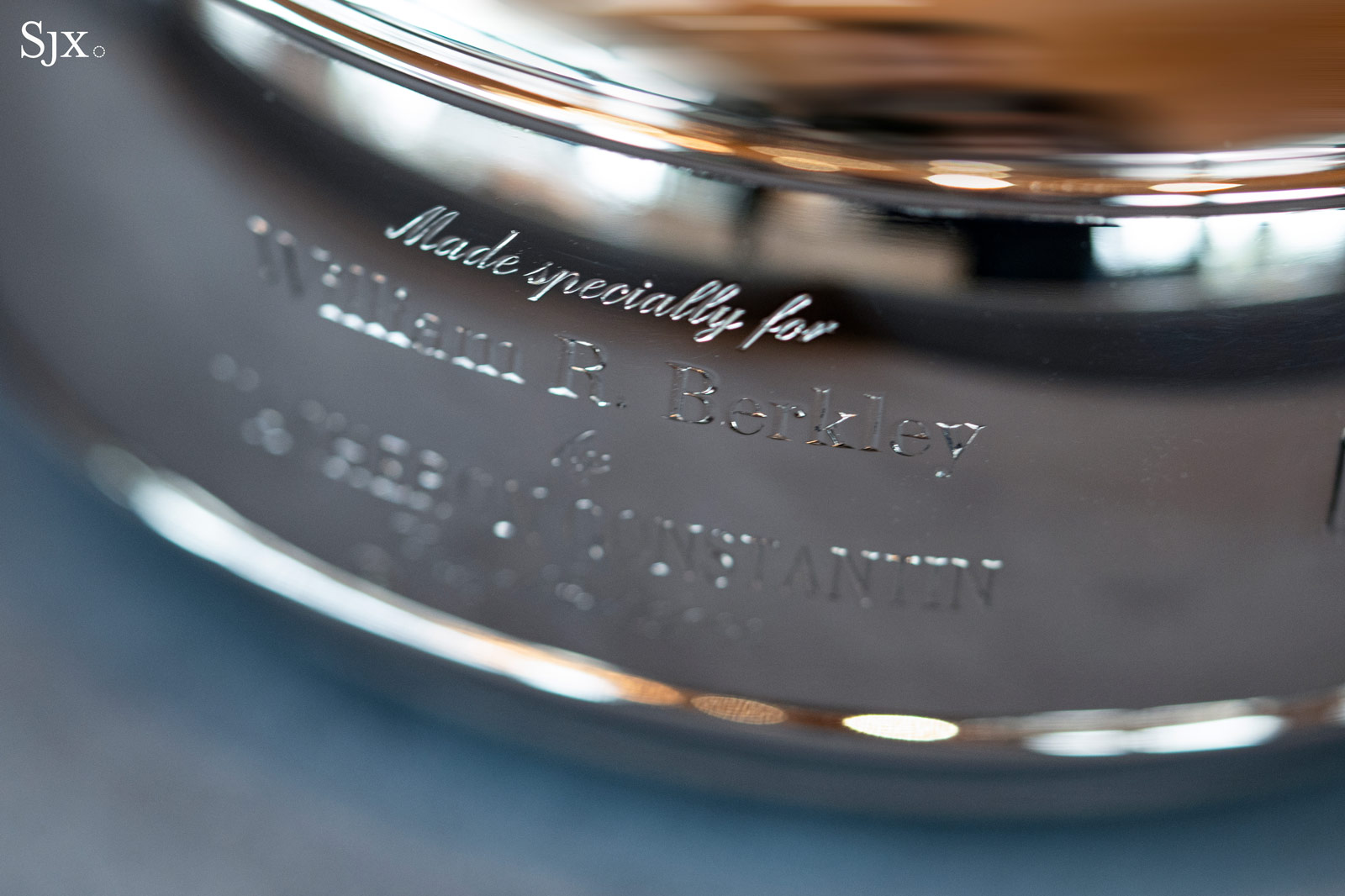
The watch is a masterpiece in the extreme art of micro engineering. But not only is it exceptionally complicated, it boasts a first in watchmaking – a perpetual Chinese calendar complication.
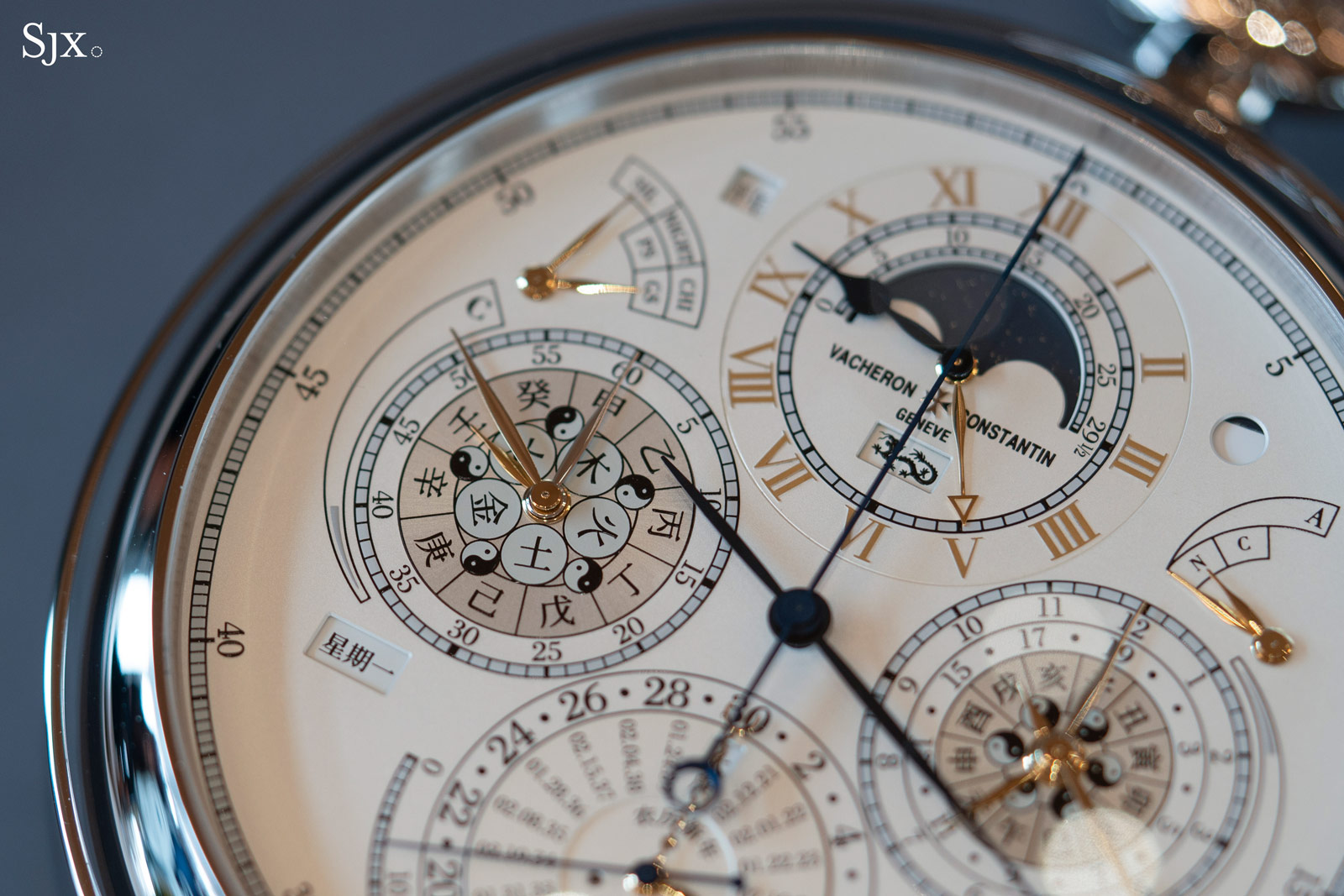
The Chinese calendar on the front
Understandably, the unique complication takes centerstage with the front dial showing the Chinese calendar indications, but it does so against a backdrop of many other complications – a staggering 63 to be precise.
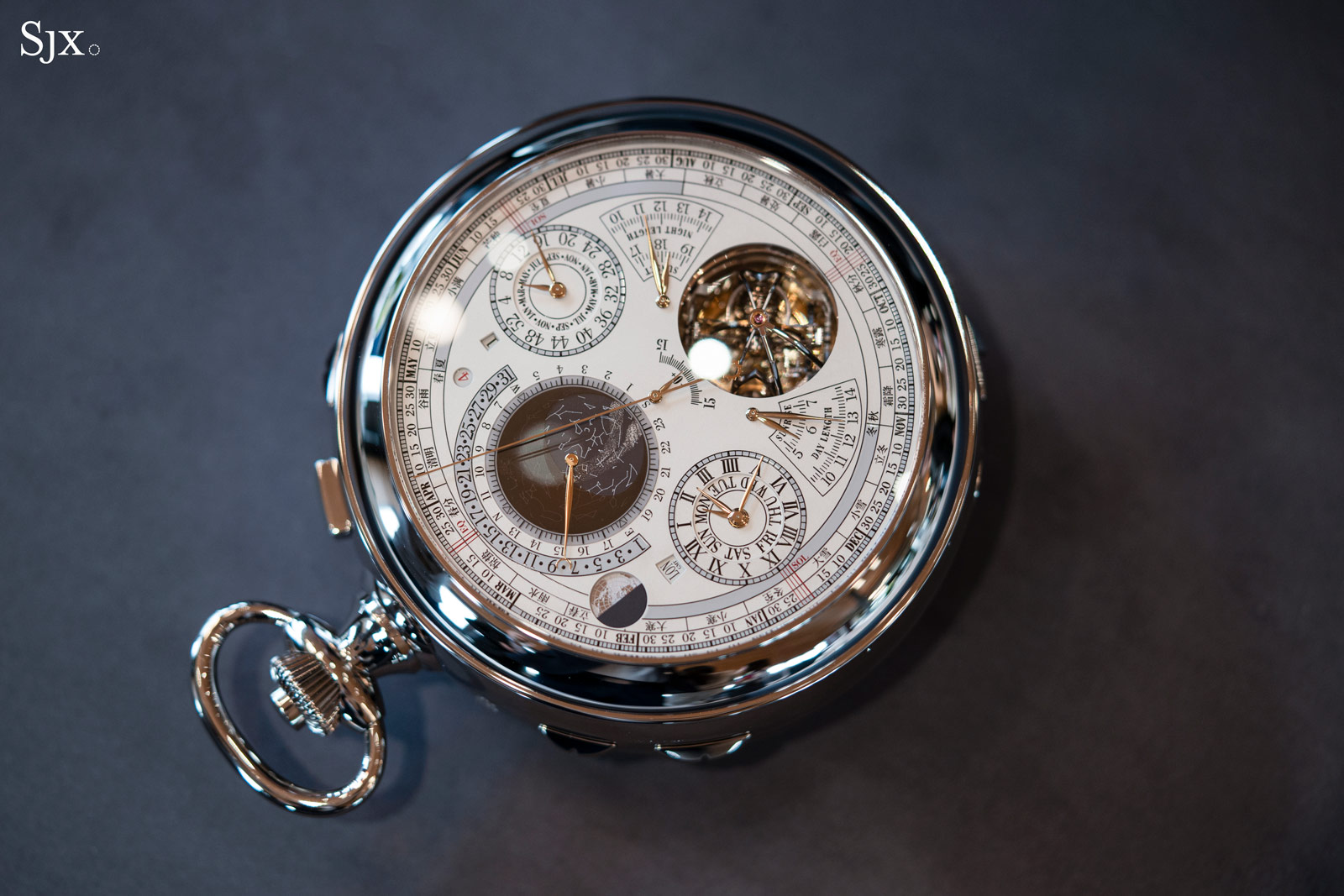
The reverse dial with a conventional Gregorian calendar
The Chinese calendar
If modelling the Gregorian calendar into a mechanical watch presents a challenge – particularly on a secular basis – then doing the same with the Chinese calendar is exponentially more complex.
Because the leap year cycles of the Gregorian calendar are straightforward repeating patterns, they don’t require substantial computation. The Chinese calendar, however, has many more irregularities and includes a number of variables, making for a very complex and layered system. That’s because the Chinese calendar is lunisolar, where the celestial movements of the Sun and Moon determine the lengths of months and years.
For example, the months are calculated from the new moon and are based on the lunation periods. As a result, a lunar year is 11 days shorter than a solar year, meaning an additional “embolismic” month is inserted every two to three years.
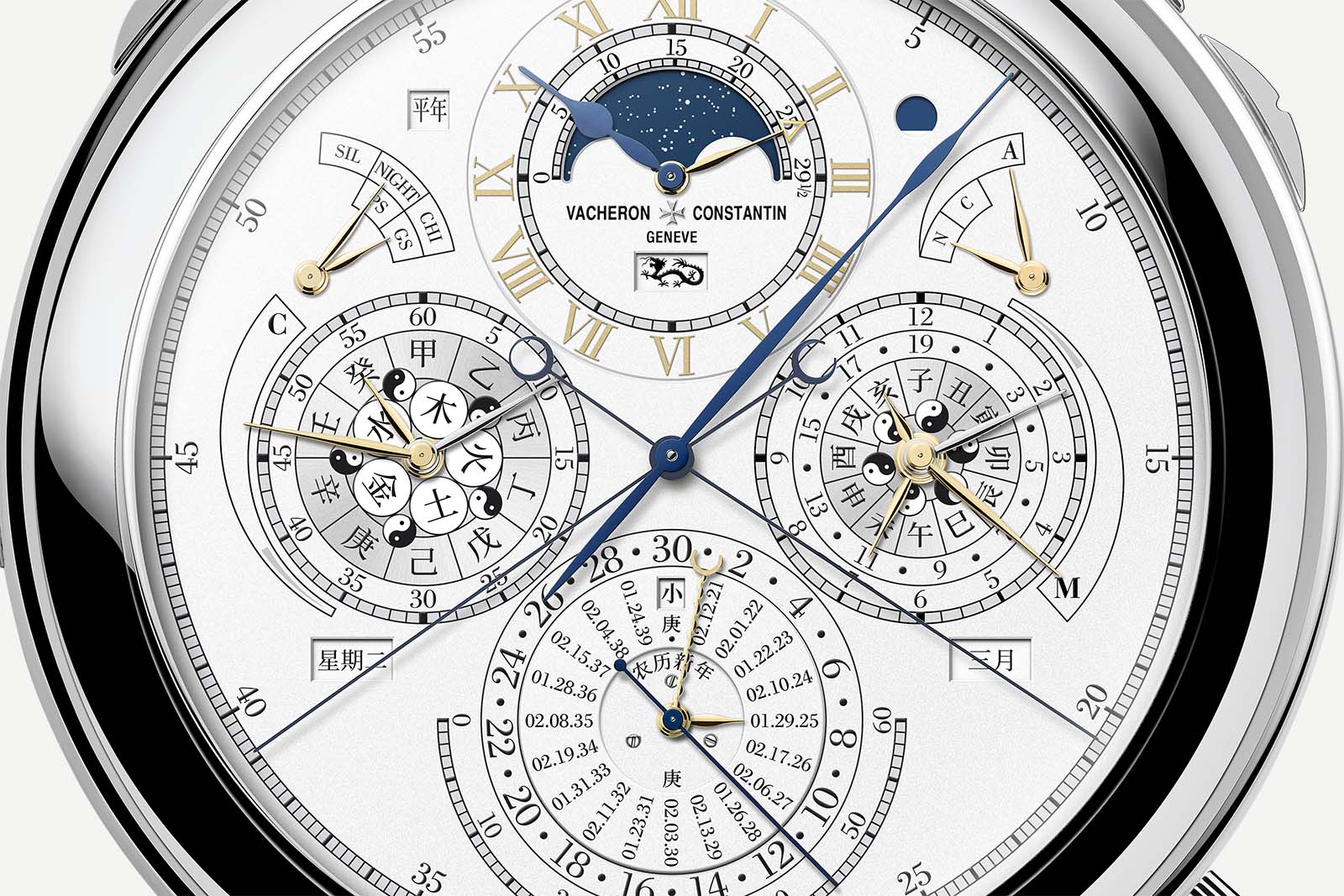
The Berkley’s Chinese calendar indications
The units of time in the Chinese calendar are numbered based on an association of two series of signs (10 celestial stems and 12 earthly branches) making for a total of 60 possible combinations. This is known as the sexagesimal cycle and can be employed in marking the passage of years, moths or days. The famous Chinese zodiac symbols are part of the sexagesimal cycle.
The layers and subtleties of the Chinese calendar go much deeper than this and listing them all would be a treatise in itself. However, it’s worth noting the complexity of the lunisolar calendar system and the consequent effort required to accommodate all its irregularities in a mechanical device.
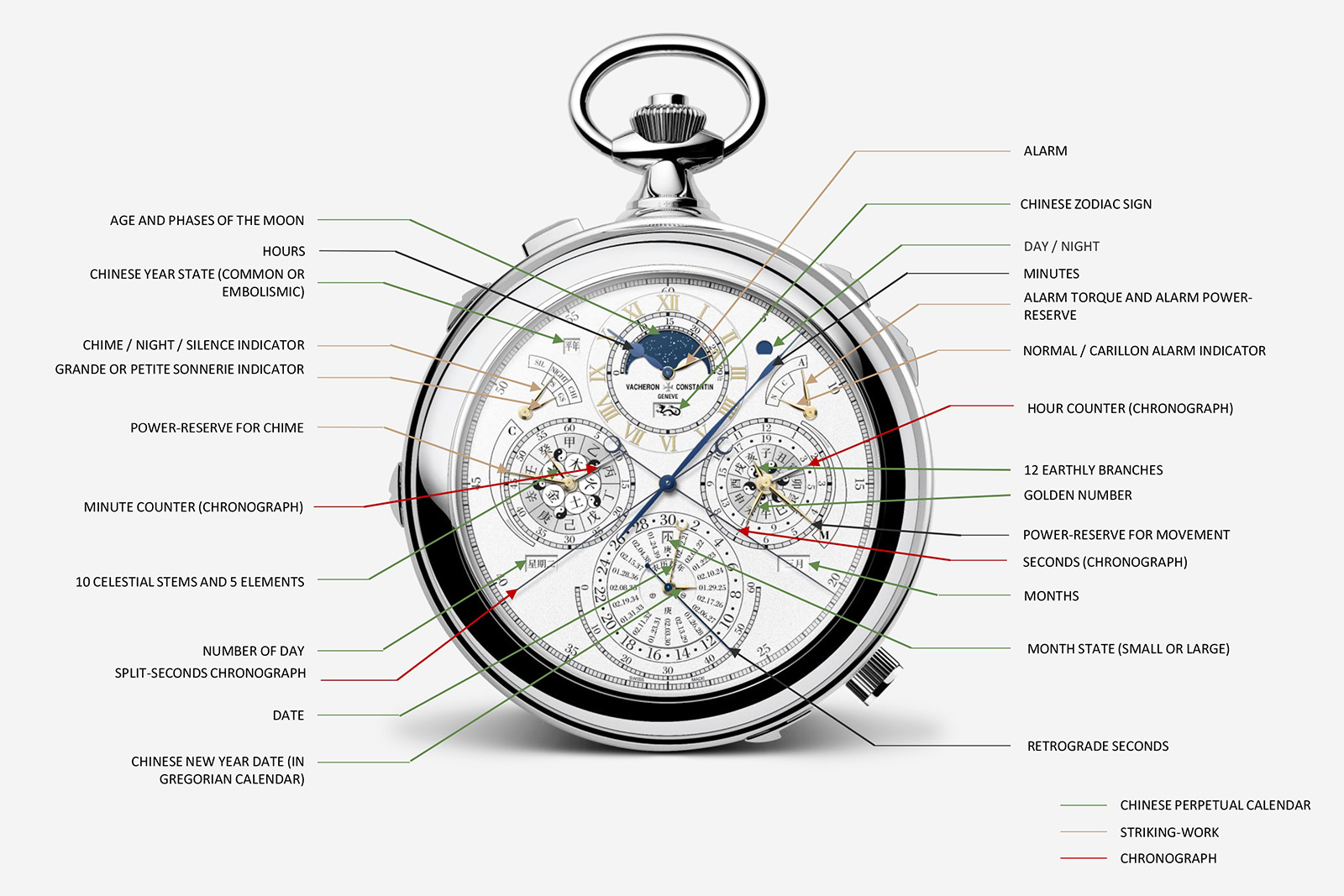
The various face indications, from Chinese calendar to chronograph
The calendar layers
Boasting a record-setting 63 complications, the cal. 3752 comprises of 2,877 components, plus a staggering 245 jewels, 31 hands, and 9 information-showing disks. It was constructed on the same ebauche used for the Reference 57260.
Apart from the world-first Chinese perpetual calendar, the Berkley lives up to the grande complication designation by incorporating a split-seconds chronograph, grande sonnerie with Westminster carillon, an alarm, and various other astronomic indications.
Structurally, the movement can be split up in modules, an architecture that is advantageous for ultra complications. Closest to the front is the Chinese perpetual calendar module. In order the accommodate all the irregularities of the lunisolar calendar and the derived cycles, Vacheron Constantin watchmakers had to first simulate and adapt various algorithms, then devise a suitable mechanical analogue.
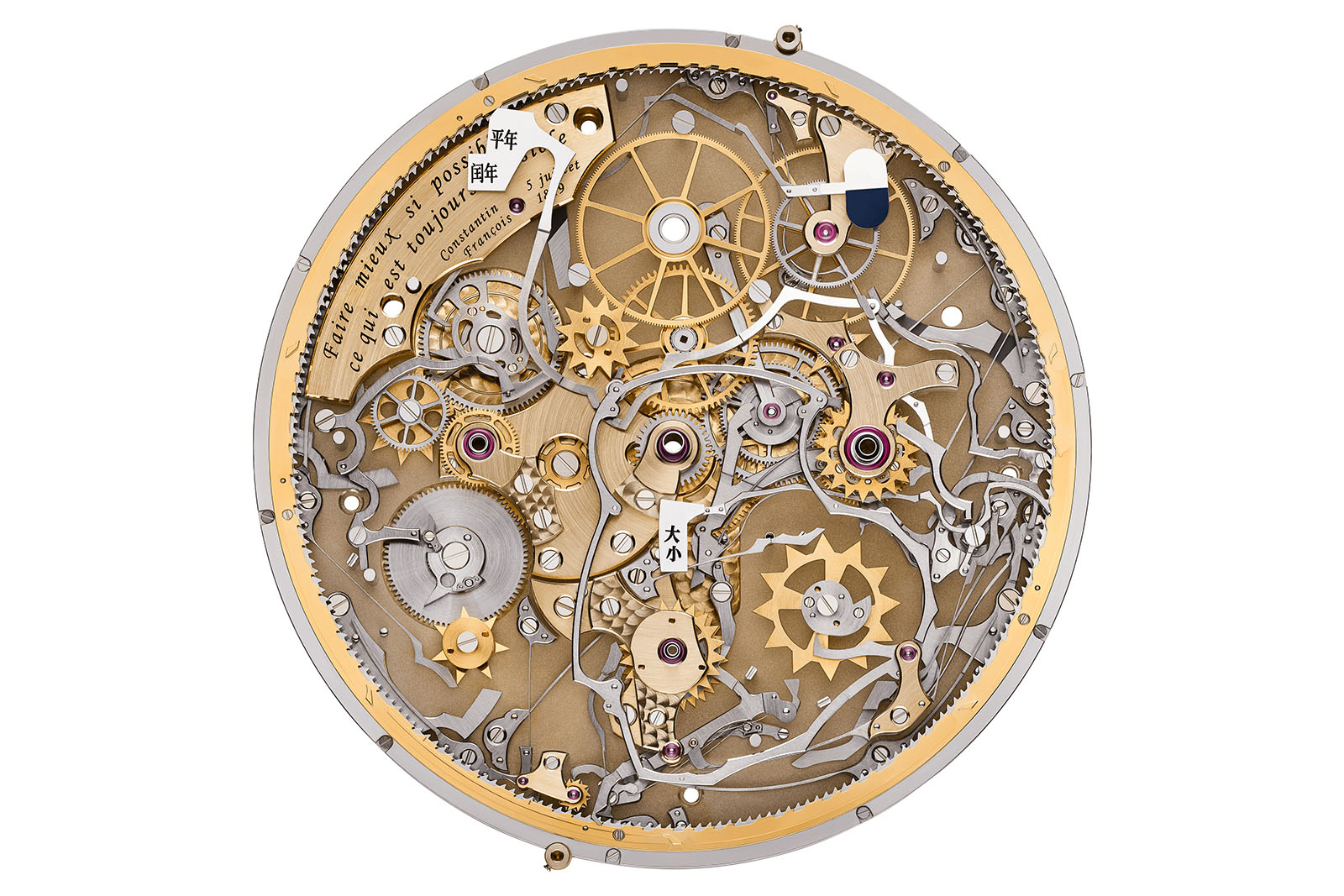
The Chinese calendar plate; Vacheron Constantin’s motto is discreetly engraved on the module
The result is a unique and specialised module with three different control units, each driving separate calendar indications. The module is programmed to be accurate up to the year 2200.
Notably, it can even display the date of the Chinese Lunar New Year, which varies from year to year. The Lunar New Year display remains current for 20 years, at which point the display disc needs to be replaced due to the variations of the calendar cycle. The watch will be delivered with eight additional discs that last till the year 2200.
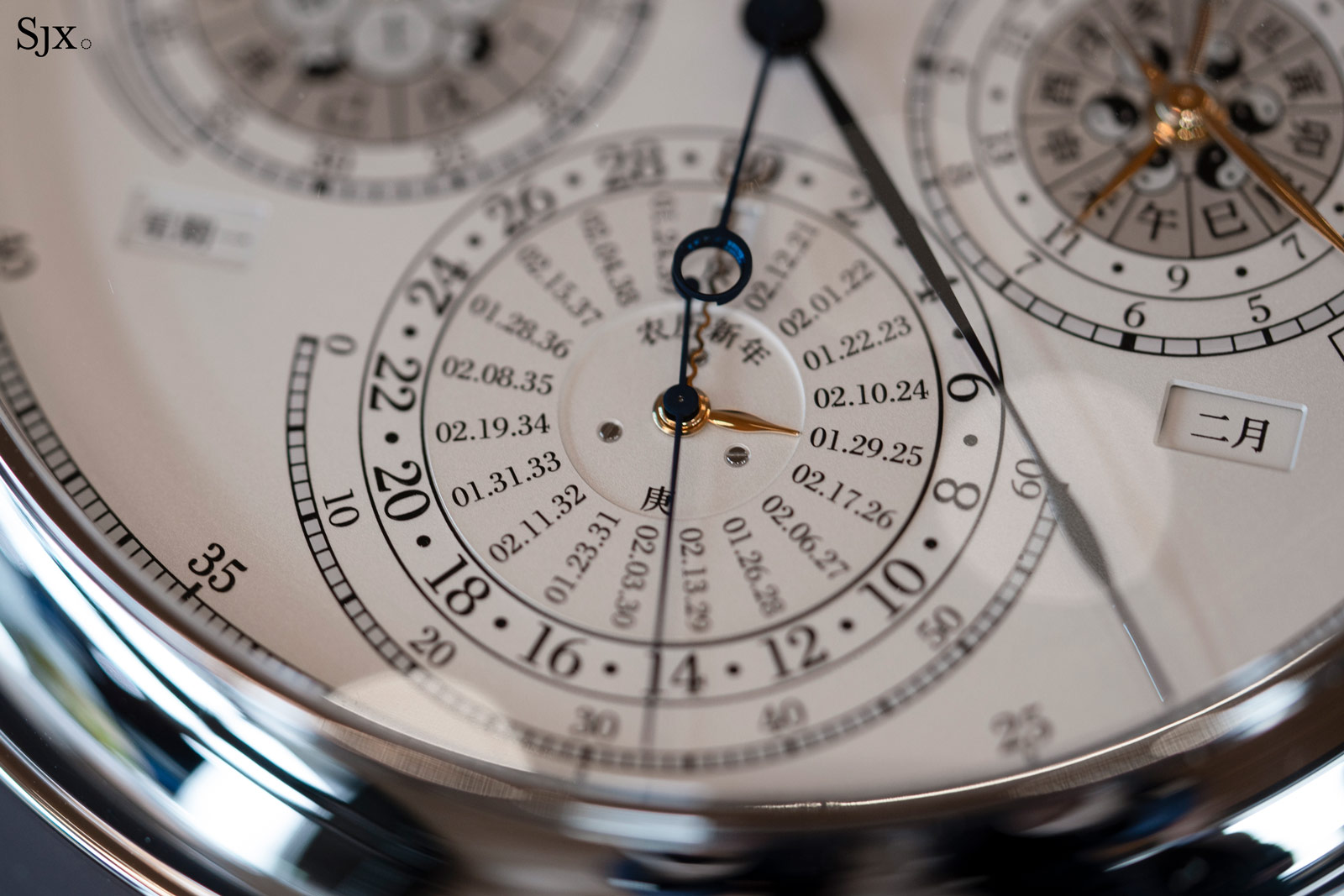
Compared to the Chinese perpetual calendar module, the Gregorian perpetual calendar module, situated just below the reverse dial, is simpler and more familiar. The week of the year is also displayed, a rarity among perpetual calendars.
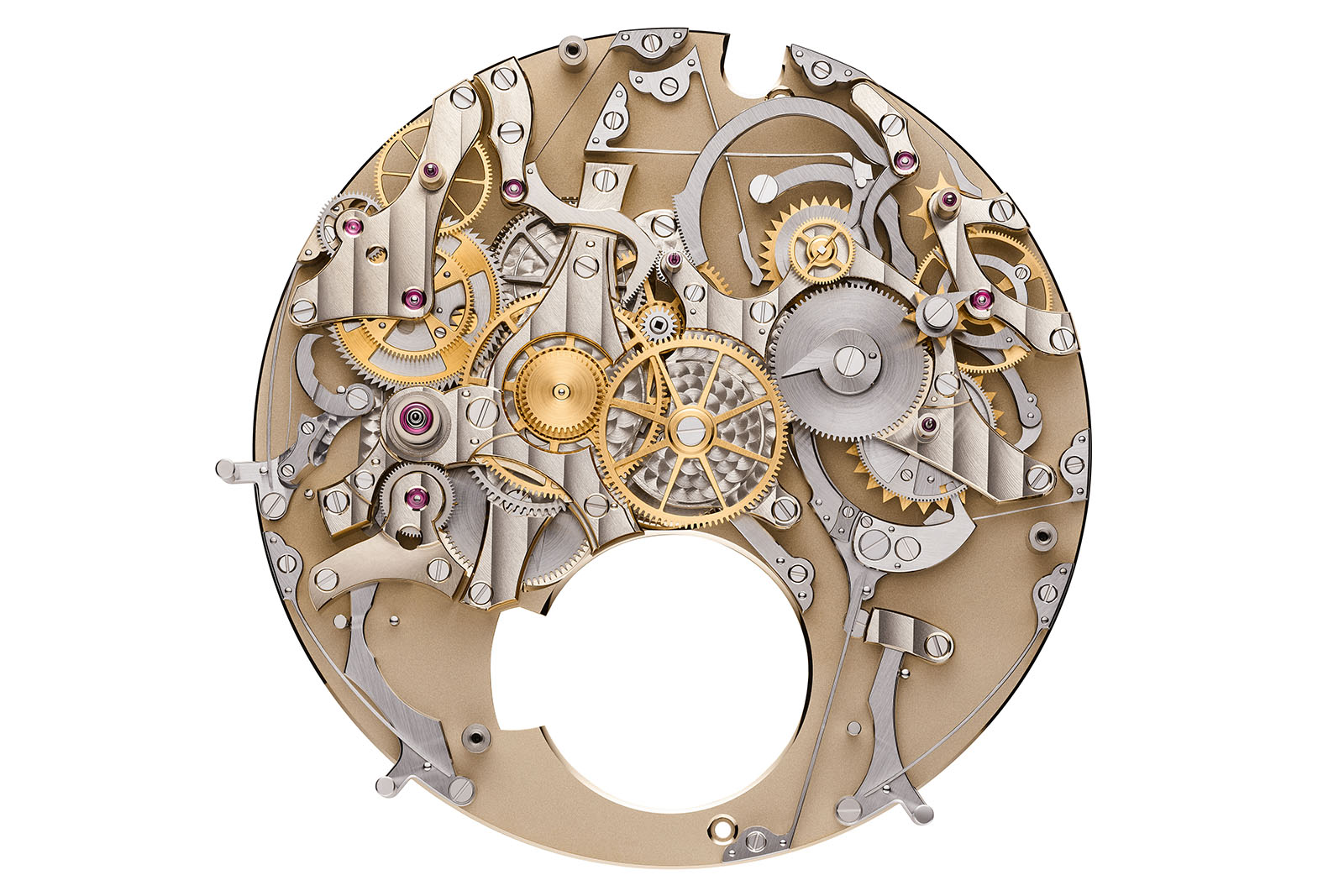
The Gregorian perpetual calendar plate
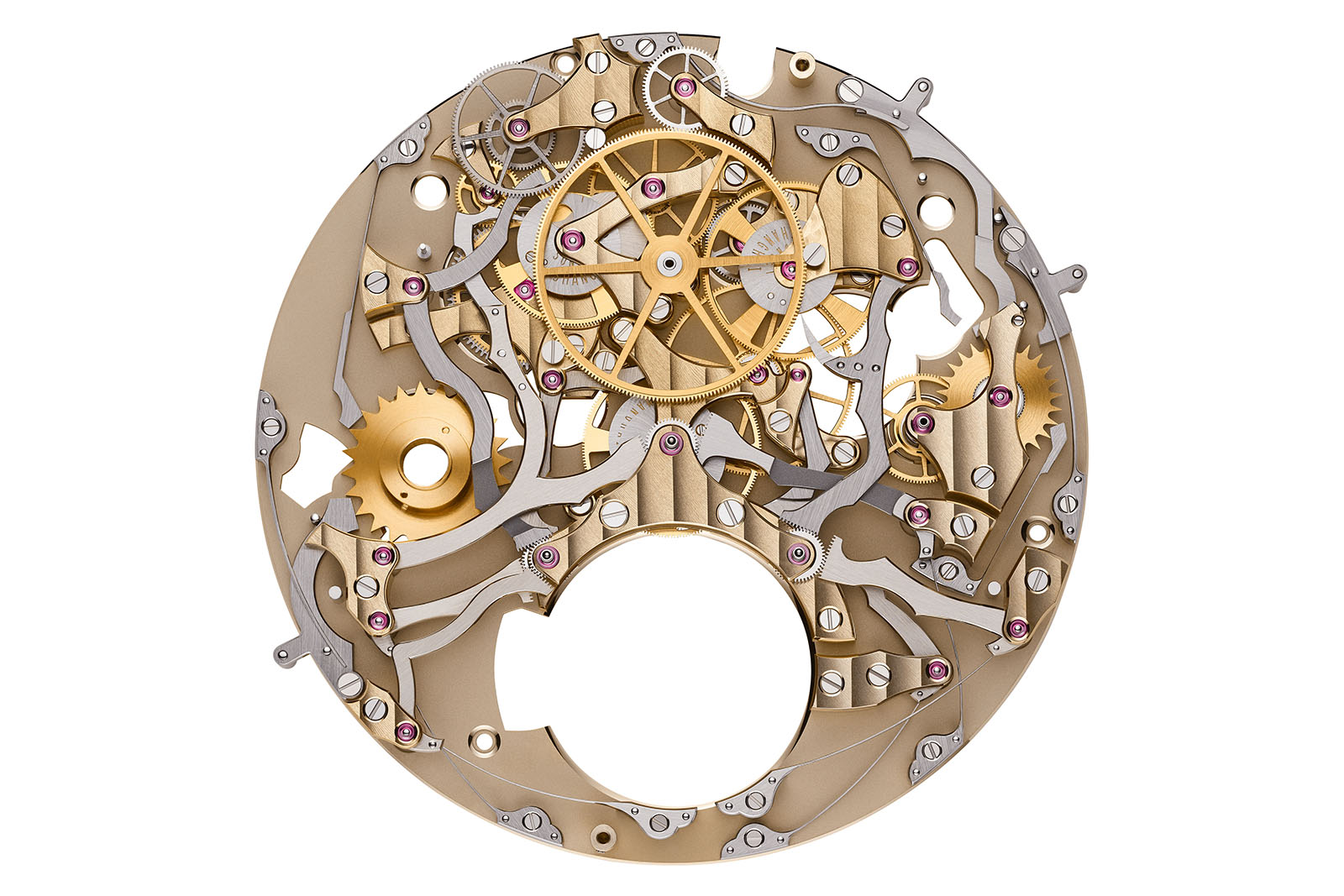
The astronomic complications module, which sits atop the Gregorian perpetual calendar plate
The Gregorian calendar display on the reverse dial is combined with various astronomical indications. The date is indicated with a retrograde gold hand and the date scale half-encircles a sky chart, which shows in real time the stars and constellations as seen from Shanghai. The celestial disk makes one rotation in one sidereal day for being as accurate as possible.
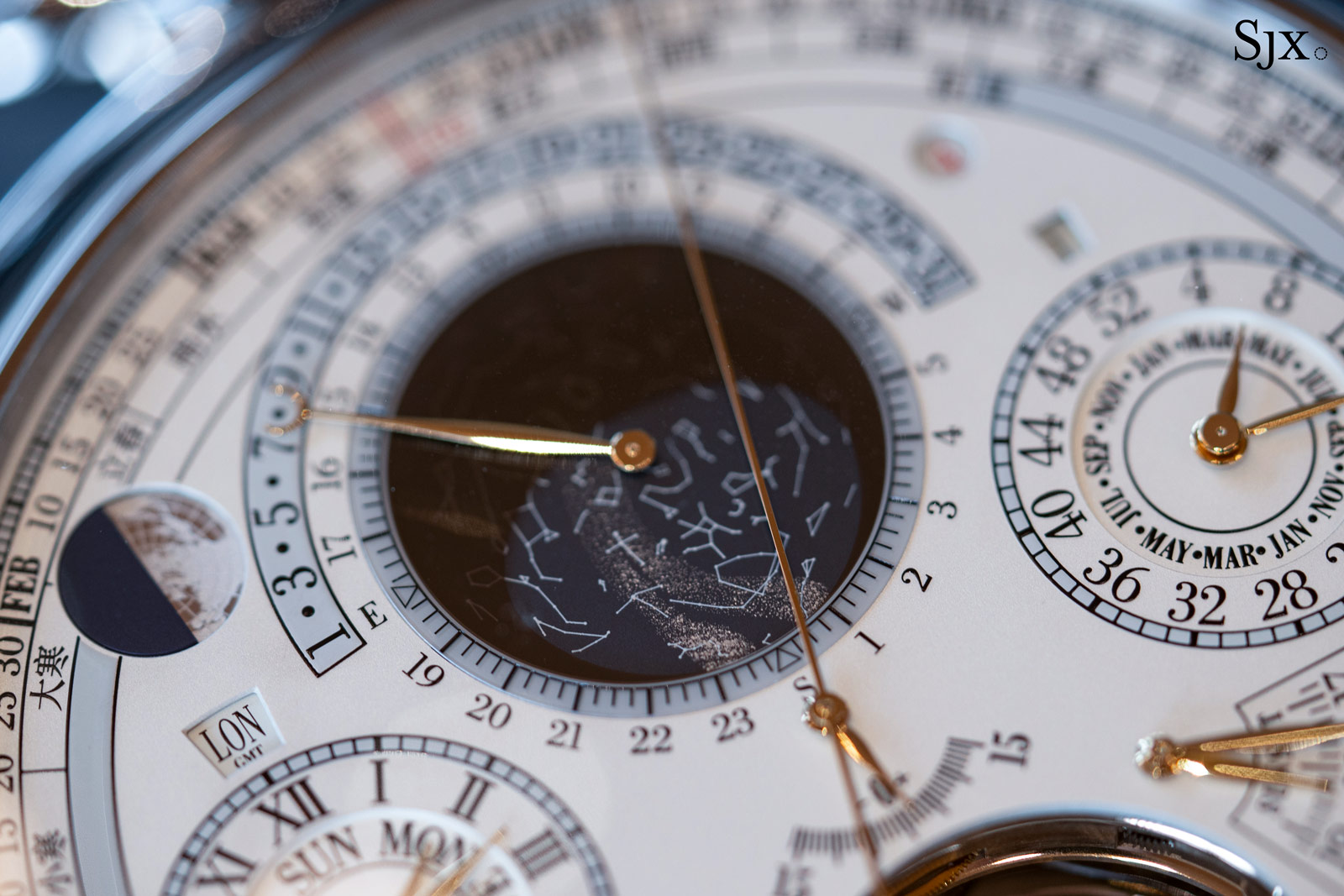
Underneath can be found a running equation of time indication, which shows the difference between the true (solar) day and the mean civil day of 24 hours. The difference is null only four times around the year.
Also visible on the reverse is the tourbillon, which is flanked by a pair of fan-shaped displays indicating sunrise and sunset times in Shanghai.
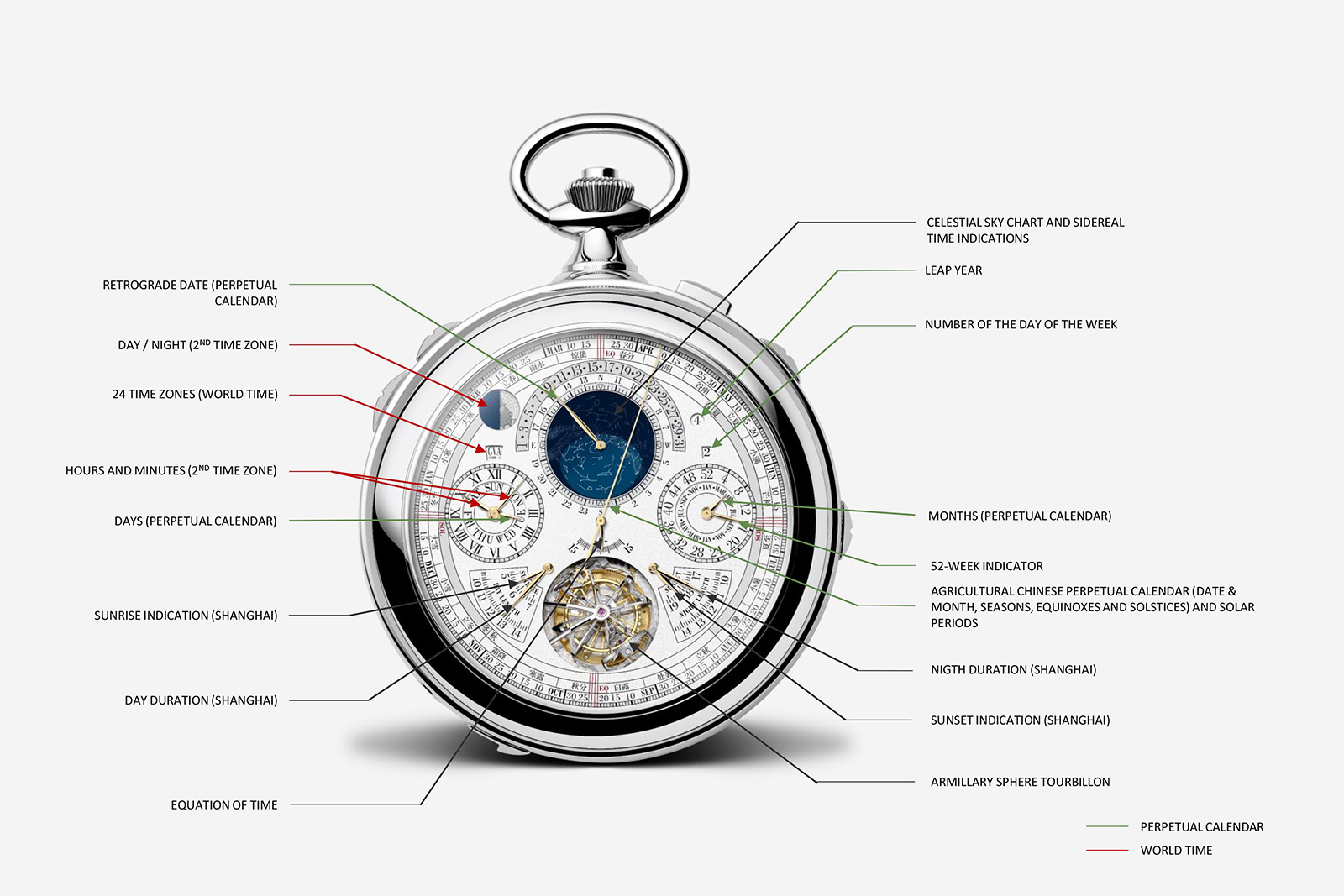
The back side indications
The chiming mechanism
The grande sonnerie and minute repeater form the deeper levels and base movement of the cal. 3752. Vacheron Constantin has equipped the Berkley with a Westminster carillon with five hammers and five gongs, allowing it to chime the same five-note tune sounded by Big Ben in London’s Houses of Parliament.
The grande sonnerie has the usual “strike” and “silent” modes, along with a “night” mode that deactivates the chiming works from 10 pm to 8 am.
Additionally, the owner can switch between grande and petite sonnerie – chiming the hours and quarters or just the hours – and also chime the time on-demand with the minute repeater. As is traditional for clockwatches, this power intensive complication runs on its own barrel.
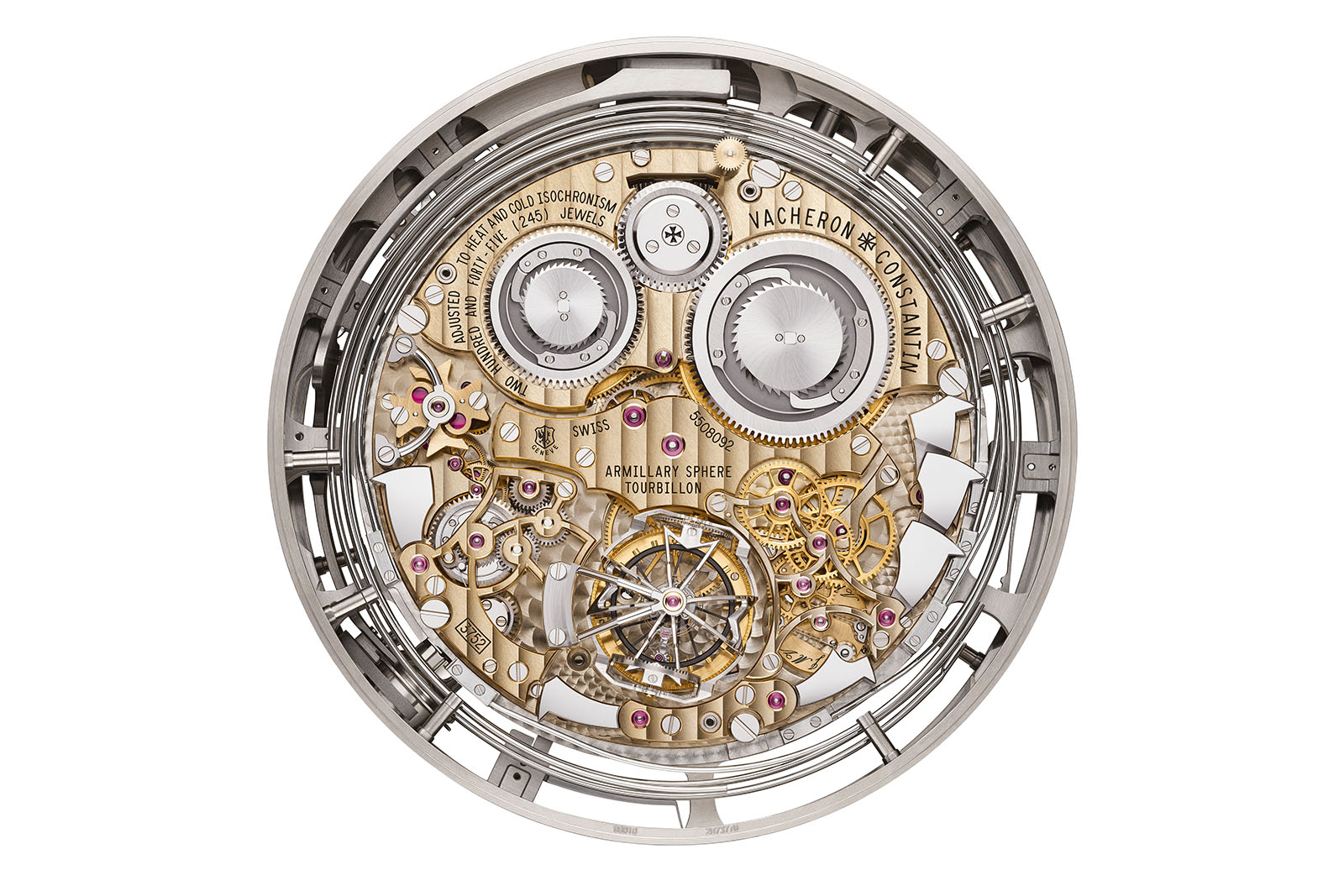
The base movement, with the strike works and timekeeping going train
The sonnerie complication is complemented by an alarm. The alarm is cleverly integrated as a subsystem, using its own barrel and strikework. It is set through a dedicated concealed crown that pops out of the case when a slide is engaged.
Through the hidden crown the owner can wind the alarm and also set the striking mode, as the alarm can either sound with its own hammer or chime via the Westminster carillon.
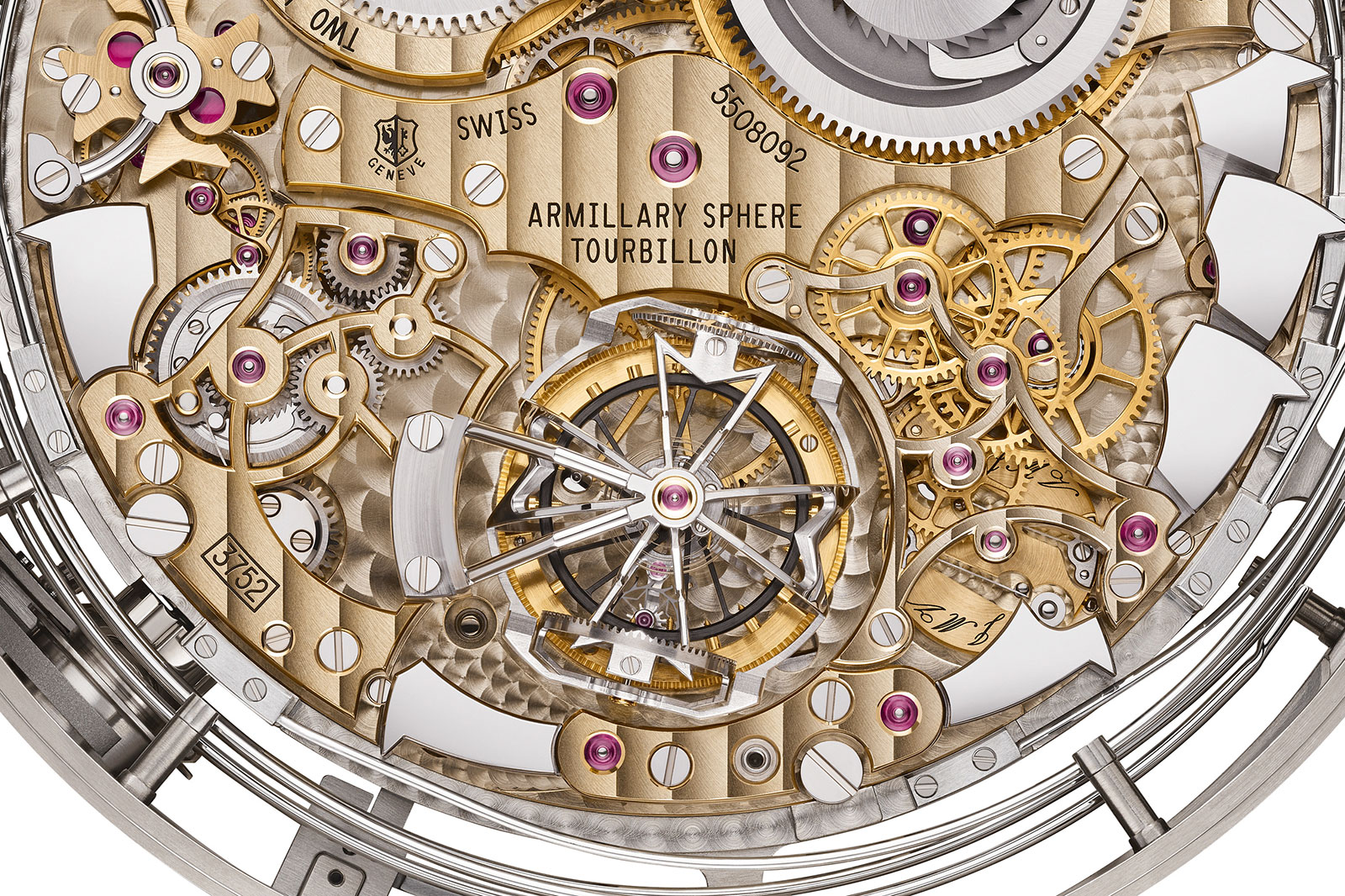
Tourbillon and timekeeping
The movement includes a Armillary Sphere tourbillon – a triple-axis regulator – that’s equipped with a spherical hairspring. The regulating organ is a feat on its own, as such an exotic tourbillon is particularly challenging to assemble and regulate. According to Vacheron Constantin, of the 11 years required to develop the movement, one whole year was dedicated to assembly and regulation.
While the chronometric utility of a triple-axis tourbillon is debatable (especially when installed in such a complicated movement) the spherical hairspring performs much better than its flat counterpart.
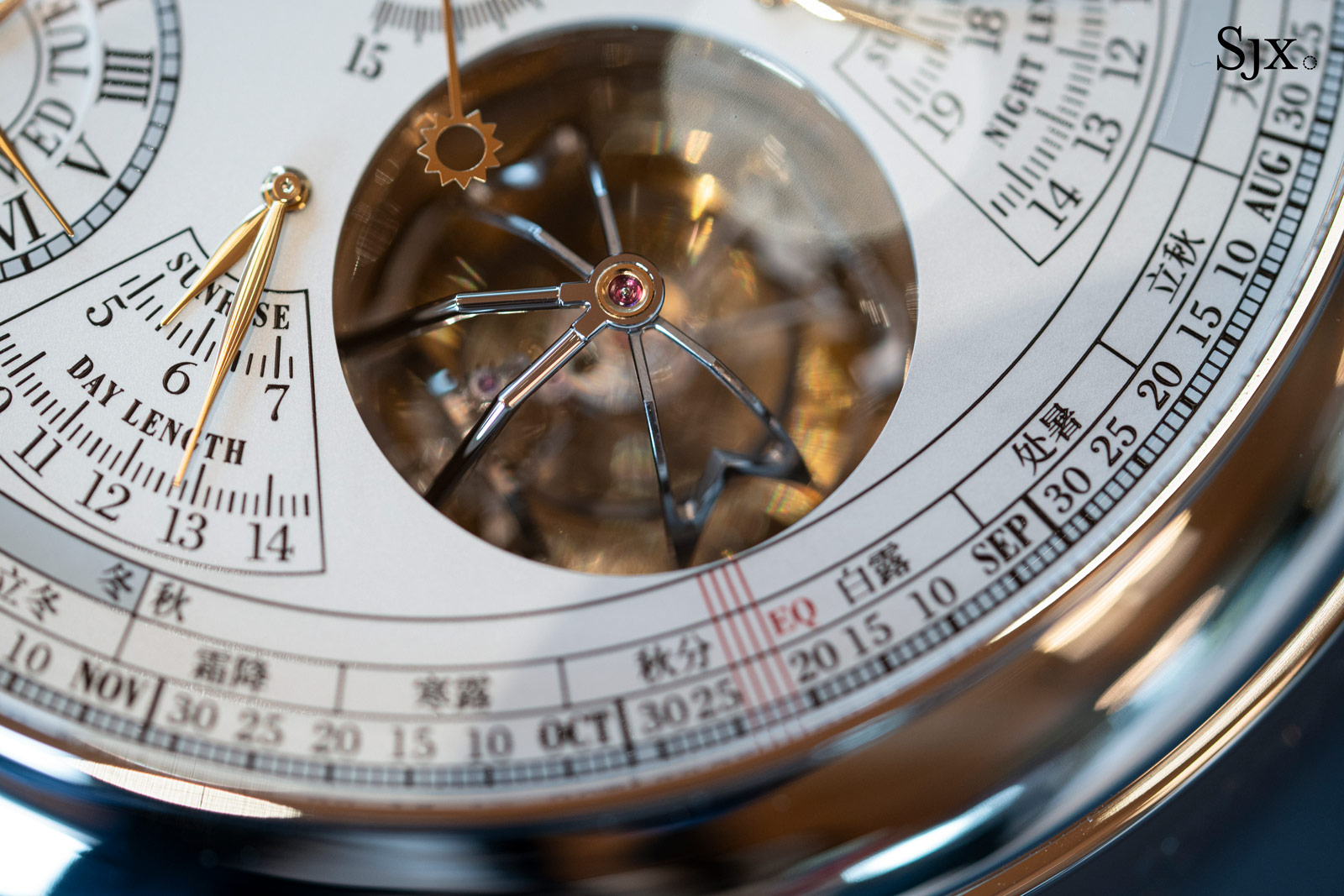
The movement is hallmarked with the Poinçon de Genève, which dictates not just aesthetics but also accuracy, implying the Berkley is also a precision timekeeper. The movement runs about 60 hours on a full wind – impressing for a timepiece with so many calendar and astronomical indications driven by a single barrel.
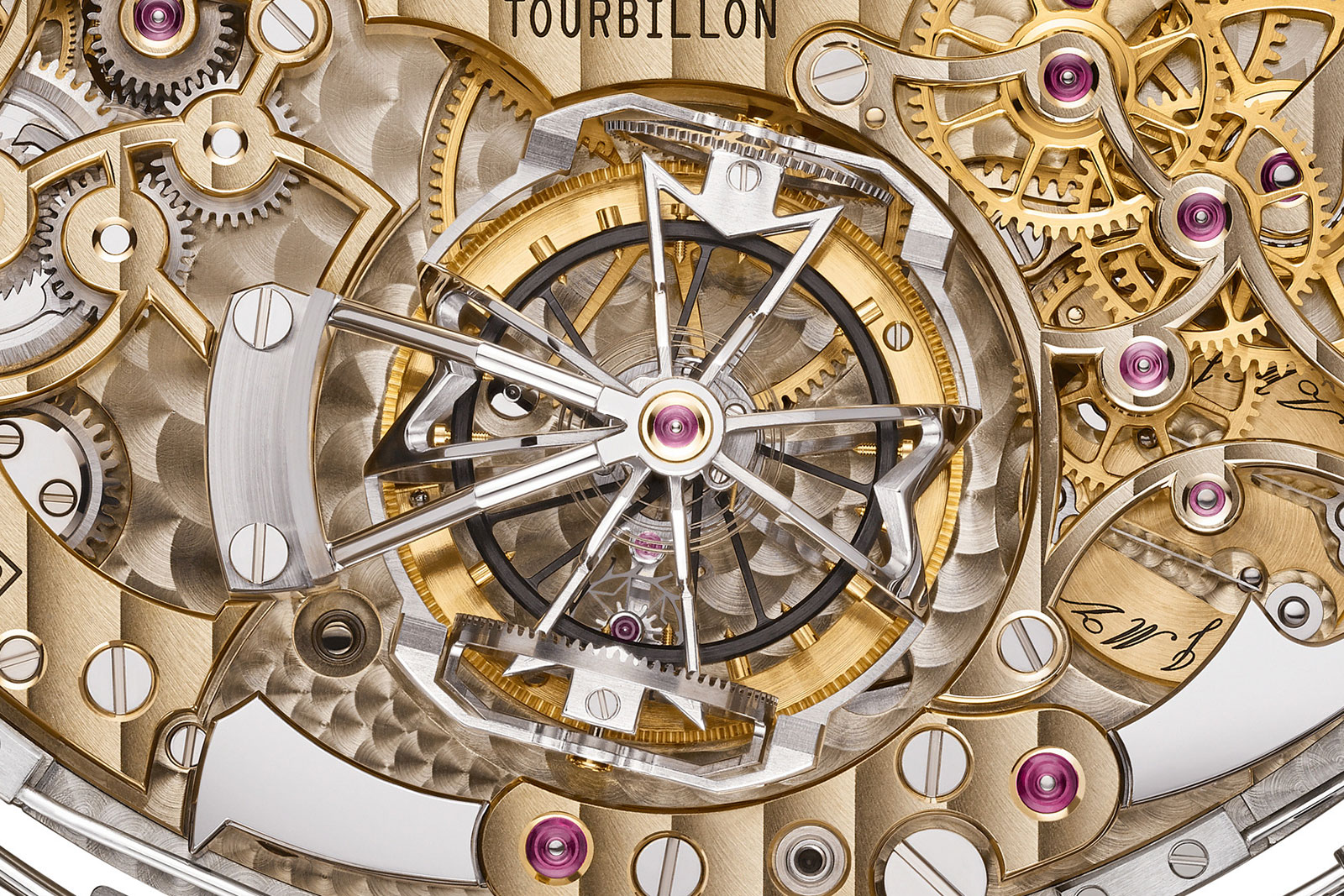
The time display on the front of the watch is regulator style with the hours, minutes and seconds on separate axis, mimicking precision clocks of old. The hour display can be found at 12 o’clock, the minutes in the centre, while the retrograde seconds sit at six o’clock. The time telling hands are in blued steel to differentiate them from the various gilded hands for the Chinese calendar.
A discreet but notable mechanism is the refinement of the retrograde seconds indication. A retrograde indication jumps back to its starting position at a fixed interval. For date indications the jump time is inconsequential, but for a seconds indicator the fraction of a second required to return to zero tends to add up over time and disrupt the display’s accuracy. Vacheron Constantin took extra steps to compensate for the jump time in the display, resulting in a seconds indicator that is always true.
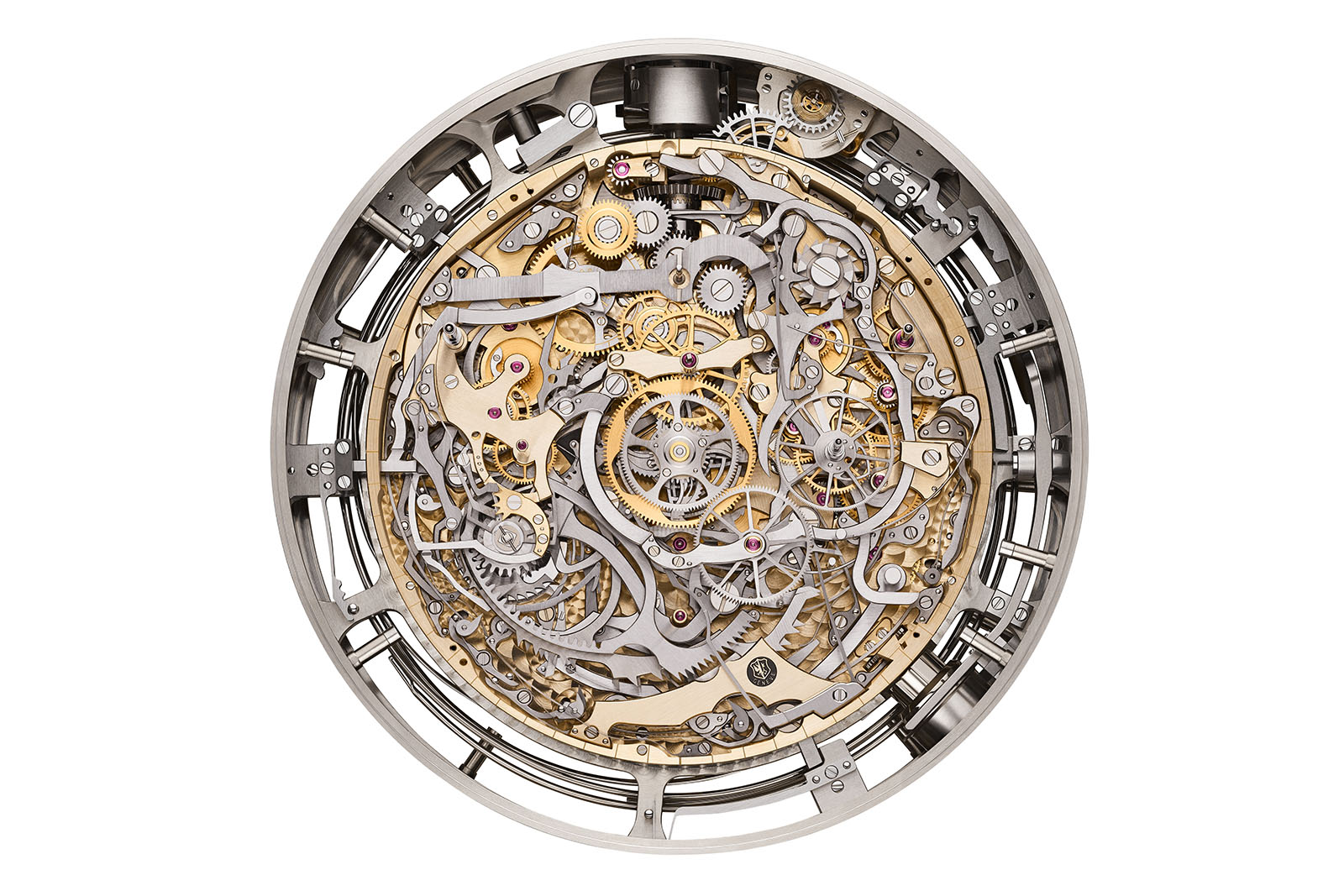
Base movement as seen from the front of the watch
Beyond measuring time for almost eternity, the Berkley can also record times on a much shorter scale with a split-seconds chronograph. The chronograph is started, stopped and reset via a pusher in the crown, while the split time is activated through a dedicated pusher next to the pendant. The chronograph itself is classical and simple, with a horizontal clutch and column wheels.
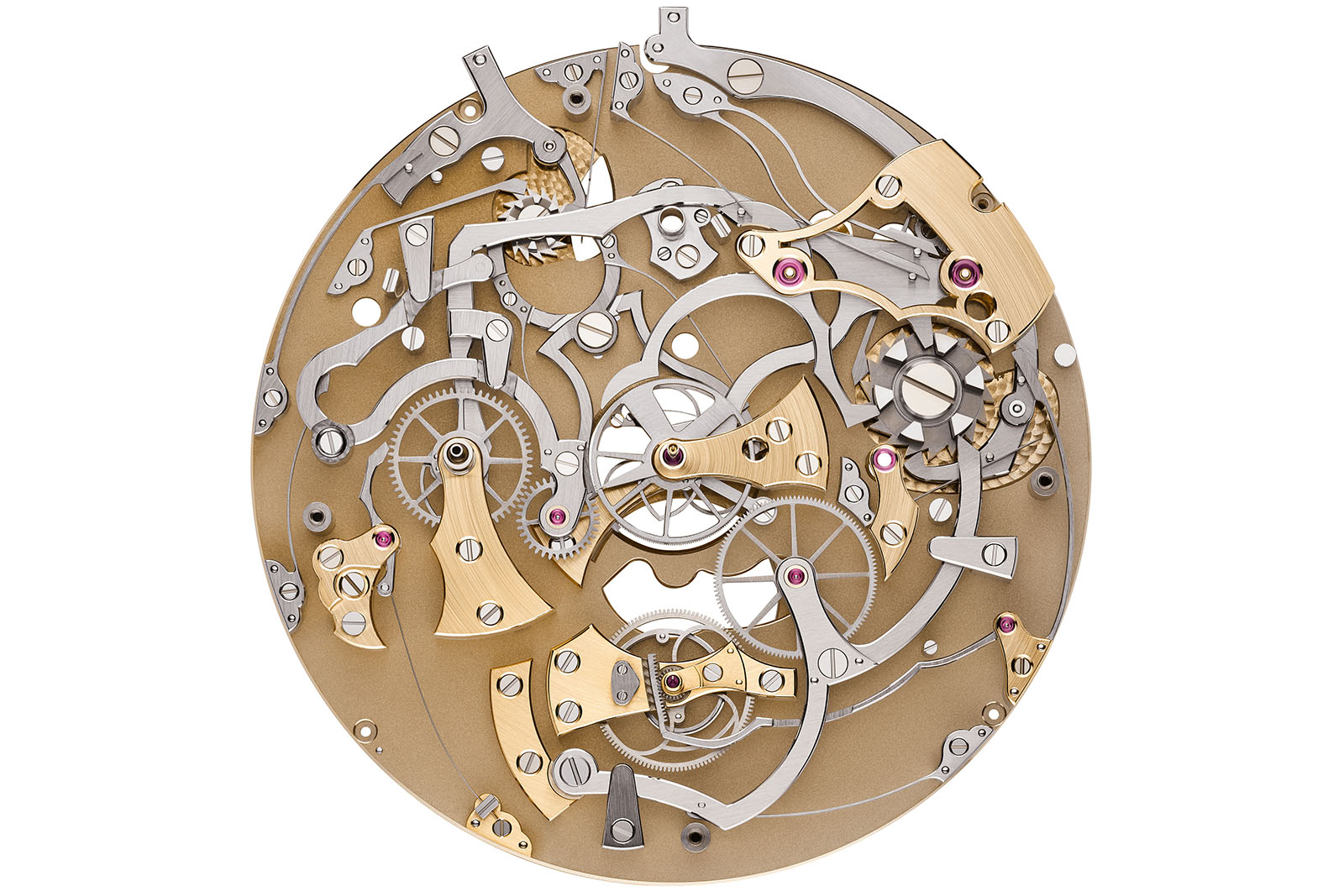
The chronograph and split-seconds plate
All the complications make the Berkley, like the 57260, a hefty timepiece. It measures 98 mm in diameter and 50.55 mm thick, resulting in a weight of just under one kilogram. The case is 18k white gold and entirely polished, with a number of slides and pushers on the case band.
Despite the size and complexity, the Berkley is finely detailed, with many of the parts made by hand in an artisanal manner in the specialist workshop dedicated to unique creations. Notably, the movement was conceived to be more decorative than that of the 57260, and so features more elegantly shaped bridges and levers, along with more inward angles along the bevelled edges.
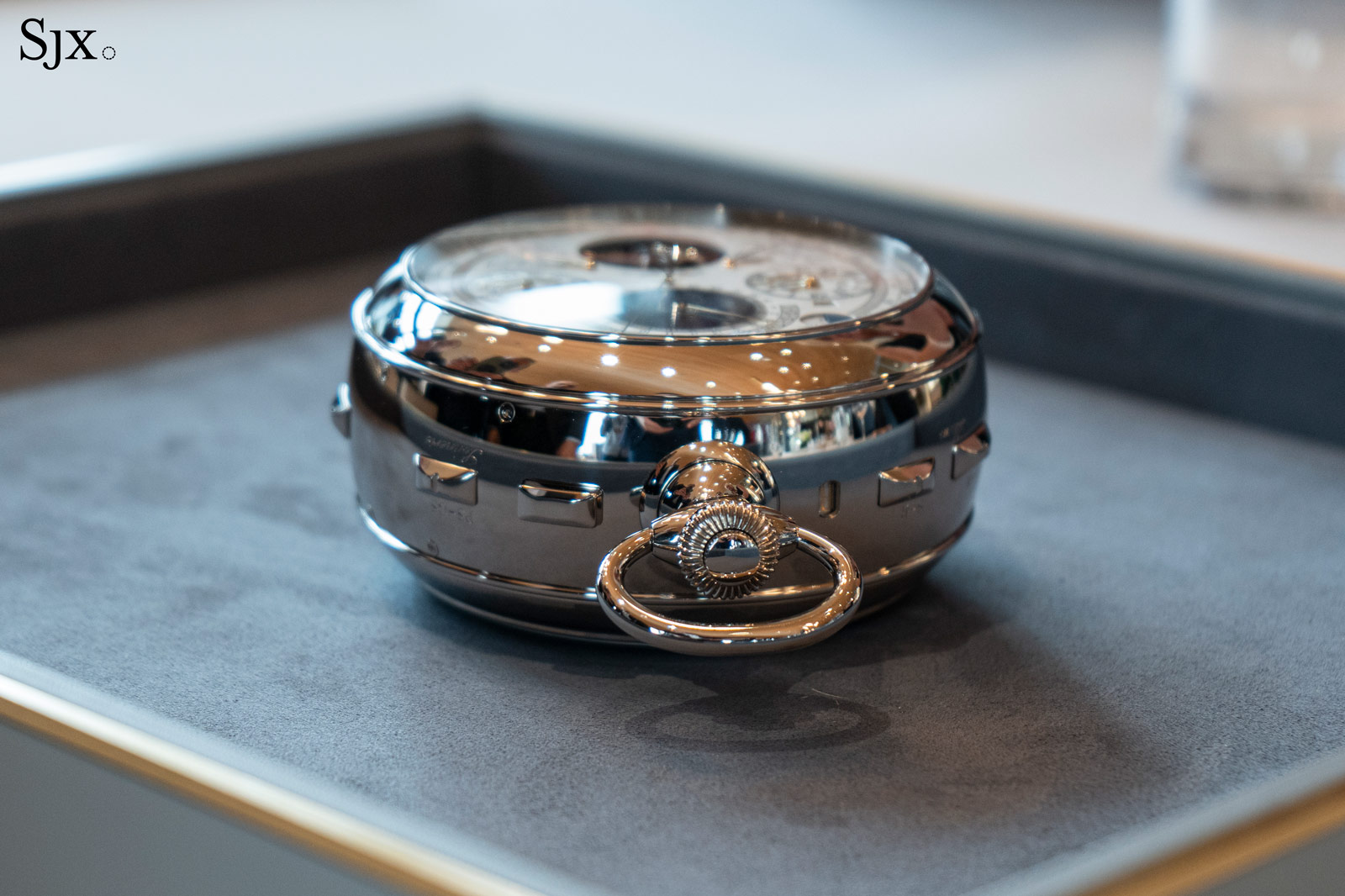
Addendum: The 63 complications
Time functions
1. Regulator-type hours, minutes and seconds for mean solar time
2. Retrograde second for mean solar time
3. Day and night indication for reference city
4. Visible spherical armillary tourbillon regulator with spherical balance spring
5. Armillary sphere tourbillon
6. World time indication for 24 cities
7. Second time zone hours and minutes (on 12 hours display)
8. Second time zone day and night indication
9. System to display the second time zone for the Northern or Southern
hemispheres
Perpetual Calendar
10. Gregorian perpetual calendar
11. Gregorian days of the week
12. Gregorian months
13. Gregorian retrograde date
14. Leap-year indication and four-year cycle
15. Number of the day of the week (ISO 8601 calendar)
16. Indication for the number of the week within the year (ISO 8601 calendar)
Chinese Perpetual Calendar
17. Chinese perpetual calendar
18. Chinese number of the day
19. Chinese name of the month
20. Chinese date indication
21. Chinese zodiac signs
22. 5 elements and 10 celestial stems
23. 6 energies and 12 earthly branches
24. Chinese year state (common or embolismic)
25. Month state (small or large)
26. Indication for the Golden number within the 19-year Metonic cycle
27. Indication for the date of the Chinese New Year in the Gregorian calendar
Chinese Agricultural Perpetual Calendar
28. Chinese agricultural perpetual calendar
29. Indications of seasons, equinoxes and solstices with solar hand
Functions of the Astronomic Calendar
30. Sky chart (calibrated for Shanghai)
31. Sidereal hours
32. Sidereal minutes
33. Sunrise time (calibrated for Shanghai)
34. Sunset time (calibrated for Shanghai)
35. Equation of time
36. Length of the day (calibrated for Shanghai)
37. Length of the night (calibrated for Shanghai)
Lunar Calendar
38. Phases and age of the moon, one correction every 1027 years
Functions of the 3 column-wheel chronograph
39. Fifths of a second chronograph (1 column wheel)
40. Fifths of a second split-second chronograph (1 column wheel)
41. 12-hour counter (1 column wheel)
42. 60-minute counter
Alarm
43. Progressive alarm with single gong and hammer striking
44. Alarm strike / silence indicator
45. Choice of normal alarm or carillon striking alarm indicator
46. Alarm mechanism coupled to the carillon striking mechanism
47. Alarm striking with choice of grande or petite sonnerie
48. Alarm power-reserve indication
49. System to disengage the alarm barrel when fully wound
Westminster Carillon Striking Functions
50. Carillon Westminster chiming with 5 gongs and 5 hammers
51. Grande sonnerie passing strike
52. Petite sonnerie passing strike
53. Minute repeating
54. Night silence feature (between 22.00 and 08.00 hours – hours chosen by the owner)
55. System to disengage the striking barrel when fully wound
56. Indication for grande or petite sonnerie modes
57. Indication for silence / striking / night modes
Further functions
58. Power-reserve indication for the going train
59. Power-reserve indication for the striking train
60. Winding crown position indicator
61. Winding system for the double barrels
62. Hand-setting system with two positions and two directions
63. Concealed flush-fit winding crown for the alarm mechanism
Key facts and price
Vacheron Constantin Les Cabinotiers “The Berkley” Grand Complication
Ref. 9901C/000G-B472
Diameter: 98 mm
Height: 50.55 mm
Material: 18k white gold
Crystal: Sapphire
Water resistance: Moisture protected
Movement: Cal. 3752
Functions: Grande complication with 63 functions, including a Chinese perpetual calendar
Winding: Manual wind
Frequency: 18,000 vibrations per hour (2.5 Hz)
Power reserve: 60 hours
Limited edition: Single-piece edition
Availability: Client commission and not available
Price: Undisclosed
For more information, visit Vacheron-constantin.com.
Back to top.